POWER
High hopes for the hydrogen economy P22
FORMWORK & SCAFFOLDING
Meeting the demands of modern construction P33
DIAMONDS
Fresh prospects for local benefit P44

LEADERSHIP
Unravelling the ‘crisis of confidence’ P47

P42
VENTILATION



Keeping personnel safe underground
P35 HAULERS
Driving operations forward
P12
PROPAK WEST AFRICA

Celebrating ten years of innovation
P50
“Innovation and investment in the region continue to be driven by the triple need to support greater financial inclusion, ensure efficient peer-to-peer payments within and across borders, and deliver secure remittances.”

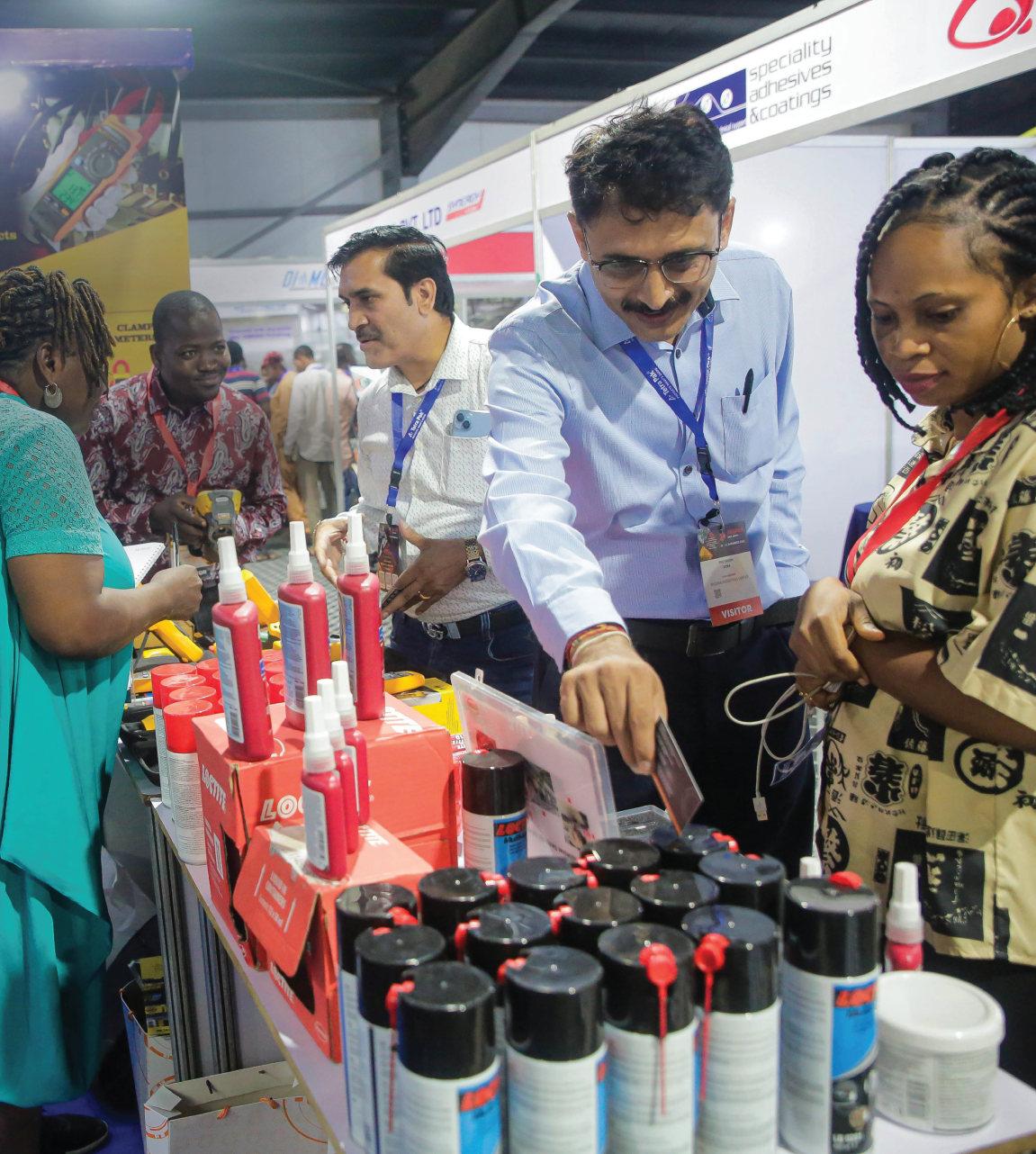
www.africanreview.com
2023 59 YEARS SERVING BUSINESS IN AFRICA SINCE 1964
SEPTEMBER
Auguste Claude-Nguetsop, partner & head, banking sector advisory services, KPMG Southern Africa

Editor: Robert Daniels
Email: robert.daniels@alaincharles.com
Editorial and Design team: Prashanth AP, Sania Aziz, Miriam Brtkova, Shivani Dhruv, Matthew Hayhoe, Leah Kelly, Rahul Puthenveedu, Madhuri Ramesh, Madhurima Sengupta, Louise Waters and Minhaj Zia
Publisher: Nick Fordham
Head of Sales: Vinay Nair
Email: vinay.nair@alaincharles.com
Magazine Manager: Jane Wellman
Tel: +44 207 834 7676 Fax: +44 207 973 0076
Email: jane.wellman@alaincharles.com
India TANMAY MISHRA
Tel: +91 98800 75908
Email: tanmay.mishra@alaincharles.com
UK RICHARD ROZELAAR
Tel: +44 20 7834 7676 Fax: +44 20 7973 0076
Email: richard.rozelaar@alaincharles.com
Head Office: Alain Charles Publishing Ltd, University House, 11-13 Lower Grosvenor Place, London SW1W 0EX, United Kingdom
Tel: +44 (0)20 7834 7676, Fax: +44 (0)20 7973 0076
Middle East Regional Office: Alain Charles Middle East FZ-LLC, Office L2-112, Loft Office 2, Entrance B, PO Box 502207, Dubai Media City, UAE, Tel: +971 4 448 9260, Fax: +971 4 448 9261
Production: Rinta Denil, Ranjith Ekambaram, Nelly Mendes and Infant Prakash
E-mail: production@alaincharles.com
Chairman: Derek Fordham
Printed by: Buxton Press
Printed in: AUGUST 2023
ISSN: 0954 6782
SUBSCRIPTIONS:
To subscribe: visit www.africanreview.com/subscribe For any other enquiry email circulation@alaincharles.com
Editor’s Note
Welcome to the September issue of African Review, providing you with the critical intelligence required to ensure your business flourishes in the twilight of 2023 and beyond.

Although international developments continue to disrupt global markets and shower future doubt over Africa’s future prosperity, there is certainly no dampening the high hopes around hydrogen. In our focused report, we uncover the vast potential the hydrogen economy holds for the continent and outline the numerous continental efforts being pursued to take advantage of it (page 22). In our power section, you can also find the thoughts of GFE’s Ben Whitmarsh as he considers the generator market in more detail (page 25) and Clarke Energy’s Alex Marshall who explores the hot topic of microgrids (page 26).
Before this, be sure to find our preview of Propak West Africa which will be bringing together packaging, printing, plastics and food processing professionals together for the 10th year (page 12).
Kenya’s drive for affordable housing is highlighted in our construction section (page 31), alongside the innovations defining formwork & scaffolding (page 33); mini-excavators (page 34); and haulers (page 35).

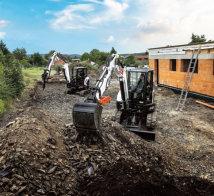
Pressing ahead, you can find two pieces dedicated to keeping mining personnel safe underground in consideration of ventilation systems (page 42) and fire safety (page 46). For those new to steering such operations, don’t miss the commentary from Felicity Morel-EdnieBrown of Morel Consulting who analyses the ‘crisis of confidence’ that can affect freshly-promoted leaders.
All of this (and more) is ready for your perusal within and, if that is not enough, daily updates can always be found on our website and social media platforms.
Robert Daniels, Editor
Contents
12
17
Propak West Africa
Celebrating 10 years of bringing the packaging, printing, plastics and food processing industries under one roof.
Water
www.linkedin.com/showcase/african-review-of-business-and-technology
www.twitter.com/AfricanReview
www.facebook.com/AfricanReview
The desalination projects poised to redefine water access and sustainable development. 22
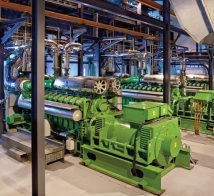

Hydrogen
Rising expectations for the hydrogen economy are being matched by a widespread determination to be ready for a green future. 25
Generators
Ben Whitmarsh, director of Generators For Export and GFE Power Products, explains why the African market is a key part of the company’s business strategy following the acquisition of Musgrave Generators. 33
35
42
Formwork and scaffolding
Ensuring solutions are safe, sustainable and suitably priced in order to meet the challenges of modern construction.
Haulers
The trucks and innovations driving operations forward in the most efficient way.
Mining
Considering ventilation as an enabler, rather than a constraint, for effective mining. 46
Fire Detection
Recognising danger to keep personnel and equipment safe underground. 47
Leadership
Felicity Morel-EdnieBrown, leadership and executive coach with Morel Consulting, considers the ‘crisis of confidence’ that can affect newly-promoted leaders.
Cover picture: Action shot from the last edition of Propak West Africa ahead of the 2023 conference
© Propak West Africa
Serving the world of business
Cover Inset: Auguste Claude-Nguetsop, partner & head, banking sector advisory services, KPMG Southern Africa © KPMG
P34
P18
P31
P26
Thales selects provider to secure power for North African metro line
AEG Power Solutions, a provider of AC & DC power supply systems and solutions, has been chosen by Thales to provide AC UPS systems to secure the power supply for a metro line in North Africa.

The company will provide 38 Protect 8 S14 UPS systems ranging from 60-100kVA and will be installed in a redundant setting in order to provide the highest power reliability. According to AEG, the Protect 8 has an expected lifetime of 20 years and is a cost-effective solution designed for highly-demanding applications. The systems will ensure safe operation of critical loads and will be delivered in 2024.
Stefano Marmino, ground transportation systems in Italy, project procurement leader, Thales, remarked, “Having started to build a relationship with AEG Power Solutions during the procurement process, we could see that they had the technical excellence and experience required.
“We were confident that AEG Power Solutions, like in the past, was the right choice to provide these mission-critical UPS systems.”
Alberto Dall'Asta, managing director of 3W Power S.p.A., a subsidiary of AEG Power Solutions in this project, added, “We are honoured that Thales has recognised our industrial product range to meet the requirements for a reliable power solution aligned with their technical specifications.”
CLEAN-SEAS MOROCCO CONFIRMS FEEDSTOCK AGREEMENT
Clean Vision Corporation, an emerging player in the sustainable clean tech and green energy sectors, has confirmed that its subsidiary, Clean-Seas Morocco, has secured a feedstock supply contract with waste management specialist, Clean Oceans 2.
Dan Bates, Clean Vision’s CEO, said, “Securing this volume of feedstock is key to the Clean-Seas plan for its PCN expansion in North Africa and will allow us to pursue and secure off-take agreements. Locking down our feedstock supply chain is a huge step forward in executing on our business plan and accelerating the currently planned expansion of our portfolio.”
The agreement comprises the delivery of waste plastic, in the form of feedstock, from Clean Oceans 2 to Clean-Seas Morocco’s site in Agadir, at no cost. In its current iteration, Clean Oceans 2 will supply up to 1mn metric tons of feedstock annually.
Clean-Seas Morocco estimates that the full 1mn ton of feedstock will generate US$360mn in gross revenue each year, which will be generated from the production of low sulphur pyrolysis oils from the plastic material. The resulting oils will be sold to petrochemical multinationals for delivery into the plastic circular economy.
SEA & PORTS GROUP ACQUIRES NAL MAROC
In a move guaranteed to solidify its foothold across Africa, maritime mainstay Sea & Ports Group has completed the acquisition of NAL Maroc Maritime Agency. The full takeover follows a portional share acquired last year.
Sea & Ports Group’s general manager, Raed N. De Las Casas, emphasised the role that the acquisition will play in the group’s long-term strategy to establish a more prominent presence across Africa and within its main ports in particular.
Along with the historic representation of HMM by NAL Maroc, now in its third year, Sea & Ports Group has secured the representation responsibilities for Marguisa Shipping Lines in Morocco, bolstering the wider company’s presence in Moroccan trade with West Africa.
BRIEFS
Vantage pumps investment into Promamec
Africa’s largest mezzanine fund manager, Vantage Capital, has secured a €30mn (approximately US$33mn) equity investment into Moroccan medical distributor Promamec.

The fund flow facilitated AfricInvest’s exit and will part-kickstart Promamec’s next phase of development, including a new production plant, portfolio expansion with new product categories, and a wider strengthening of the distributor’s position in sub-Saharan Africa.

“As Clean-Seas expands its PCN around the world, it is crucial to secure the raw materials needed for the facility's long-term operations and success,” added Dan Harris, the chief executive officer at Clean-Seas Morocco.
“This contract allows us to offer a risk mitigated, financing opportunity for our debt providers with the hope of leading to nondilutive capital sources, which we see as adding value for our shareholders, in order to rapidly expand the company's portfolio,” concluded Bates.
LENNOX targets MEA growth
The HVAC and refrigeration designer and manufacturer has confirmed its intention to expand and reinforce its presence across the Middle East and Africa.
Key markers of development in the region will include a distribution network expansion across select countries.
The market specialist will also aim to identify and develop an optimal portfolio for each regional market to enable maximum growth.
38 UPS systems will be installed to provide the metro line with the highest potential power reliability.
Image Credit: Adobe Stock
Image Credit: Vantage Capital
NEWS | NORTH www.africanreview.com 4
Image Credit: Pexels/Anna Nekrashevich
The funding will part-fund Promamec’s next phase of investment.
AFRICAN REVIEW OF BUSINESS AND TECHNOLOGY | SEPTEMBER 2023
The Middle East and Africa have been identified as potential growth markets.

TII SCHEUERLE provides support for wind farm transportation
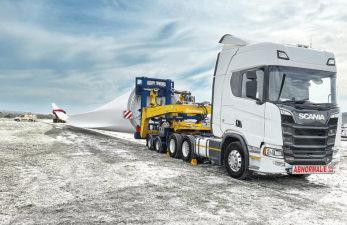
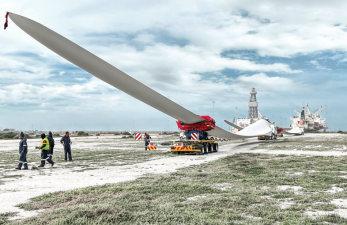
TII SCHEUERLE, an industry partner and specialist in heavy transport, has handed over six complete RBTS dolly systems to South African-based Vanguard, an industrial relocation and installation specialist.
The equipment will be used as part of Vanguard’s project to transport Goldwind rotor blades from the Port of Ngqura (also known as Coega), a deepwater port on the East coast of South Africa.
The blades are each 82.5 m long, requiring a transport rig with a total length of 95 m.
“With 78 sets arriving into Coega Port and each set containing three blades, a nacelle, a generator, a hub and containers, over 550 individual pieces of cargo are required to be transported 500 km to Noupoort,” explained Joost Heystek, project manager at Vanguard.
“This project has been months in the planning and it’s great to see all of the preparation and engineering work come to life with the transport phase beginning.”
To fulfil the project, extensive works have been carried out on the 500 km route with route surveys and swept path analysis conducted to understand pinch points. The project is now transitioning into the transportation stage, which will take place across the next 12 months.
The Rotor Blade Transport System (RBTS) provided by TII SCHEUERLE specialises in transporting rotor blades with length of more than 75 m across long transport routes and can even handle blades of more than 100 m.
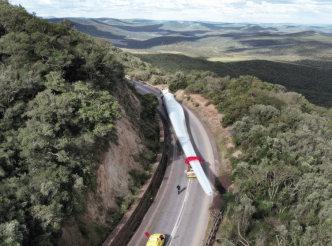
The system consists of two-axle jeep dolly together with a free-turning device and a four-axle trailing unit. It is also possible to mount the free-turning device directly on the truck tractor.
Assembly of the wind blade is carried out according to the plug-and-play principle. With the help of a special lifting device, the wing root is comfortably picked up from the ground. The quick coupling solution is comprised of the free-turning device along with the root adapter and a root frame that is connected to the blade root. This frame can then be secured to the free-turning device quickly with the help of the adapter.
A clamping device on the trailer unit is used to fix the tip of the rotor blade into position. It can be adapted to accommodate rotor blades from several manufacturers. The manoeuvrability of the trailing unit combination is a notable attribute; the RBTS negotiates bends that cannot be mastered with a telescopic semitrailer without having to remove crash barriers or carry out widening measures.
SOUTHERN AFRICA ECONOMIC SLUMP HIGHLIGHTS GREEN GROWTH IMPERATIVE
The African Development Bank (AfDB) has released The Southern Africa Economic Outlook, examining the trends and developments occurring in the region as well as analysing the potential role of the private sector in financing climate action and green growth ambitions.

According to AfDB, southern Africa has witnessed a slowdown in economic growth over the past year with GDP growth barely reaching 2.7% – a level lower than the global average of 3.4% and African average of 3.8%.
While much of this stagnation can be attributed to the civil unrest, electricity supply problems and natural disasters which are plaguing South Africa (the region’s largest economy), other countries are also mirroring the slowdown. Zimbabwe, Zambia, Malawi, Madagascar and São Tomé and Príncipe have all experienced adverse weather events, hindering economic progress.
Looking ahead, AfDB expects growth in the region to slow down further in 2023 to 1.6%, followed by a slight improvement of 2.7% in 2024. Across this time, external debt burden – which stood at 48% in 2022 – is expected to remain high across the region although the fiscal deficit improved slightly in 2022 at 3.5% of GDP in 2022.
In meeting the challenges of the region, AfDB has highlighted the importance of green growth. The report states, “Green growth is a pre-requisite to drive climate goals as outlined in the Paris Agreement of limiting warming as well as the long-lasting quest for structural transformation.
“By addressing social and environmental externalities, and market failures that emerge from the pursuit of economic growth and investing in and protecting natural capital, green growth pathways reduce ecological scarcities and environmental risks.”
BRIEFS
money4glass empowers glass recycling

Ardagh Glass Packaging-South Africa has launched a new initiative that uses BanQu’s web-based technology to empower the effectiveness of the glass recycling (cullet) supply chain within the company. Thomas Shaw, supply chain executive of Ardagh Glass Packaging–Africa, said, “This technology will enable us to identify traders, better understand the footprint of cullet recycling activity in the country and monitor the volumes of cullet traded in the different regions.”
Four years of advancing African trade
The Eastern and Southern African Trade Fund (ESATF) has celebrated its four-year anniversary. Since its launch, ESATF has grown assets under management to US$128mn while delivering a 7.52% return over the last 12 months and 19.66% since inception. The fund has attracted a diverse range of investors, including banking institutions, insurance companies, pension funds, and highnet-worth individuals which extends across different regions on the continent.
Picture of the first test drive using the RBTS system.
Image Credit: TII SCHEUERLE
Image Credit: Adobe Stock
NEWS | SOUTH www.africanreview.com 6
Image Credit: Adobe Stock
AGP-South Africa hopes the initiative will make glass recycling financially viable across the country.
AFRICAN REVIEW OF BUSINESS AND TECHNOLOGY | SEPTEMBER 2023
ESATF is committed to sustaining its ongoing growth through expansion into new African economies.
Pictures from the Port of Ngqura where Vanguard made a test load.
Image Credit: TII SCHEUERLE
PNE Group and SET to pioneer e-fuel production in South Africa

South Africa has been selected by the PNE Group and SET Select Energy GmbH (SET) as the location of their joint venture to produce and market synthetic fuels from renewable energies.
The two companies have signed a corresponding declaration in intent for the project which is expected to produce up to 500,000 tons of e-fuels per year, obtained from green hydrogen produced via electrolysis.
Markus Lesser, CEO of PNE, commented, “We are pleased to be tackling this ground-breaking project together with SET. It shows once again that climate protection needs to be thought and acted on globally. At the same time, it is already the second power-to-X project in South Africa for us and another milestone in the implementation of our corporate strategy.”
York zu Dohna, co-CEO of SET, added, “The green energy supply is becoming more and more global. The planned project in South Africa shows how the energy transition works and is interlinked across national borders and continents. South Africa is a location for renewable energies and export logistics represents an advantage that makes e-fuels available for both local and international customers.
“We are pleased to support PNE as a trading and logistics partner in this exciting project. As an energy trading company, we are pre-destined to also use new energy sources economically and flexibly from bringing producer to consumer.”
The water that will be used for the 1GW electrolyser on the West coast of South Africa will come from the sea and run through a desalination plant – thereby avoiding using drinking water reservoirs. Ultimately, the project is intended to ensure the economically viable marketing of green e-fuels to buyers.
BTC CELEBRATES NETWORK EXPANSION
Botswana Telecommunications Corporation (BTC) has celebrated the expansion of its network in the Northwest region in tandem with the Botswana Communications Regulatory Authority (BOCRA). This project has included the upgrading of the 2G mobile network coverage to 4G/LTE in a significant boost to connectivity for the area.

Anthony Masunga, BTC managing director, said that the upgrade from 2G to 4G will enable the community to access a wide range of BTC products and services such as BTC Smega Mobile Money Service which empowers the underserved and unbanked.
The managing director took the opportunity at the ceremony to emphasise the company’s commitment to meeting the needs of citizens and recognised that every individual’s requirements matters.
Makoko Village enjoys clean water access
Sponsored by Mdluli Safari Lodge, Innovation: Africa has provided clean water access to more than 3,800 community members of Makoko Village, South Africa. The water project included the drilling of a 80 m borehole to deliver up to 60,000 litres of water each day, a 10 m tower, solar panels, an alarm system, and a solarpowered water pump to provide water at distribution points throughout the village.
RISING DEMAND PROMPTS JUNIPER EXPANSION
Juniper Systems, a manufacturer of rugged handheld computers, precision GNSS receivers and GIS mapping/data collection software, has expended its business development team in southern Africa following a growth in demand.
Pieter Otto, formerly of Leica Geosystems, has taken the role of business development manager at Juniper Systems for which he will serve partners and customers in South Africa, Namibia, Botswana and Kenya.
Simon Bowe, managing director at Juniper Systems, commented, “Mr. Otto has wideranging experience working with rugged tablets, data collectors and GNSS receivers. He brings about 20 years of experience with him, so we know he is knowledgeable and skilled with these products. His expertise will greatly enhance our team as we formally expand into the southern Africa market.
“With Pieter joining our team, Juniper Systems is now fully serving all of Europe, the Middle East, and Africa (EMEA). We have so much business throughout Africa, and we have needed a local representative on the ground for a while.”
The management expansion arrives soon after the company’s announcement that its Mesa Pro Rugged Tablet is now available featuring an IP68 rating for ingress protection. The Mesa Pro is the first IP68rated rugged tablet that uses an active cooling fan to cool the system’s processor.
Darren Hellstern, Mesa Pro product manager at Juniper Systems, explained, “This is a big moment for Juniper Systems. We have a long history of offering IP68 on our rugged products. A lot of time and hard work has gone into securing the rating for Mesa Pro. Achieving this rating of ingress protection against water and dust in a tablet with a fan is an engineering challenge. Our team was up for that challenge and delivered for our customers.”
eXp Realty hits 1,000 agent milestone
eXp Realty, a large independent real estate company and subsidiary of eXp World Holdings, has celebrated the milestone of exceeding 1,000 agents across South Africa. Michael Valdes, chief growth officer at eXp Realty, said, “Our attractive and continuously evolving agent-centric value proposition continues to resonate with agents from around the world and we are so thrilled to be home to over 1,000 real estate professionals in South Africa.”

BRIEFS
SOUTH | NEWS www.africanreview.com 7 SEPTEMBER 2023 | AFRICAN REVIEW OF BUSINESS AND TECHNOLOGY
It is hoped the system will provide an ecosystem of opportunity.
The company has also registered more transactions in the first half of 2023 compared to 2022.
Image Credit: exp Realty
Image Credit: Adobe Stock
The project is expected to produce 500,000 tons of e-fuels per year.
Image Credit: Innovation: Africa
GSK halts operations in Nigeria

The board of GlaxoSmithKline (GSK) Consumer Nigeria Plc has announced its decision to cease operations in the country.
This conclusion was issued in a statement by the board who acknowledged there would be many questions from shareholders and stakeholders, assuring them ceaseless work is being put into address concerns. As such, the company is working with professional advisors to agree on next steps and indicated it will shortly be submitting a draft Scheme of Arrangement to the Securities and Exchange Commission. This will see shareholders other than GSK UK, receive an accelerated cash distribution and return of capital (if approved).
The board provided the reasons that this decision was ultimately taken, indicating the GSK UK Group had informed GSK Nigeria of its strategic intent to cease commercialisation of its prescription medicines and vaccines in Nigeria through the GSK local operating companies and transition to a thirdparty direct distribution model for its pharmaceutical products.
In addition, the statement noted that the Haleon Group had separately informed the board of its intent to terminate its distribution agreement in the coming months and to appoint a third-party distributor in Nigeria for the supply of its consumer healthcare products. It was in light of these developments that the board concluded there were no alternatives left available but to cease operations.

The release stated, “Today we are briefing our employees whom we will treat fairly, respectfully and with care, meeting all applicable legal and consultation requirements… Shareholders are advised to seek professional advice and continue to exercise caution when dealing in the company's shares until a further announcement is made.”
In recent years, GSK has faced increased competition from India and China. In 2018, the company had announced a decision to scale back operations in Africa and move to a distributor-led model. According to Reuters, GSK would adopt this model instead of marketing medicines in 29 sub-Saharan African markets.
AGL HIGHLIGHTS LOGISTICS SOLUTIONS
AGL Mali, along with AGL Côte d'Ivoire, supplied specialised equipment for the establishment of the new lithium mine in Goulamina, Mali. Under the direction of AGL personnel, the primary crusher unit was sent from Tianjin, China, to the Goulamina mine through the port of Abidjan. The knowledge of AGL's staff members enabled this high-value logistics operation. The success of the transportation, which adhered to quality, hygiene, safety, and environmental (QHSE) norms and criteria, was attributed to the commitment of the teams and real-time communication among all stakeholders in the logistics chain. The convoy of more than 21 trucks travelled 1,056 miles in tough weather circumstances during the wet season, but it was delivered within the timeframe.
“This operation was carried out with professionalism and adherence to deadlines, demonstrating AGL's prominent position as a logistics provider in Mali, serving the people and the Malian economy, which places great importance on the extractive industries as significant contributors to the country's development. It is also an opportunity to pay tribute to our team members whose professionalism and expertise are beyond doubt,” said Rémi Ayikoué Amavi, general manager of AGL Mali.
BRIEFS
GAC and EAD sign agreement on power generation

The MoU will guarantee a supply of 10MW so that Guinea Alumina Corporation (GAC) Kamsar port activities may be linked to the national grid. Diesel fuel generators are being used to power GAC's activities. However, the switch to hydroelectric power envisioned in this MoU would have considerable positive effects, including enhancements to the environment, operations, and the economy. A big benefit is that it could cut GAC's carbon emissions by up to 20% – a step towards more environmentally-friendly operations.
GOLDEN RIM COMPLETES DIAMOND DRILLING IN GUINEA
West African company Golden Rim has finished a 4,200 m diamond drilling (DD) campaign at Kada, spanning the Massan and Bereko prospects. In preparation for an MRE extension and upgrade, drilling at Massan was utilised to explore open mineralisation at depth and to give further structural information inside the deepest and highestgrade area of the MRE. The geologic knowledge of mineralisation at Kada has evolved thanks to the significant structural data that drilling has provided.
Golden Rim has finished its initial diamond drilling at Bereko, confirming the breadth and grade of the mineralisation and providing details on the mineralisation's direction within this potential. Six diamond holes were drilled in June and July with the assistance of a well-known structural geology specialist, who was on site to observe Golden Rim's practises and evaluate structural conclusions. Drilling has intersected an area of intense veining in multiple orientations, with mineralisation occurring in three-main orientations as outlined in previous results.
Golden Rim’s managing director, Tim Strong, said,“We are delighted to have completed a productive field season, with RC, AC and DD undertaken, as well as a major trenching campaign at Kada. We have gained critical insights into the nature and orientation of mineralisation that we are currently using to update our geologic modelling in preparation for a major MRE update, including a maiden MRE at Bereko, on track for delivery during H2 CY 2023.
“We are eager to incorporate this season’s new results into an updated MRE and are confident of delivering significant growth in our MRE. Furthermore, with recent new discoveries including 17 m at 1.3 g/t in Sounkou’s first RC hole, we are looking forward to continuing to increase the size and scale of the Kada Project.”
SMEDAN and NEPZA to develop Osun state
Talks between the Goverment and Small and Medium Enterprises Development Agency of Nigeria (SMEDAN) and Nigeria Export Processing Zones Authority (NEPZA) have been convened to optimise the State's economic potential. These have been conducted in line with Osun Governor Ademola Adeleke’s commitment to transform Osun from a civil service state to a business and industrial state. The two organisations were approached to revive Osun’s free trade zone, kickstart the agricultural processing zones and strengthen SME growth.
The company has been facing increased competition from India and China.
Image Credit: Adobe Stock
Image Credit: GAC
NEWS | WEST www.africanreview.com 8 10MW
Image Credit: Adobe Stock
of power will be supplied to GAC.
AFRICAN REVIEW OF BUSINESS AND TECHNOLOGY | SEPTEMBER 2023
Small businesses are set to benefit from these developments.
Ghana
commissions
sewerage and treatment plants
Ghanaian President Nana Addo Dankwa Akufo-Addo has commissioned the Simplified Sewerage Facility and Treatment Plant at Ashaiman, along with the revamped Bankuman Simplified Sewerage Plant.

The two new simplified sewerage networks, comprising 51 km of sewer lines, and a new wastewater treatment plant with a capacity of 1,800 cu/m per day in Ashaiman, is to serve 4,805 households in the community. The plant in Bankuman, with a capacity of 1,600 cu/m per day, is to serve 3,100 households.
Speaking at the ceremony, held at Ashaiman, President Akufo-Addo noted that the two projects were constructed at a cost of US$6.6mn and reinforce the Government’s commitment to offer solutions to the infrastructural gap identified as one of the major challenges plaguing the sanitation and water resources sector.
The President stated, “The projects being commissioned today are examples of the many sanitation projects that have been provided across the country. This magnificent simplified sewerage system, as well as the rehabilitated Bankuman project, will inure to the benefit of the people living within the catchment areas of Ashaiman and Bankuman communities of Greater Accra.”
Akufo-Addo added the project will also expand and rehabilitate the 29-year-old Asafo sewerage system in Kumasi, provide an additional 12,000 household toilets and 30 institutional toilets in the Greater Kumasi Metropolitan Area.
Component One of the Greater Kumasi Project, he added, will extend potable water, by laying some 120 km of pipelines, and provide 5,000 new service connections; establish a telemetry, and also retool the Ghana Water Company’s metre shop to reduce non-revenue water.
“Ghana has made significant strides towards the attainment of the 2030 United Nations Sustainable Development Goals on water and sanitation. Currently, access to basic drinking water services has increased from 79% of the population in 2017, to 87.7% in 2021,” he said.
NIGERIA RECEIVES INVESTMENT FOR GREEN TRANSITION PROJECTS
A risk-sharing backstop facility for the development of sustainable infrastructure in Nigeria has received an investment of about US$12.7mn from FSD Africa Investments (FSDAi), working in partnership with InfraCredit. By encouraging local institutional investment through bonds into potential early-stage or greenfield climate-aligned infrastructure projects, the Risk Sharing Backstop Facility (RSBF) will solve the issue of poor credit enhancement. The facility will assist Nigeria in accelerating its social and economic growth, making the transition to a green economy, and meeting its climate targets by making financing for ‘climate-aligned’ infrastructure projects more readily available.
NIGERIA TO BEGIN CONSTRUCTION OF ONDO OIL AND GAS PARK
Construction of a low-cost manufacturing hub for equipment components and spare parts used in the oil and gas industry will start in Ondo State soon, according to the Nigerian Content Development and Monitoring Board (NCDMB).
The facility, which is in Ilaje, is one of six being constructed around the nation as part of NCDMB's Nigerian Oil and Gas Park Scheme (NOGAPS).
NOGAPS are already 99% complete in Odukpani in Cross River State and Emeyal 1 in Bayelsa State. Akintunde Adelana, director of monitoring and evaluation at NCDMB, explained that the organisation was created to act as “a springboard to galvanise different sectors of the Nigerian economy” in front of a group that included top government officials, including Lucky Aiyedatiwa, acting governor of Ondo State, businesspeople, investors, and UNDP and EU representatives.
He noted that the oil and gas industrial parks were created by the Board in collaboration with Shell Petroleum Development Company, ExxonMobil, and Nigerian Agip Oil Company (with specific reference to NOGAPS, Emeyal 1 and NOGAPS, Odukpani). They include manufacturing shop floors and factories, warehouses, training centres, small estates, fire stations, truck parking and holding spaces, hostels, and administrative buildings. They are designed to do away with the importation of equipment parts and other supplies needed for oil industry operations. In addition, he highlighted investment potential in the continuing “development of an inland gas corridor,” the Port Ondo Project, and the Ondo Industrial City, which is planned to have the status of a free trade zone.

WEST | NEWS www.africanreview.com 9 SEPTEMBER 2023 | AFRICAN REVIEW OF BUSINESS AND TECHNOLOGY
Image Credit: The Presidency Republic of Ghana
The country aims to increase access to basic drinking water.
East Africa to lead economic growth on the continent according to AfDB

East Africa will register the highest regional economic performance on the continent in 2023 and 2024, with growth figures at over 5%, according to the newly published African Development Bank’s (AfDB) East Africa
Economic Outlook. The report projects mid-term economic growth in the region to accelerate to 5.1% in 2023 and 5.8% in 2024, outpacing all the other African regions. This will be largely driven by growth in Rwanda, Uganda, Ethiopia, Kenya, Djibouti, and Tanzania.
According to the report, East Africa’s real GDP was propelled by its services sector, contributing almost half of the economic growth in 2022. The sector contributed 2.0 percentage points to GDP growth, lower than 2.5 percentage points on average for the period 2015-2021. The region's natural and cultural attractions draw tourists from around the world, creating a demand for services like accommodation, food, and entertainment.
The East Africa region, however, faces several external and domestic downside risks that could affect the positive economic outlook. These include a global economic slowdown, rising commodity prices, continued Russian invasion of Ukraine, international trade policies, the tightening of global financial conditions, exchange rate depreciation, and a resurgence of Covid-19.
“The domestic risks include gaps in infrastructure, domestic conflicts and political instability, macroeconomic imbalances, and adverse impacts of climate change,” the report states.
The annual flagship Africa Economic Report of the African Development Bank offers an assessment of the region’s recent macroeconomic performance. The report also examines medium-term projections and the risks to the region’s growth outlook, providing in-depth analysis of topical issues that the region is grappling with.
The theme of the 2023 report is ‘Mobilising Private Sector Financing for Climate Change and Green Growth’. It delves into the imperatives for a green transition for Africa and the role of private sector financing. It further presents a case for natural capital as a key source of financing for climate-compatible growth in East Africa.
AFC COMMITS FUNDING FOR PETROLEUM INFRASTRUCTURE IN UGANDA
Africa Finance Corporation (AFC) has invested US$95.25mn in Mahathi Infra Uganda Limited, one of the largest oil and gas downstream players in East Africa, in order to provide a more efficient alternative to trucking. The funding will be used for the construction of two self-propelled barges, 14 petroleum storage tanks, 20 truck loading bays, a jetty, and a parking lot. It is hoped that this injection will transform petroleum product transportation in Uganda, helping to reduce costs, transport time and carbon emissions.
Samaila Zubairu, president & CEO of AFC, remarked, “This is a significant milestone in our mission to sustainably address Africa's infrastructure challenges. Through this investment we are contributing to the transformation of petroleum transportation in Uganda with a lower-emissions alternative that cuts costs significantly, reduces road congestion, and improves mobility and accessibility for people, leading to sustainable economic growth and productivity.”
BRIEFS
Rwanda to benefit from electric buses

Electric bus pioneer, BasiGo, has made a second entry into the African market with the launch of BasiGo Rwanda Ltd, a new entity focused on electrifying the public transport system in Rwanda.
BasiGo has partnered with AC Mobility, Rwanda’s provider of automated fare collection systems for public transport. The partnership will deliver electric buses to Kigali transport operators by October of this year through BasiGo’s innovative Pay-As-You-Drive financing model.
JAT HOLDINGS VENTURES INTO AFRICA
JAT Holdings PLC, one of the market leaders in wood coating in Sri Lanka, Bangladesh, and the Maldives, has officially expanded to Africa.
It has done this through the incorporation of ‘JAT Paints Africa Limited’ in Kenya, through a joint venture with Mayleen Corp, a Kenya-based diversified business house. Accordingly, the joint venture agreement was signed by Aelian Gunawardene, managing director of JAT Holdings PLC, and Ruwan Fernando managing director of Mayleen Limited, a member of Mayleen Corp in Kenya.
This strategic move is set to strengthen JAT’s position as a leader in wood coatings across Africa, following its success in South Asia. Fulfilling its commitments to investors, the establishment of JAT Paints Africa in Kenya showcases JAT Holdings PLC’s commitment to expanding its footprint in the East African region and emerging as a leader in wood coatings in Africa. Through this partnership, JAT Holdings will now be able to manufacture and distribute the brand of Sayerlack Wood Coatings and other JAT products in key markets across Kenya and East Africa.
Expressing optimism and discussing the group’s strategic goals, Gunawardene said, “It gives me great pride to announce the successful incorporation of this joint venture with a partner who shares our vision for the wood coatings industry.
“We plan to leverage our wealth of experience and a commitment to innovation, sustainability, providing total solutions and customer satisfaction, to redefine the market and make a lasting impact in Kenya and East Africa.
“This strategic partnership with Mayleen Corp marks a significant milestone, and together, we are poised to set new standards of excellence.”
KQ and Lufthansa sign supply deal
Kenya Airways PLC (KQ) and Lufthansa Technik AG have signed a long-term contract for the supply of aircraft components for the long-haul, Boeing 787-8 fleet. The longterm contract will allow KQ to receive the proven total component support (TCS) from the maintenance, repair and overhaul (MRO) specialist until 2028. It will also give KQ access to Lufthansa Technik's worldwide parts pool which will enable KQ to significantly increase the availability of spare parts for the Dreamliner fleet in a costeffective manner.
 Mid-term growth is projected to accelerate to 5.1% in 2023 and 5.8% in 2024.
Mid-term growth is projected to accelerate to 5.1% in 2023 and 5.8% in 2024.
Image
Image Credit: Adobe Stock
Credit: BasiGo
NEWS | EAST www.africanreview.com 10 The initiative is set to materialise by October.
Image Credit: KQ
AFRICAN REVIEW OF BUSINESS AND TECHNOLOGY | SEPTEMBER 2023
Aircraft components will be supplied under a long-term contract.
EAST | NEWS
GDC and EAEP launch community engagement strategy
The strategy development which was funded by Power Africa and USAID through the EAEP, is aimed at having a holistic improved engagement with host communities in GDC operational areas while concurrently facilitating the public participation in GDC’s resource development activities. It is in line with Power Africa’s objective of increasing on-grid electricity access, accelerating private sector investment, and improving the enabling environment of the power sector in East Africa.
The strategy envisages having meaningful engagement with the communities in GDC’s project areas that will lead to de-risking company operations from community unrest, agitation, hostilities, and sabotage that may lead to delays in development.
Once in place, it will facilitate support from host communities with the aim of getting a social licence. It will also help define and manage expectations from the locals in operational areas. The strategy additionally elaborates a framework for evaluation and the indicators that can be used to determine success.
“Geothermal resource development is a capital-intensive undertaking. Obtaining a social license is crucial to ensuring funds invested in the development of the resource do not go to waste owing to community dissatisfaction,” said GDC managing director and CEO, Paul Ngugi.
RTI International chief of party Dawie Pieterse, said that EAEP is keen on GDC’s projects.
“Geothermal development fits in very well with EAEP’s goals owing to its green, renewable, and reliable characteristics,” explained Pieterse.
ADFD SIGNS LOAN AGREEMENT ON ENERGY SECURITY INITIATIVES
The Abu Dhabi Fund for Development (ADFD) has signed a loan agreement with the Government of Tanzania worth US$30mn to enhance energy security in the country. The project’s objective is to fully connect the Kagera administrative region with the national electricity grid, reducing dependency on energy imports from Uganda and providing sustainable and safe electricity sources to communities, economic areas, and service facilities.
The agreement was signed by Mohamed Saif Al Suwaidi, director general of Abu Dhabi Fund for Development and Mwigulu Nchemba, Minister for Finance of The United Republic of Tanzania; in the presence of Khalifa Abdullah Al Qubaisi, deputy director general of ADFD; and other officials.
Al Suwaidi said that this strategic project was a significant step towards the development of Tanzania’s energy sector and ensuring sufficient electricity supplies to meet the population’s needs sustainably.
“The Fund will collaborate with Tanzanian partners to support their development programmes and work towards the United Arab Emirates’ future aspirations and the Fund’s strategic objectives of accelerating energy projects globally for the betterment of developing countries’ societies,” he said.
BRIEFS
Bboxx and Spiro collaborate on clean mobility transition
Bboxx, the data-driven super platform, has announced a new partnership with Spiro, one of the largest electric vehicle (EV) companies in Africa, to accelerate and democratise the continent’s clean mobility transition. Underpinned by Bboxx’s innovative asset financing model, the alliance will accelerate the delivery of EV motorcycles (e-motos) to customers whose livelihoods depend on access to inexpensive transport across East and West African markets.
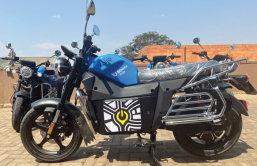
D.LIGHT TO HEIGHTEN SUPPORT FOR LOW-INCOME HOUSEHOLDS
d.light, a global provider of transformational household products and affordable finance for low-income households, has announced a US$30mn securitisation facility from the Eastern and Southern African Trade and Development Bank Group (TDB), with the capability to purchase up to US$125mn of receivable assets.

d.light will use the capital to increase its existing securitised financing facility in Tanzania and scale up its low-cost Pay-Go personal finance service in the country so that more low-income people and households can purchase the company’s affordable, solarpowered household products.
d.light has now raised US$490mn in total securitised financing since 2020. The financing facility in Tanzania will be anchored by TDB.
Nick Imudia, CEO of d.light, said, “This new financing from TDB gives us the extra funding to reach more low-income families and households in Tanzania via our Pay-Go business, in a way that is affordable for our customers and sustainable for our business.
“d.light and our lending partners are longtime pioneers in developing securitised finance as an innovative, scalable financing model for raising equity for off-grid solar that is guaranteed against current and future customer sales. We’ve successfully used the securitisation model for several years in Kenya and now we and our partners are expanding it to Tanzania.”
Michael Awori, CEO of TDB, added, “Access to energy is critical to the sustainable development of the continent, especially for the most vulnerable off-grid communities. As one of the leading renewable energy financiers in the region, we are delighted to extend this second facility to d.light, this time in Tanzania.”
Goodwell Investments, an impact investing firm fostering inclusive growth in emerging markets, has announced an investment in SOUK Farms, a leading grower and exporter of fresh horticultural produce from Rwanda.
The investment provides SOUK Farms with a solid foundation for scaling its sustainable agricultural business in Rwanda, enabling it to create resilient systems and value chains that benefit local farmers and the surrounding community.
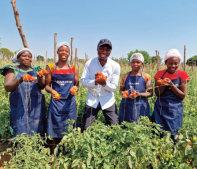 Goodwell invests in SOUK Farms
The deal will accelerate the delivery of e-motos.
Goodwell invests in SOUK Farms
The deal will accelerate the delivery of e-motos.
SOUK Farms is a sustainable agricultural business in Rwanda. www.africanreview.com 11 SEPTEMBER 2023 | AFRICAN REVIEW OF BUSINESS AND TECHNOLOGY
Image Credit: Goodwell
Kenya’s Geothermal Development Company (GDC) in collaboration with the Power Africa East Africa Energy Programme (EAEP) has launched GDC’s nine-year Community Engagement Strategy.
The strategy envisages having meaningful engagement with the communities in GDC’s project areas.
Image Credit: Adobe Stock
Image Credit: Spiro
Upcoming Events Calendar 2023
SEPTEMBER
5-10
IAA MOBILITY
Munich, Germany
https://www.iaa-mobility.com/
12-14
PROPAK WEST AFRICA
Lagos, Nigeria
https://www.propakwestafrica.com/
19-21
NIGERIA ENERGY
Lagos, Nigeria
https://www.nigeria-energy.com/
28
UK - AFRICA TRADE AND INVESTMENT CONFERENCE
London, UK
https://african-chamber.com/uk-africa-events
OCTOBER
9-13
AFRICA OIL WEEK
Cape Town, South Africa
https://africa-oilweek.com/home
10-11
GREEN ENERGY AFRICA SUMMIT
Cape Town, South Africa
https://greenenergyafricasummit.com/home
16-20
AFRICAN ENERGY WEEK
Cape Town, South Africa
https://aecweek.com/
17-19
MOROCCO SIEMA
Casablanca, Morocco
https://www.siemamaroc.com/
24-26
MANUFACTURING INDABA
Johannesburg, South Africa
https://manufacturingindaba.co.za/
NOVEMBER
1-2
MENA HSE FORUM
Dubai, UAE
https://www.hse-forum.com/mena
7-10
ECOMONDO
Rimini, Italy
https://en.ecomondo.com/
14-16
AFRICACOM
Cape Town, South Africa
https://tmt.knect365.com/africacom/
Leading brands participating in Propak West Africa

Ten years of growth, collaboration and innovation will be toasted at Propak West Africa this year as the region’s manufacturing industries return under the Landmark Centre roof once again from 12-14 September in Lagos.
The organisers are expecting more than 5,000 visitors to take part in the 10th edition, joining the 200+ leading brands that will be present and showcasing their latest equipment and machinery. This year, working displays are being hosted by Afra Technical Concept, CIS Buro, Inuatom Automacao, Bole Machinery, MLT Pack and Unipack Engineering among others. Those travelling to Lagos will also see a large presence of Nigerian companies such as Beaumont Industrial, C. Woermann, Fas Agro, Mercongraphic Nigeria, OK Plast Ltd, Sarsoli Colours, Tetrapak West Africa and Vista International. More than 23 other countries will also be represented.
George Pearson, regional director for the organisers, Afrocet Montgomery, remarked, “Reaching the 10th edition is a huge milestone
and achievement for us and is testament to the tenacity and hard work that the manufacturing community puts in year on year to keep innovating and developing, in the face of the various challenges in Nigeria. Propak was setup to serve as meeting point and platform for the industry, we’re looking forward to welcoming back many familiar faces as well as lots of new
ones as the industry keeps driving forward.”
The central theme of Propak West Africa 2023 – developed in partnership with KPMG Nigeria –is ‘Strengthening the interlink between circular economy, finance and trade potentials in the plastic and packaging industry’.
This will align the conference with what is happening across the sector and shed light on the opportunities available to companies adopting the circular economy message. KPMG Nigeria will be running sessions focusing on this area while also exploring smart packaging and the role technology is having in the industry.
Alongside this, visitors will also have access to the three-day conference programme where industry leaders will take the stage to consider a range of issues shaping the relevant industries. Presentations, interactive panel debates and technical workshops will all be held, providing attendees with key insights and the opportunity to learn from an esteemed line-up of experts.
With so much on offer, take a look at some of the eye-catching companies and solutions that will be on display in Lagos:
AFRICAN REVIEW OF BUSINESS AND TECHNOLOGY | SEPTEMBER 2023 www.africanreview.com 12
More than 5,000 visitors are set to descend on Lagos to celebrate a decade of Propak West Africa, the largest packaging, food processing, plastics, labelling and print exhibition in the region.
Image Credit: Propak West Africa
More than 5,000 visitors are expected to take part in Propak West Africa 2023.
EVENTS
CALENDAR
|
JANDI’S INDUSTRIAL CO
Located in Taiwan and established in 1991, JANDI'S Industrial offers various high-quality equipment for plastic film and bags. The company’s offering includes Mono-layer, Multilayer Co-extrusion Blown Film Machines; T-Shirt Bag or Bag-on-Roll Making Machine; Flexo. or Roto. Printing Machines; and Plastic Film Recycling Machines. All machines can be customised and equipped with accessories based on specific requirements.

To align with the global eco-friendly trend, the company is also working on new generation machines that care about the environment and have been working on solutions for biodegradable materials, such as PLA/PBAT, PVA, and Cassava films and bags, since 2013.

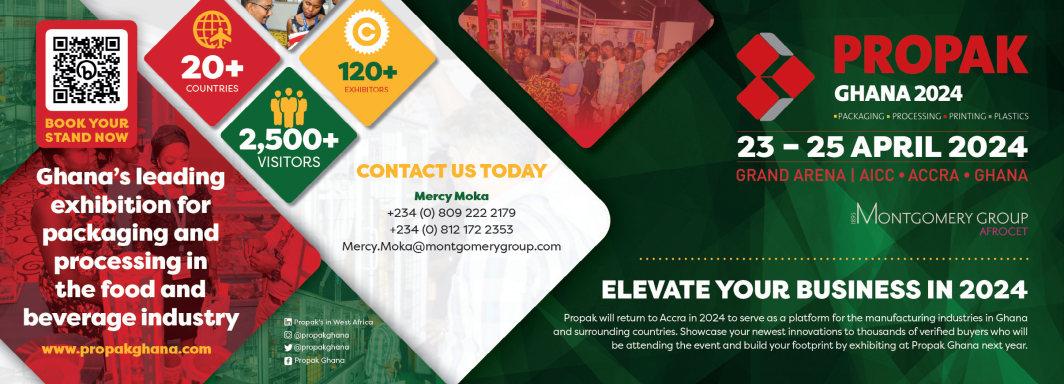
The company stated that since its inception, it has consistently worked towards improving its service, design, and quality, leading to the acquisition of 30 patents in Taiwan and China.
NU-VU CONAIR
As one of India’s leading plastic auxiliary equipment manufacturers, Nu-Vu Conair Pvt. Ltd. develops a range of auxiliaries including central vacuum conveying systems, drying systems, gravimetric blending systems, chillers and mould temperature control units, crystallisers, belt conveyors, granulators and more for polymer processors.

The company’s Dehumidifying Air Dryer is vastly used in the plastic packaging application where it helps to remove moisture from Hygroscopic Resins. Its desiccant wheel technology provides consistent dew point without any spikes. Its other advantages include lower operating cost, easy maintenance and an advanced control system to offers absolute process stability.

Nu-Vu Conair has a growing presence in the West African region in various plastic processing applications and is further looking to expand its customer base in this market. The company has also been a regular participant in Propak West Africa editions over the years as it offers an array of opportunities with regards to showcasing latest technologies and innovations in the industry.
REIFENHÄUSER BLOWN FILM
With technologies designed to combine economic success and sustainability, Reifenhäuser Blown Film is gearing up for presenting at Propak. The company offers one of the largest portfolio of blown film technologies on the market. Among them are many solutions for sustainable production and the manufacture of sustainable materials that will secure future business success and help customers turn challenges into opportunities.
With Reifenhäuser’s technologies and know-how along the entire value chain, the company supports clients in the economical production of high-quality blown films that are convincing on the market. As one of the market leaders, it has proven this in more than 7,500 projects.
Among the solutions Reifenhäuser will be discussing at the conference are Reifenhäuser EVO lines, allowing customers to process an enormous range of raw materials with ease and become a soughtafter supplier for many different markets. This is alongside the EVO Ultra Fusion; delivering circular economy in perfection by processing plastic waste into new film without energy and cost intensive pelletizing.
Reifenhäuser is dedicated to securing customers’ success through clear competitive advantages both in production and in the end product.
www.africanreview.com 13 SEPTEMBER 2023 | AFRICAN REVIEW OF BUSINESS AND TECHNOLOGY PREVIEW | PROPAK WEST AFRICA
Cassava bags are made from industrial grade cassava starch and vegetable oil derivatives and are water soluble
Image
Credit: JANDI's Industrial
Image Credit: Nu-Vu Conair
Nu-Vu Conair’s Dehumidifying Air Dryer boasts lower operating costs and easy maintenance.
Image Credit: Reifenhäuser
BOBST
BOBST, is a leading supplier of substrate processing, printing and converting equipment and services for the label, flexible packaging, folding carton, and corrugated board industries. It boasts expertise ranging from pre-press, software, data analytics, connectivity, and chemistry, to printing and converting to logistics – for all substrates in packaging.
EXPERTFOLD 50/80/110 with new ACCUCHECK and ACCUBRAILLE.
A highlight at Propak West Africa will be the BOBST EXPERTFOLD 50/80/110, the flagship of the company’s folding-gluing product line. The versatile and productive folder-gluer is designed to be so modular that almost every machine sold is tailored to the specific production needs of its customer.

Featuring inline quality control and Braille application capacities, the EXPERTFOLD 50/80/110 is an ideal machine for converting boxes for the cosmetic and pharmaceutical markets. At the beginning of this year, BOBST launched a new generation of this machine, designed to help printers and converters accomplish more in today’s rapid and resource-intensive market. The new EXPERTFOLD 50/80/110 incorporates new features and a compact footprint for enhanced productivity and ergonomics.
SACMI
Aiming to show existing and potential customers the advantages of transitioning to the popular new market standards around sustainable packaging, SACMI is returning as a key exhibitor at the 2023 edition of Propak West Africa.
The company offers Nigerian manufacturers big opportunities by letting them move towards the adoption of more sustainable standards and lighter, betterperforming caps/containers while simultaneously allowing them to innovate on the product and design fronts.
PIOVAN
The Piovan Group is a world-leading player in the development and production of production process automation systems for the storage, transport and treatment of polymers, bioresins, recycled plastics, food liquids, food and non-food powders. In recent years, the group has also focused on the design of production process automation systems related to the bio-economy and circular economy.
With more than 85 years of experience and almost 2,000 employees in 14 production plants and 43 sales and service branches, the group is always close to its customers, through continuous innovation and constant support from the design phase of plants through to their commissioning and operation.

At the group stand in Lagos, visitors will have the opportunity to see a conveying system in operation, the backbone of the plastics production plant. In addition, the Piovan Group team will be on hand to discuss all technologies and solutions.
STAVIAN CHEMICAL
Stavian Chemical is a top 22 global chemical distributor and a leading biodegradable plastic packaging manufacturer with nearly 30 offices and more than 40 warehouses in across the globe. With win-win philosophy, Stavian is committed to achieving sustainable development for all stakeholders and global community.


In this region of Africa, numerous customers have already turned to SACMI to obtain complete solutions that deliver this ‘dual leap’ in quality. That’s because one of SACMI's key strengths is its comprehensive understanding of cap and preform development, the relative technologies and how they are incorporated into complete bottling lines.
In Nigeria, SACMI CCM (continuous compression molding) lines are increasingly combined with SACMI IPS preform presses; these are available in an ever-wider range that includes the increasingly popular IPS 400 Cool+ and IPS 300. This means producers can seize all available opportunities linked to the development of new products, with all the guarantees that come from having SACMI as a sole partner.

The company distributes and trades globally all types of polymers such as PP, PE, PET, EVA, PVC, ABS, HIPS, GPPS etc., and biodegradable plastics including PBS, PLA, PBAT. Its ‘one-stop’ shop solution enables it to provide a world-class full-service package for customers and partners, effectively connect oil refineries and chemical producers to hundreds of thousands of plastic manufacturers for a well-functioning supply chain of the industry.
LONG YEAR IMPORT & EXPORT
Established in 1978, Long Year Import & Export (Taiwan) is specialised in tin / aluminium plate printing and coating machinery. It also offers solutions in machinery specialised in making tin cans, lids and pallet packaging. In addition to equipment supply, the company also offers services such as financial facility, plant layout planning, machine guide installation, test runs, machines maintenance, trouble-shooting training, and engineering consulting.
Long Year has successfully assisted many customers settling their industrial manufacturing factories in Kenya, Uganda, Ethiopia, Tanzania, Malawi, Sudan, Libya, and more countries across the continent. The company is looking forward to any and all inquiries at its booth and to explore the advantages of tin cans as the ideal solution to packing preserved food. Its food in 2-piece tin can with easy open end holds enough small volume and are convenient to use.
Image Credit: Long Year Import & Export (Taiwan)
 Piovan team members will be on site to discuss technologies and solutions.
Piovan team members will be on site to discuss technologies and solutions.
www.africanreview.com 14 PROPAK WEST AFRICA | PREVIEW AFRICAN REVIEW OF BUSINESS AND TECHNOLOGY | SEPTEMBER 2023
Image Credit: Piovan
Image Credit: BOBST
Stavian has more than 40 warehouses across the globe.
Image Credit: Stavian Chemical
2-piece cans are made from double reduced plate then drawn into cans without cover.
SACMI CCM compression molding solution for plastic caps.
Image Credit: SACMI
VASANTHA TOOL CRAFTS

Vasantha Tool Crafts has successfully designed and manufactured more than 4,000 high precision critical class 101, high cavitation plastic injection molds and supports major FMCG multinational companies across the globe.
In the development and manufacture of plastic injection molds, Vasantha has pioneered automated robotic cells, in-house vacuum heat treatment and 3D metal printing equipment, and has one of the most modern mold rooms in all of Southeast Asia.

The company has grown into a conglomerate of precision mold-making for complex plastic articles. Today, the group employs more than 750 people across five plants. With focus on quality, customer service, in time delivery schedules and technical contributions, value added services, Vasantha today is a one-stop-shop solution provider for all the critical mold requirements.
ILLINOIS ENTERPRISES

Illinois Enterprises produces a variety of moving trucks, such as professional use, industrial use, general household hand trucks, tool trucks, garden trucks, protective blankets, and more. Its product design adheres to the concepts of saving time, effort, highefficiency, saving space, and being strong and durable.
The company has US$2mn in product liability insurance, which can help buyers provide a strong guarantee when promoting all products.
Illinois has always aimed to provide products with reliable quality and secure performance. At Propak West Africa, the company will be spotlighting the HS-1006 for easy transportation. Features of the equipment include a changeable body angle to 45°, 90°and 180°; the extending bottom plate which increases the loading area and fixes the goods; a non-slip handle grip; and heavy duty 10’’ PU wheels.


www.africanreview.com 15 SEPTEMBER 2023 | AFRICAN REVIEW OF BUSINESS AND TECHNOLOGY PREVIEW | PROPAK WEST AFRICA
The Vasantha Group has more than 75 years of cumulative expertise.
Image Credit: Vasantha Tool Crafts
The HS-1006 boasts a non-slip handle grip.
Image Credit: Illinois Enterprises
P.E.T. ASSOCIATES
As the Nigeria representative of Messrs Ateliers Francois (AF) Compressors S.A of Belgium, P.E.T. Associates is gearing up for Propak West Africa. AF is a market leader for 3-stage oil free compressors for PET bottling applications.
With 7,000+ oil free compressors, three production centres, 15+ companies and 20+ official agencies, and more than 150 specialised technicians, AF ensures the best service to its customers in more than 185 different countries.
More recently AF has launched its two-stage oil free compressors range for 8 bar and 10 bar oil free compressed air applications.

The new range is a ground-breaking innovation, including all the technological improvements, developed for the 20-40 bar applications during the last decades. AF Compressors systems are designed for low energy, carbon footprint reduction and sustainable growth.
INTEGRATED POWER TECHNOLOGIES
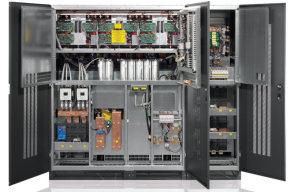
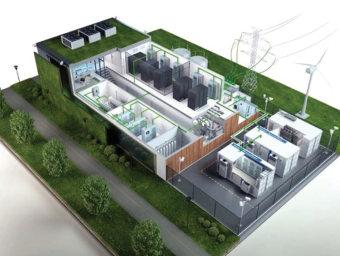
Integrated Power Technologies is a technology infrastructural solution and service provider that has been operating in Nigeria since 1999.
60 specialised engineers and factory trained personnel make up its 90-strong staff, fully-certified to provide OEM support on all equipment deployed to customer sites nationwide. As an experienced systems integrator, Integrated Power Technologies boasts a wide installation base and manages critical locations, ensuring project timelines are delivered in line with best practice.
The company provides services that spans oil and gas, telecoms, banks & ICT rooms, medical, hospitality, government and other sectors. Its expertise cuts across: data centres including modular and mobile solutions; precision cooling systems; UPS for clean power and backup for servers, computers and sensitive equipment; industrial stabilisers and automatic voltage regulators (AVRs) for surge and lightning protection; automatic fire suppression systems with clean agents such as Fm200, Novec, inert gases and Co2; and batteries.
SIMBA INFRASTRUCTURE
Simba Infrastructure is the distributor for KSTAR products in Nigeria. At Propak, the company will be exploring the pinnacle of power protection with KSTAR’s UID Series UPS – a solution for seamless and uninterrupted power supply.
Specifically designed for 3 Phase
In / 3 Phase Out operations, these online, transformer-based UPS units are delivered to redefine reliability. The UID Series UPS showcases an impressive load factor, ensuring optimal utilisation without compromising efficiency.
The solution finds applications across diverse industries, including manufacturing, healthcare, telecommunication, data centres, financial institutions, and more. The company welcomes customers to rely on KSTAR UPS for continuous power, backed by advanced engineering and unwavering commitment to quality.
NEWLORD NIGERIA
Newlord Nigeria is one of Nigeria’s oldest providers of power quality and power protection solutions which protect and extend the life of industrial machinery by providing clean and interruption-free power. It is proud partner of Riello UPS Italia with an install base of over 22MW.
Riello Master HP series UPS ranges from 100kVA to 800kVA which are suitable for industrial installations requiring high energy efficiency and maximum power availability. The Master Series provides maximum protection using an IGBT-based rectifier, DSP technology and provides true on-line, double conversion power protection, which can be distributed in parallel configuration of up to 8 units.
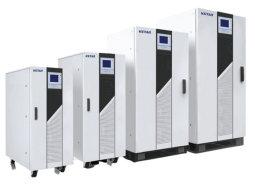
The company holds extensive inventory in Nigeria, along with spare parts and after sales service through its national service presence including Service Centers in Abuja, Port Harcourt & Kano. It currently services more than 10,000 installations nationwide in various sectors including F&B, printing & packaging, medicare, hospitality, telecoms, broadcasting and data centres.
MOONSTONE RESOURCES


Moonstone Resources Limited is an emerging brand focused on industrial engineering equipment and spare procurement, distribution and servicing.
The company is the authorised distributor of Regina Catene Calibrate Italy for conveyor products such as stainless steel/plastic chains, modular belts, sprockets, magnetic curves, rollers, bearings, valves, automation items, and more, in West Africa.
It is keen on developing a reputation for being the most reliable supplier of high quality brands and at Propak West Africa is looking to discuss its offerings such as the E-fast ‘NO’ Lubrication Chain for Pet lines.

www.africanreview.com 16 PROPAK WEST AFRICA | PREVIEW AFRICAN REVIEW OF BUSINESS AND TECHNOLOGY | SEPTEMBER 2023
AF Compressors OPC Range.
Image Credit:
P.E.T. Associates
Moonstone’s the E-fast ‘NO’ Lubrication Chain for Pet lines.
Image Credit: Moonstone Resources
Integrated Power Technologies has been serving Nigeria since 1999.
Image Credit: Integrated Power Technologies
KSTAR’s UID Series UPS offers seamless and uninterrupted power supply.
Image Credit: Simba Infrastructure
Newlord Nigeria provides clean and interruptionfree power with UPS solutions.
Image Credit: Newlord Nigeria
Flowing forward to forge a sustainable future
In a remarkable stride towards addressing water scarcity and bolstering climate resilience, the European Investment Bank (EIB) has extended a transformative lifeline to Djibouti, marking its debut in support of water initiatives after a 44-year absence from the East African nation. This watershed moment in the EIB's history signifies a synergistic partnership poised to redefine water access and sustainable development in Djibouti.
At the heart of this historic commitment is an approximate US$86.7mn, 25-year financing package that will breathe new life into water desalination, clean drinking water accessibility, and wastewater treatment. The epicentre of this transformation lies in the capital city, where the EIB's funding will amplify freshwater production at the Doraleh Desalination Plant, doubling its capacity. This visionary leap is poised to cater to the needs of more than 555,000 individuals, ushering in a new era of water security.
However, the EIB's investment does not stop at water transformation alone. It casts its net wider, embracing the realm of renewable energy. A solar-powered setup will rise in unison with the Global Gateway initiative, making clean drinking water a manifestation of sustainable energy integration.
The EIB's resonance in Djibouti extends beyond finances. It is a

testament to the European Union's commitment to sustainability and climate action. This project, harmonising efforts between the Djibouti Government, the EIB, and the European Union, stands as a tangible testament to the unity of Team Europe in tackling global challenges.
Djibouti, a nation teetering on the precipice of climate-induced vulnerabilities, finds solace in this collaboration. A staunch advocate of sustainability, Djibouti envisions this partnership as a cornerstone in adapting to the tumultuous tides of climate change. Finance Minister, Ilyas Moussa Dawaleh, aptly acknowledges this endeavour as a significant stride in enabling Djibouti to not only weather the climate storm but also flourish within it.
Thomas Östros, vice president of the EIB, remarked, "The EIB is pleased to extend its support for transformational water investment in Africa and scale up water desalination and wastewater treatment in Djibouti. This visionary new investment demonstrates EIB Global’s firm commitment to addressing water challenges and promoting climate resilience in vulnerable countries through best-
practice technology and high-impact infrastructure investment, as part of the Global Gateway initiative. By leveraging renewable energy sources, this project will significantly contribute to achieve sustainable and inclusive development in Djibouti. The sanitation component will fill a chronic investment backlog in the sector and will improve public health and environmental conditions highimpact transformation.”
As Djibouti embraces this transformative voyage, the narrative extends beyond its borders. The Horn of Africa, ravaged by climate uncertainties, finds a beacon of hope in Djibouti's pioneering footsteps. The Project for Production of Drinking Water by Desalination and Renewable Energy (PEPER) initiative, now poised for its triumphant second phase, envisages a future where advanced water desalination technologies and wastewater management act as a bulwark against climate-induced adversities.
Wading to new horizons
Djibouti's journey, however, is not a solitary one; its struggles with water access and wastewater management reverberate across the African
landscape. ACWA Power, the world's largest private water desalination company, lends its weight to the cause, illustrating a resolute dedication to innovative and sustainable desalination solutions. The confluence of minds between ACWA Power CEO, Marco Arcelli, and Egyptian Prime Minister, Mostafa Madbouly, marks an audacious stride towards addressing the water scarcity challenge in the MENA region.
Indeed, the water symphony resonates through Egypt as well, where ACWA Power's meeting with Madbouly painted a portrait of sustainable desalination solutions. ACWA Power, a harbinger of green hydrogen and an energy transition protagonist, charted an innovative course towards water security. Supporting this, the Egyptian Prime Minister emphasised ACWA Power's credibility in delivering monumental projects which resonated with Egypt's aspirations to overcome water shortages.
As Arcelli articulated, “We are honoured by the trust placed in us by Mostafa Madbouly, and are grateful to be able to contribute to the government’s vision to secure the country’s long-term water supplies. We look forward to working closely with the Egyptian authorities over the coming years, who clearly share our commitment for the sustainable and responsible development of its communities and ensuring a brighter future for all.” ■
www.africanreview.com 17 SEPTEMBER 2023 | AFRICAN REVIEW OF BUSINESS AND TECHNOLOGY DESALINATION | WATER
As Africa dives into desalination projects, its influence ripples throughout the continent. Minhaj Zia reports.
The sanitation component will fill a chronic investment backlog in the sector.”
THOMAS ÖSTROS, VICE PRESIDENT, EIB
EIB’s 25-year financing package will breathe new life into water desalination.
Image Credit: Adobe Stock
Eliminating damage and downtime
Application relevance, quality, availability, aftermarket support and the ability to meet specification at the lowest cost: these were some of the top attributes that mattered most to a select number of industrial leaders responding to an African Review survey around valve selection criteria.
In regards to valves in use, a highlighted common problem included the wrong material causing a need to change valves before the anticipated time, while other respondents indicated general leakage and seal failures an overbearing difficulty. Such occurrences has led to downtime and the need for replacement, ultimately delivering extra costs for the company, affecting their business.
Calling time on cavitation
when vapour bubbles – formed when there is a change in flow, velocity or pressure of fluid –collapse. The resultant pitting can be very damaging to valves and continued exposure over long periods of time can lead to erosion or limit flow capacity.

As a well-known problem, many valves are now built to withstand the issue as much as possible, however extended exposure is still a main cause of valve failure. “Cavitation remains an ongoing, disruptive phenomenon that must be addressed to ensure plants and facilities remain as productive as possible,” commented Mike Semens-Flanagan, global engineering director at IMI Critical Engineering (IMI), a leader in the field of flow control.
“With external factors such as the current energy crisis continuing to squeeze margins for plant operators throughout the oil and gas, power, and nuclear industries, the downtime cavitation can cause is more costly than ever. I’d strongly encourage plant stakeholders to explore different trim technologies which can limit fluid exit velocities and allow for greater control of the pressure drop let-downs that cause cavitation.”
Solutions designed to effectively mitigate this problem, therefore, can potentially save thousands of dollars for operators in maintenance, repair and operational expenditure. For its part, IMI has delivered the 840-3D (globe) and 860-3D (angle) control valves with a customisable 3D-printed trim that utilises the company’s DRAG Technology. According to IMI, Fluid is directed through a multi-stage path to reduce differential pressure while also eliminating erosion, vibration and noise problems.

Available in sizes 1" to 16", the valves are suitable for a range of applications and, with no internal components required to be screwed or welded into the valve body, easy maintenance and part replacement is assured. A wide range of actuation is also available, including pneumatic, electric, and manual options.
Semens-Flanagan continued, “As both the 8403D and 860-3D provide greater control over fluid velocities, one of the chief causes of cavitation is eliminated at source. Even in situations where gas bubbles may form, the fact that either valve can divide the flow into many small channels is instrumental to reducing energy to consistent and safe levels… While cavitation has long plagued operations teams throughout the oil and gas, power, and nuclear industries, we hope the advent of 3D-printed trim components will finally eliminate one of its chief causes for good.” ■
AFRICAN REVIEW OF BUSINESS AND TECHNOLOGY | SEPTEMBER 2023 www.africanreview.com 18
VALVES | REPORT
As the linchpin of many industrial plants, selecting the right valve at the right price is integral to a successful operation.
840 3D valve from IMI Critical Engineering.
Image Credit: IMI Critical Engineering
Image Credit: Adobe Stock
Cavitation cause significant damage to valves and piping.
Cat Lift Trucks steps up warehouse support


Over the last three years, new products, innovations, and upgrades have been introduced at unprecedented rates by Cat Lift Trucks. In renewing every Cat warehouse range, the designers have paid particular attention to reducing energy consumption and optimising user experience in terms of ergonomics and productivity.
There are more than 100 Cat warehouse models ranging from power pallet trucks (with and without platforms) to stackers and reach trucks. The collection also includes order pickers, tow trucks and highly specialised man-up and man-down VNA trucks.
Cat NSR12-20N2(I) stand-in stackers typify the design that reduces total cost of operation. Compact, manoeuvrable and fast, they move quickly through tight spaces, allowing users to make aisles narrower and build racking higher (thanks to lift heights up to 7 metres). To store heavier loads at each level, optional foldable side stabilisers increase residual capacity
enabling far greater stock density.

Cat warehouse trucks cover customers’ needs across a broad spectrum of industries. They serve everyone from specialists in the cold storage and bottle-handling segments to businesses with straightforward but tough supermarket and warehouse applications. With 39 different stackers, 22 different reach trucks, and comprehensive order picker and power pallet line-ups, there’s a model for every situation.
A growing market
Speaking from the Cat Lift Trucks office in Dubai, Herve Quatrhomme, regional director AME, highlighted the important role of Cat dealers. He

remarked, “My 11 years in this region’s markets have shown me that our partners deliver much more than just high-quality, highperforming products. They also offer valuable professional advice – to customers needing to change their fleets, and to those who simply need a suitable truck for their application.”
On the increased demand for warehouse equipment, he commented, “Looking at the statistics, we see significant growth in the warehouse market –accelerating especially in the last five years. The underlying reasons, from our viewpoint, include an increase in logistics centres in response to growing e-commerce.

We have also seen changes in the way some companies approach their business, with a trend toward more vertical storage of goods.
“Meanwhile, we have noted a strengthening of health and safety regulations in the last couple of years. This has encouraged businesses to make more use of safe materials handling equipment.” ■
For more information, visit: www.catlifttruck.com/ame
www.africanreview.com 19 SEPTEMBER 2023 | AFRICAN REVIEW OF BUSINESS AND TECHNOLOGY
Non-stop product development is reinforcing the position of Cat® Lift Trucks in the warehouse equipment segment.
We see significant growth in the warehouse market – accelerating especially in the last five years.”
HERVE QUATRHOMME, REGIONAL DIRECTOR AME
Cat NSR12-20N2(I) stand-in stackers typify the design that reduces total cost of operation.
Image Credit: Cat Lift Trucks
Herve Quatrhomme, regional director AME.
SPONSORED CONTENT
Image Credit: Cat Lift Trucks
Meridiam fully acquires RVE Tanzania
Meridiam has announced the completion of its acquisition of Rift Valley Energy Tanzania (RVE), a renewable energy infrastructure platform. The company owns a portfolio of 30MW of renewable energy generation assets in operation, construction and development stages. In parallel, Rift Valley Energy has developed two rural distribution networks, 460 km long, in southern Tanzania serving a population of more than 75,000 living in 38 villages. RVE was previously held by Rift Valley Corporation, one of the leading agricultural investors in southeastern Africa, whose operations started in 2009.
Meridiam’s ambition is to support Rift Valley Energy’s delivery of its projects in development and continue the growth of a local champion for rural electrification in Tanzania. Rift Valley Energy will continue to work in coordination with the Tanzanian authorities to support the implementation of the Tanzanian Power System Master Plan, aiming to reach a 37% share of renewable energy in the national power mix by 2044. By realising these investments, Meridiam will foster rural electrification and contribute to meet the growing electricity demand of the area driven by the local economic development.
Mathieu Peller, deputy CEO of Meridiam, commented, “This acquisition, our first in Tanzania, reinforces and complements our clean energy footprint in the region. As a matter of fact, in Kenya, we recently invested in 250MW wind and solar projects in operations and development and are currently building a 150MW geothermal plant in Ethiopia. Rift Valley Energy illustrates our ambition to support the ecological transition in Africa and actively participate in the transformation of the Tanzanian Power mix.”
Michael Gratwicke, CEO of Rift Valley Energy, remarked, “We have always considered ourselves a market leader in the rural renewable energy generation segment, which has been completely transformative within the areas where operate. We are frankly delighted that a large infrastructure investment fund such as Meridiam has recognised this, and has elected to invest into this strategically important sector, and we very much look forward to the exciting journey ahead.”
ACER INVESTING IN ENERGY STORAGE SOLUTIONS
Acer Inc has announced that its board of directors has decided to invest in C-Life Technologies, a maker of lithium iron phosphate battery cells, and will acquire up to 13mn shares (approximately 11% of total shares).
Jason Chen, Acer chairman and CEO, said, “We must speed up the adoption of renewable energy to fight climate change caused by global warming. The key to solar and wind power utilisation lies in energy storage technology. As part of our sustainable development strategy, Acer has already ventured into energy storage solutions for households and industrial use.
“Through our long-term strategic investment in C-Life Technologies, we hope to expand our foothold in the energy storage industry, providing solutions from manufacturing to application, in-front-of- to behindthe-meter solutions, and contribute to the green energy industry.”
BRIEFS
Trina Solar maintains performance
Trina Solar has been ranked in the top AAA category for the fifth consecutive quarter in PV Tech’s PV ModuleTech Bankability Ratings for Q2 2023, underlining the company’s leadership status in high reliability, advanced technology, shipments and financial performance.

Trina has now been recognised as an ‘Overall High Achiever’ by RETC for three consecutive years and ranked ‘Top Performer’ for nine years in a row by PVEL.
GLOBAL COAL CONSUMPTION TO REMAIN HIGH
Global coal consumption climbed to an alltime high in 2022 and will stay near that record level this year as strong growth in Asia for both power generation and industrial applications outpaces declines in the United States and Europe, according to the IEA’s latest market update.
Coal consumption in 2022 rose by 3.3% to 8.3bn tonnes, setting a new record, according to the IEA’s mid-year Coal Market Update, which was published recently. In 2023 and 2024, small declines in coal-fired power generation are likely to be offset by rises in industrial use of coal, the report predicts, although there are wide variations between geographic regions.
China, India and Southeast Asian countries together are expected to account for three out of every four tonnes of coal consumed worldwide in 2023. In the European Union, growth in coal demand was minimal in 2022 as a temporary spike in coal-fired power generation was almost offset by lower use in industry. European coal use is expected to fall sharply this year as renewables expand, and as nuclear and hydropower partially recover from their recent slumps. In the US, the move away from coal is also being accentuated by lower natural gas prices.
After three years marked by the Covid-19 shock in 2020, the strong post-pandemic rebound in 2021 and the turmoil caused by Russia’s invasion of Ukraine in 2022, coal markets have so far returned to more predictable and stable patterns in 2023. Global coal demand is estimated to have grown by around 1.5% in the first half of 2023 to a total of about 4.7bn tonnes, lifted by an increase of 1% in power generation and 2% in non-power industrial uses.
By region, coal demand fell faster than previously expected in the first half of this year in the United States and the European Union – by 24% and 16%, respectively.
Gridworks, the UK Government-backed investor in Africa’s electricity networks, has announced its intention to develop and invest in the North East Grid transmission project in Tanzania.

Gridworks will work with Larsen & Toubro Construction, an Indian multinational conglomerate, and the Tanzania Electric Supply Company (TANESCO) to improve the transmission network connecting the central, coastal and northeastern regions of the country.
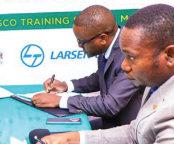 TANESCO, Gridworks advance transmission project
RVE has developed two rural distribution networks serving more than 75,000 people in 38 villages.
Image Credit: Meridiam
Image Credit: Trina Solar
TANESCO, Gridworks advance transmission project
RVE has developed two rural distribution networks serving more than 75,000 people in 38 villages.
Image Credit: Meridiam
Image Credit: Trina Solar
NEWS | POWER www.africanreview.com 20
Image Credit: Gridworks
Trina Solar has been ranked in the top AAA category for the fifth consecutive quarter.
AFRICAN REVIEW OF BUSINESS AND TECHNOLOGY | SEPTEMBER 2023
The deal aims to connect central, coastal and northeastern regions of Tanzania.
Sunnova and SMI fund solar-powered irrigation pumps in South Sudan
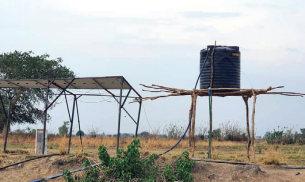
Sunnova Energy International, a US Energy as a Service (EaaS) provider, has announced a strategic collaboration with Seeding Mercy Inc (SMI), a nonprofit organisation dedicated to addressing the hunger crisis in East Africa.
Together, Sunnova and SMI have funded the deployment of off-grid solar powered irrigation pumps for farms in South Sudan. This initiative not only aims to combat hunger but also paves the way for sustainable and renewable development in East Africa, creating social value for all communities involved.
Recognising the need for sustainable farming practices, SMI and Sunnova joined forces to invest in the deployment of solar power for irrigation purposes in Aweil, South Sudan. Utilising a ‘feed-forward’ model that contracts with local farmers, SMI provides them land, tools and training in return for a fair share of the profits to replicate and reinvest the same model in other communities. Through Sunnova’s philanthropic contribution, which included portable solar systems, pumps, farming tools and transportation, SMI installed a solar-powered off-grid irrigation system to support three newly established farms. Since December 2022, these farms have planted, harvested, and brought to market 370 baskets of crops that include onions, okra, kale, kusamawiki, and kudhura, which has resulted in US$24,000 of income to these farmers.
The initial success of this ‘feed forward’ collaboration demonstrates the viability and effectiveness of solar-powered irrigation systems in boosting crop productivity and ensuring sustainable farming practices. Through the project, SMI employed 591 families.
“By joining forces, Sunnova and SMI are spearheading a movement towards sustainable and decentralised energy resources, fostering the growth of new enterprises and improving people’s lives,” said William Berger, CEO of Sunnova.
“This collaboration goes beyond merely providing solar solutions; it strives to empower the community itself,” said Aken Tong, CEO of SMI. “By training SMI's clients to become farmers, we foster a renewable and agricultural ‘micro democracy’ in South Sudan.”
MAJOR INVESTORS TO SUPPORT RENEWABLES COMPANY ZHERO EUROPE
TotalEnergies, Baker Hughes, Technip Energies, Azimut (through the fund Azimut ELTIF – Infrastructure & Real Assets ESG) and other investors have signed preliminary agreement to invest in Zhero Europe in order to develop large scale renewable energies projects in Europe and Africa spanning across renewable power generation, power interconnections and green molecules.
Zhero Europe was founded with the vision that large integrated projects, including generation from high quality wind and solar resources, and captive long-distance exports, would be the most effective way to accelerate the energy transition in high demand areas.
Zhero Europe is controlled by Zhero, which was founded by Marco Alverà, Paddy Padmanathan, Alessandra Pasini and Enrico Vitali at a time when a new generation of renewables are positioned for massive scale-up.
Dyness Digital completes financing rounds
Dyness Digital Energy Technology Co, an energy storage technology company, has announced that it has completed rounds of B and C financing successively. Youshan Capital and a fund affiliated with CICC Capital are the lead investors, and several other well-known investment funds also participated, such as L Catterton.

Yang Liu, CEO of Dyness, said that with the financing complete, the company will increase its investment in the development of new technologies and accelerate the expansion of C&I energy storage product lines.

CNRS, STELLANTIS, SAFT CREATE INNOVATIVE BATTERY
After four years of design, modelling and simulation, a team of 25 people comprised of CNRS (French National Centre for Scientific Research), Stellantis and Saft engineers and researchers have unveiled an innovative prototype of an energy storage battery that integrates the inverter and charger functions. Integrating the inverter and charger functions creates a battery that is more efficient, which enhances the battery electric vehicle range and is more reliable and less costly. It also frees up room in the vehicle.
The project is known as the intelligent battery integrated system (IBIS). A demonstrator, operational since summer 2022, is the subject of numerous patents and marks a major break from electrical energy conversion systems currently used. The project has made it possible to validate many new technical concepts and master their control and operation in preparation for automotive or stationary applications.
With IBIS, the electronic conversion boards that perform the power inverter and charger functions are mounted as close as possible to the lithium-ion battery cells. A sophisticated control system enables alternating current for an electric motor to be produced directly from the battery.
The IBIS project partners are now focused on building a fully functional prototype vehicle that will be tested on Stellantis development benches and test tracks as well as on open roads. The team intends to make this technology available on Stellantis brand vehicles before the end of this decade.
“Our journey to electrification is fueled by innovation and research excellence that uses the latest technology to address the real needs of our EV customers such as range, roominess and affordability while reducing carbon footprint by improving efficiency,” said Ned Curic, Stellantis chief engineering and technology officer.
Starsight Energy merges with SolarAfrica
Starsight Energy and SolarAfrica announced the successful completion of their merger. The merged group is now set to become the market leader in providing on- and offsite renewable energy solutions to commercial and industrial customers in key African markets. The expanded solutions portfolio will unlock increased efficiencies across the group, allowing the new body to take more customers on a green energy journey that solves their power requirements and enables a sustainable future.
BRIEFS Image Credit: Dyness Digital Energy Technology
POWER | NEWS www.africanreview.com 21 SEPTEMBER 2023 | AFRICAN REVIEW OF BUSINESS AND TECHNOLOGY
The financing will support brand upgrading.
The merger will offer on- and offsite renewable energy solutions.
Image Credit: Adobe Stock
Image Credit: Sunnova
The initiative aims to combat hunger and paves the way for sustainable development in East Africa.
Hopes high for hydrogen
Today, there are few resources considered with greater expectation than hydrogen. Demand is currently dominated by heavy industries and is most commonly used in petroleum refining and fertiliser production. In addition, it is grey hydrogen that commands production, this being the creation of the resource from natural gas or methane without the use of carbon capture and storage (CCS), with production through coal (black or brown) closely following.
The future of hydrogen, however, looks very different from both ends of the spectrum. Most notably, the remarkable versatility of the element as an energy carrier is drawing particular attention from the transportation sector (as a fuel for shipping, aviation and road transportation) as well as in power generation and storage. There is also
greater attention being dedicated to the wider hydrogen rainbow, with expectations that green (production through electrolysis powered by renewables), blue (production through natural gas using steam reforming with the use CCS), and even pink (electrolysis powered by nuclear energy) will play a bigger role in production.
With the rise of clean hydrogen in both production and use, the IEA has indicated its importance is rising in the 2050 net zero emissions scenario, playing a particularly effective role in decarbonising sectors where emissions are hard to abate such as transport and heavy industries like steel production.
While significant investment is still required (to overcome challenges such as commercial feasibility and infrastructure deficits), the potential necessity of hydrogen is creating a
significant market. IDTechEx, for instance, has projected the lowcarbon market will reach US$130bn by 2033 while Deloitte’s Hydrogen Pathway Explorer model has indicated clean hydrogen could account for nearly 70% of a US$1.4 trillion hydrogen market by 2050.

Notably, this could be to the supreme benefit of regions that are able to produce cost-competitive hydrogen in large quantities, enabling them to become hydrogen exporters as well using it domestically. Deloitte continued that North Africa alone could expect to benefit by around US$110bn per year due to its high export potential. With the rest of Africa enjoying deep pockets in the currency of renewables, an equally exciting future could await if enabling infrastructure networks can be delivered.
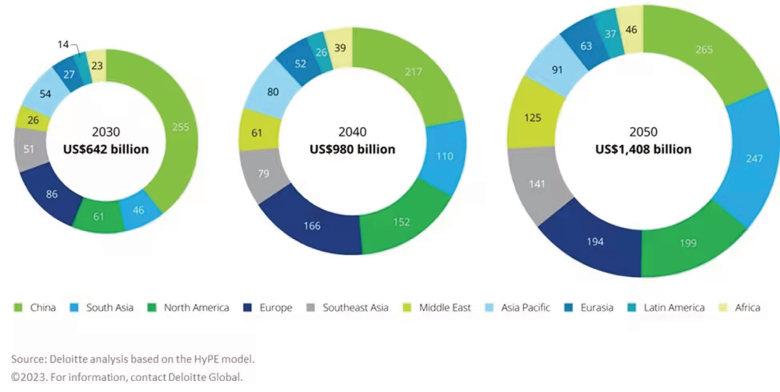
Positioning for the future
It was partially on the basis of this understanding that African ministers responsible for climate change visited the German Bundestag as part of an inter-ministerial visit through the West African Science Service Centre on Climate Change and Adapted Land Use (WASCAL) and the Southern Africa Science Service Centre on Climate Change and Adaptive Land Management (SASSCAL).
Among the key issues discussed was the need to strengthen partnerships between Germany and the two institutions to achieve the common goal of a successful energy transition through green hydrogen and to build wider capacities around the resource.
WASCAL ministerial chair, Amadou Keita, remarked that green hydrogen has the propensity to transform the geopolitical energy landscape for fossil fuel, citing the significant investment pledges dedicated to Egypt “This is a clear indication that Africa is endowed with technical propensity for producing cheap green hydrogen more than any other continent the world over,” he said.
The Economic Community of West African States (ECOWAS) has similarly declared that the concept of green hydrogen “has emerged as a new beacon of hope for the region” which presents a unique opportunity for West Africa to unlock it vast renewable energy potential, secure a sustainable
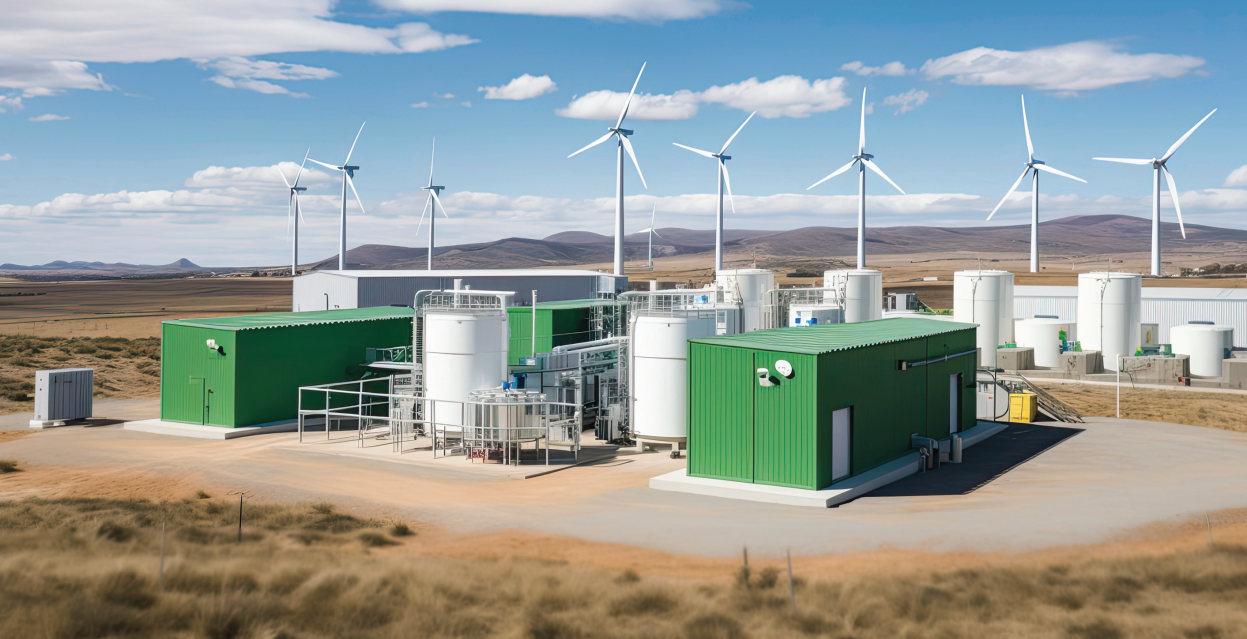
AFRICAN REVIEW OF BUSINESS AND TECHNOLOGY | SEPTEMBER 2023 www.africanreview.com 22
Numerous continental efforts are being pursued to take advantage of the vast potential of the hydrogen economy.
POWER | HYDROGEN
Clean hydrogen market size (US$bn per year) 2023-2050, according to Deloitte analysis based on the Hydrogen Pathway Explorer model.
According to the IEA, clean hydrogen will play an important role in achieving net zero 2050.
Image Credit: Deloitte
Image Credit: Adobe Stock
future and offer a promising solution to energy access challenges. In light of this, the ECOWAS Centre for Renewable Energy and Energy Efficiency (ECREEE) has forged a partnership with WASCAL in order to develop green hydrogen policy, strategy framework and an action plan to facilitate this future.
Furthermore, in order to make the continent a frontrunner in the race to develop green hydrogen, six African countries formally launched the Africa Green Hydrogen Alliance to create a sustainable, collaborative environment. Kenya, South Africa, Namibia, Morocco, Egypt and Mauritania launched the initiative in order to develop public and regulatory policy, capacity building, financing and certification in order to mobilise green hydrogen production.
In recent months, media front pages have been saturated with news of likewise developments, with an exceptional number of announcements circulating around Africa’s green hydrogen space. A selection of notable sub-Saharan countries which have explored projects include:
Namibia:
A hotbed of green hydrogen activity is indicative of a country that has staked much of its future prosperity on the growth of the market. The most significant announcement came in May with the Government approving the entry into an agreement with Hyphen Hydrogen Energy for the development, implementation and operation of a fully vertically integrated, green
hydrogen project.
The total project capital investment is a staggering US$10bn with full scale development anticipated before the end of the decade. Hyphen has proposed the development of common user infrastructure to facilitate the scale up of hydrogen production to act as a catalyst for the country’s energy independence and make it a netexporter of low-carbon energy.
A memorandum of understanding (MoU) was signed between Hyphen, the Namibian Government, Namibian Ports Authority, NamPower, the Port of Rotterdam, Gasunie and Invest International to create a partnership to drive the delivery of the project.
At this time, the Government announced it would exercise its right to take up a 24% equity interest in the Hyphen project a move which Marco Raffinetti, chief executive officer of Hyphen, praised by stating, “The Government’s commitment to the green hydrogen industry shows that Namibia is moving at pace to establish itself as a leader in the global green hydrogen race.”
South Africa:
The Minister of Electricity, Kgosientsho Ramokgopa, has signed a declaration of intent with the German Government in order to establish a hydrogen task force to drive the commercial viability of green hydrogen projects, industry and infrastructure in both countries. While not legally binding, the task force will formalise the exchange of information around upscaling green hydrogen, support the establishment of lighthouse projects, facilitate market access and promote the trade of green hydrogen and PtX products, and create a network between government, industry and research institutes from both countries.
At a similar time, the Development Bank of South Africa (DBSA) revealed the SA-H2 Fund, a blended finance fund that will facilitate and accelerate the development of a green hydrogen and circular economy in the country. The fund is supported by Climate Fund Managers, Invest International B.V., Sanlam Limited, DBSA, the Industrial Development Corporation of South Africa and other strategic partners. It will aim to secure US$1bn in funding that will be focused on fast-tracking the mobilisation of funding towards the development and construction of large-scale infrastructure assets.
Catherine Koffman, group executive – project preparation at DBSA, commented, “We will create and use innovative blended finance architecture and structuring to build a substantial pipeline of green hydrogen projects in South Africa. This
will give private sector developers access to risk capital from an early stage of development, throughout construction and into operations.”
South Africa has also been elected by the PNE Group and SET Select Energy GmbH as the location of their joint venture to produce and market synthetic fuels from renewable energies. The two companies plan to produce up to 500,000 tons of efuels per year, obtained from green hydrogen produced via electrolysis.
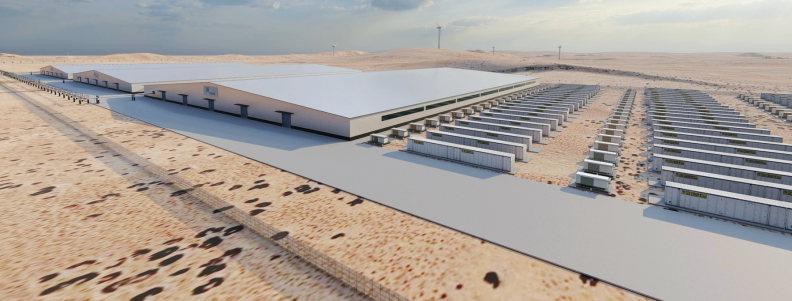
Kenya:
Seeking to harness its significant wind and solar power, the Kenyan Government has sought to strengthen its ties with the European Investment Bank (EIB) in order to firm up support for green hydrogen investment into the country.
Njuguna Ndung’u, Cabinet Secretary, National Treasury and Economic Planning, signed a joint venture with Thomas Östros, EIB vice president, in pursuit of this and in a bid to develop projects that will ensure green hydrogen as a key part of the Kenya Energy Roadmap 2040. This initiative will improve understanding of how best to identify, structure, unlock and implement investment with the EIB expecting to initially mobilise approximately US$2mn of grants from the EU to appraise possible loan financing for larger investment.
Last year, at COP27, the Government also signed a binding framework agreement with Fortescue Future Industries (FFI) to fast-track the country’s development of an affordable green fertiliser supply chain as well as other green hydrogen-based industries
www.africanreview.com 23 SEPTEMBER 2023 | AFRICAN REVIEW OF BUSINESS AND TECHNOLOGY
Hyphen plans to deliver Namibia’s first green hydrogen project.
The Government’s commitment to the green hydrogen industry shows that Namibia is moving at pace to establish itself as a leader in the global green hydrogen race.”
HYDROGEN | POWER
MARCO RAFFINETTI, CEO OF HYPHEN HYDROGEN ENERGY
Image Credit: Hyphen Hydrogen Energy
Zimbabwe:
Hydrogène de France (HDF Energy) signed a MoU with Zimbabwe Electricity Transmission and Distribution Company (ZETDC) to create a framework for the joint technical and administrative work for the development of a green hydrogen power plant investment in the country.
Nicolas Lecomte, HDF director for southern and East Africa, remarked, “The electricity demand in the country is very high... Our solution, the Renewstable hydrogen power plant, is particularly suitable, not only to supply the necessary electricity, but also the network services to improve the stability and operating conditions of the electrical grid.”
Egypt:
A country that is seriously attempting to position itself as a green hydrogen producer with an eye on the lucrative European market on its doorstep. At COP27 last year its Minister for Petroleum, Tarek El Molla, and Minister for Electricity and Renewable Energy, Mohammed Shaker El-Markabi, signed a MoU with the European Commission outlining a strategic partnership on hydrogen. It was described as a central block in building an EU-Mediterranean renewable hydrogen partnership that will support conditions for the development of the industry, including infrastructure and financing. The European Commission said it will support the EU’s ambition of reaching 20mn tonnes of renewable hydrogen consumption in 2030.
Egypt’s ambition has attracted a number of suitors, eager to be a part of the opportunity on offer. Indeed, at COP27 the country concluded a number of additional framework agreements with the likes of AMEA Power, TotalEnergies, FFI, and more.
Subsequent partnerships have also been explored, such as a MoU signed between bp, the Government of Egypt, Egypt’s New and Renewable Energy Authority (NREA), the Egyptian Electricity Transmission Company (EETC), the General Authority for Suez Canal Economic Zone (SCZONE) and the Sovereign Fund of Egypt for Investment and Development (TSFE) to explore the potential of establishing a green hydrogen production facility in the country. bp agreed to carry out studies to evaluate the technical and commercial feasibility of developing a multi-phase, large-scale green hydrogen export hub in the country with high potential locations to be considered, targeting best-in-class resources.
According to Egyptian Prime Minister, Mostafa Madbouly, the country has now signed no less than 20 MoUs with major companies around green hydrogen and aims to produce 15mn tons of green ammonia and green methane for domestic use and export to Europe.
Morocco:
Chariot Green Hydrogen, Mohammed VI Polytechnic University and Oort Energy Limited have signed a partnership agreement to test the production of green hydrogen in the country. The pilot project will utilise a 1MW polymer electrolyte membrane (PEM) electrolyser system

as proof of concept and will also develop education and capacity building to support the growth of a green hydrogen economy.
“This endeavour is another step forward in Chariot becoming a green hydrogen producer and will be of real value to our project developments in Morocco and Mauritania as we confirm electrolyser performances,” remarked Laurent Coche, CEO of Chariot Green Hydrogen.
Mauritania:
The Government was one of the leading partners which supported the EIB, International Solar Alliance and Africa Union’s study into the wider continent’s green hydrogen potential. The study concluded that Africa’s solar resources alone could produce 50mn tons of green hydrogen a year by 2035 which could help secure global energy supply, create jobs and decarbonise heavy industry.
The country has bought into this future which would see Africa at the fore of a hydrogen revolution. In light of this, a number of organisations have marked their interest in the country: bp has agreed to evaluate
the technical and commercial feasibility of producing green hydrogen in the country; Gaia Future Energy and HyDeal have launched HyDeal Africa for the offtake, transport and export of mass-scale green hydrogen from Mauritania and Morocco; and Chariot has partnered with Total Eren to explore ‘Nour Project’ a large-scale green hydrogen project in the country.
Nigeria:
The excitement around green hydrogen has not fallen on deaf ears in Nigeria, with former Vice President, Yemi Osinbajo, urging the nation and the Nigerian National Petroleum Company to consider investments in green hydrogen and embrace the opportunity it offers for a cleaner future before he left office.
Kuber Group Africa is one company that has taken notice as, at the start of July, it signed a MoU for rapidly advancing the large multiMW hydrogen projects it has secured with leading AEM Hydrogen Electrolysers by Cipher Neutron. This will be for industrial applications, clean energy storage and power energy generation required by Kuber and its clients for projects in Nigeria and Ghana.
Raj Kalra, chairman of the Kuber Group, stated, “Cipher Neutron's AEM technology fits perfectly with our ongoing hydrogen projects across Africa. We are delighted to launch PFAS-free and PGM-free disruptive AEM electrolyser technology in the African continent to foster the greener and more sustainable future of Africa and the rest of the world.” ■
www.africanreview.com 24
The signing ceremony between Chariot Green Hydrogen, Mohammed VI Polytechnic University and Oort Energy.
This endeavour is another step forward in Chariot becoming a green hydrogen producer and will be of real value to our project developments in Morocco and Mauritania.”
POWER | HYDROGEN
LAURENT COCHE, CEO OF CHARIOT GREEN HYDROGEN
AFRICAN REVIEW OF BUSINESS AND TECHNOLOGY | SEPTEMBER 2023
Image Credit: Mohammed VI Polytechnic University
The ever-growing need for power
African Review (AR): Could you provide detail on your company’s presence in Africa?
Ben Whitmarsh (BW): We have an active following within Europe and have seen a dramatic increase in demand for quality products from Ukraine and surrounding territories over the past 12 months for obvious reasons. We have also seen a steady increase in demand from the Nordic region as well as Poland.

Africa is one of our key markets. We believe one of the many reasons for our success there is because of our dealer development business model. This includes our exceptional knowledge of how to handle the financial transaction, shipping and documentation requirements for each territory.
We do not simply sell a generator and walk away. Our goal is dealer development. We are always looking for businesses to genuinely partner with, to help develop and grow their knowledge base. By using our inhouse training and marketing offerings, we facilitate the growth of their businesses. We want our customers to feel part of our family and be part of our team. This is essential in developing an evergrowing dealership network internationally.
Africa has always been a key part of our business strategy. We understand that the demand for power is greater than the infrastructure currently in place can cope with. Therefore, gensets will continue to be part of the ever-
growing need for power. We are aware of the ever-increasing need to consider renewables as part of our offering, as well as solar and battery storage alongside a generator. Optimising a generator to make sure the energy is not wasted is something we actively discuss with our clients.
AR: How are you expecting the African market to develop for the company?
BW: We only see growth. We still have many countries within Africa where we don’t currently have representation and we are actively looking for businesses who are not happy with their current supplier. We are urging businesses who are looking to add a generator range to their business to get in touch to explore dealership opportunities with us.
AR: Why did the company acquire Musgrave Generators and how will this expand your portfolio?
BW: The Musgrave Generators brand sits perfectly between GFE Power Products and its sister company, Generators for Export. Generators for Export can provide existing Musgrave Generators customers with a decommissioning service, removing old and outdated
electricity-generating systems whilst GFE Power Products can support the replacement of these units, providing off-the-shelf solutions.
GFE Power Products in association with Musgrave Generators are able to design and build a bespoke product depending on the customer’s specification.

AR: Are bespoke products a growing interest from your customers?
BW: We are finding that the skill of generator selection seems to have been diluted in the market as of late, with businesses pushing the products they represent, rather than looking at the needs of the customers. Once the needs of the customer have been identified, we place the importance on selecting the correct product for the correct application or even creating something unique or tailor-made. It all comes down to the initial discussion with the client and/or the relationship that is built.
The UK market is definitely seeing an uplift in non-standard equipment whereas the African market is still generally happy to work with a standard product most of the time. We are seeing occasional enquiries for upgrades to standard equipment with items such as synchronisation or the ability to top up batteries. We believe that we are at the beginning of this trend but as a business we want to be at the forefront of making our dealers the best that they can be.
Through training and support, we help them ask the right questions to enable them to offer a knowledgebased proposal to their customers. ■
www.africanreview.com 25 SEPTEMBER 2023 | AFRICAN REVIEW OF BUSINESS AND TECHNOLOGY GENERATORS | POWER
Following the acquisition of bespoke generator manufacturer, Musgrave Generators, Ben Whitmarsh, director of Generators For Export and GFE Power Products, explains how the market is opening up for the company.
We are urging businesses who are looking to add a generator range to their business to get in touch to explore dealership opportunities with us.”
BEN WHITMARSH, DIRECTOR OF GENERATORS FOR EXPORT AND GFE POWER PRODUCTS
The acquisition of Musgrave Generators will enable GFE Power Products to support an increasingly growing network.
Image Credit: GFE Power Products
Ben Whitmarsh is the director of Generators For Export and GFE Power Products.
Image Credit: GFE Power Products
Leading the way for microgrids
Many industries across Africa use captive power plants for local generation of energy. Many of these use diesel engines for base-load power connecting multiple site loads. In the early 2000's we started to see, where available, base-load diesel engines starting to switch to gas-based power to save operational costs and in parallel reduce emissions, with diesel engines being retained for back-up generation. This was most notable in Nigeria, South Africa, Tanzania and Tunisia.
‘Microgrid’ development is currently a hot topic in much of the world. The United States Department of Energy defines a microgrid as "a group of interconnecting loads and distributed energy resources within clearly defined electrical boundaries." Therefore, Africa has been deploying "microgrids" for many years and they form the backbone of the industrial energy system. Microgrids offer the potential for local energy resilience, and when incorporating wind, solar, or renewable fuels such as biogas, can also deliver tangible carbon savings. In the United States, Australia and many other parts of the world, microgrids are considered a key to the future of the energy mix for commercial and industrial buildings. Significant financial benefits are being offered from the much vaunted Inflation Reduction Act of 2022.
Introducing innovations
Technical innovation in microgrids has been happening for a number of years. Clarke Energy, a leading provider of distributed energy solutions, has supplied 900MW of generation capacity across
the continent and a significant 84% of this operates on fully islanded or grid connected with island mode configuration.
One of the early complex microgrids that Clarke Energy installed was at OK Plast in Lagos Nigeria. Here an installation that operates at a plastics company using three engines was running in suboptimal conditions due to major frequency swings from very rapid and continuous load changes of 30-200kW. The solution in 2018, was to add energy storage in the form of ultra-capacitors. With this solution only one engine out of three was required to operate the facility, with the second and third units on assist and standby. This translated to improved efficiency, lower operational costs and

as a by-product reduced emissions.
Renewable fuels are also available for captive power plants. Most notably Tropical Power's Gorge Farm Energy Park in Kenya, which hit the headlines in 2015 as being at the time the largest grid connected biogas plant in Africa. Surplus energy from the anaerobic digesters treating locally produced wastes being used to power the farm and local operations.
Africa has also led the way on innovation in the field of hydrogen. Installations at furnaces in South Africa, such as Tronox, use hydrogen rich furnace gas for power generation. Technical learnings from these energy solutions has been on the pathway for the release of wholly hydrogen-fuelled ‘Jenbacher’ generating sets being developed by INNIO group.

Developments ahead
So, what is the future? We are seeing a greater availability of gas across the continent in advance of gas transmission lines and certain operators are now supplying compressed and liquefied natural gas to areas where it was not previously available. This diesel engine-based power can be gradually replaced with natural gas or even hydrogen and biogas where local conditions and economics permit. The next phase will be integration of solar and energy storage technology to decarbonise and make use of prevalent solar resources across the continent. ■
AFRICAN REVIEW OF BUSINESS AND TECHNOLOGY | SEPTEMBER 2023 www.africanreview.com 26
Alex Marshall, group business development and marketing director – US at Clarke Energy, explores how Africa is at the forefront of microgrid development, a hot topic across the globe.
POWER | MICROGRIDS
Tronox Namakwa Sands Combined Heat and Power Plant – a captive power plant using a hydrogenrich gas, previously flared for power generation.
Image Credit: Clarke Energy
Gas-fuelled gensets using compressed natural gas at the University of Port Harcourt in Nigeria.
Image Credit: Clarke Energy
ATLAS COPCO LOOKS TO TRANSFORM PORTABLE POWER SECTOR
Atlas Copco Power and Flow has launched five new models of its industry-leading lithium-ion Energy Storage Systems (ESS). The new units take modular energy storage to a new level, expanding the spectrum of suitable applications, and providing customers with increased options for power. The state-of-the-art systems, which have been designed with sustainability in mind, are suited to noise-sensitive environments, such as events, metropolitan construction sites, telecom, manufacturing, mining, oil and gas and rental applications, and enable operators to dramatically reduce their fuel consumption and CO2 emissions.
The additions to Atlas Copco's portfolio include a larger ZBC 300-300 unit and a smaller line of battery-based storage systems, the ZPB 45-60, ZBP 45-75, ZBP 15-60 models, and the
COLLABORATION PAVES THE WAY FOR GEOTHERMAL ENERGY
Baseload Capital, a leading investment entity dedicated to advancing geothermal energy deployment globally, has announced its second strategic investment from energy technology company, Baker Hughes. This innovative partnership sets the stage for geothermal energy and marks a significant milestone in the pursuit of clean, baseload and renewable power solutions for global markets. Key highlights of the partnership include:
Expanding global geothermal project development: through strategic collaboration in multiple regions worldwide, Baseload Capital and Baker Hughes will bolster geothermal energy project development capabilities. This expansion aims to position geothermal as a high-impact, clean energy source for global markets.
Catalysing market growth: the collaboration will facilitate the implementation of new commercial and development models, driving rapid market growth and online geothermal capacity expansion. The goal is to pave the way for a substantial increase in geothermal electricity production, heating and cooling, projected to surpass 100% by 2050 (including traditional hydrothermal sources).
Advancing next-generation technologies: Baseload Capital's geothermal initiatives will experience a transformative scaling up, as the collaboration with Baker Hughes propels nextgeneration geothermal technologies from the pilot stage to commercial scale. With the inclusion of enhanced and advanced geothermal systems, the geothermal sector is projected to grow 30-fold by 2025.
ZBP 2000 with two flexible solar panels. With a complete offer of ESS, users will now benefit from increased flexibility and versatility in their operations, with both stand-alone and hybrid
solutions across their sites.
These energy storage systems are suited for applications with a high energy demand and variable load profiles, as they successfully cover both low loads and peaks. For example, they can properly size cranes and other electric motors, and successfully manage peaks in energy demand for noise-sensitive events and for electric vehicles (EV) recharging stations. Furthermore, operators can synchronise several models, which can become the heart of any microgrid, storing and delivering energy coming from several energy sources, including renewables.
Atlas Copco also launched its own fast charger for electric vehicles and heavy-duty machinery –the Z Charger, to enhance the electrification of certain sectors.

MTU KINETIC POWERPACKS APPROVED BY ROLLS-ROYCE

Rolls-Royce has approved its mtu Kinetic PowerPacks, based on the mtu Series 4000 and 1600 diesel engines, for use with renewable diesel (HVO/Hydrogenated Vegetable Oil) and the other synthetic diesel fuels of the EN15940 standard. This means that the mtu systems for dynamic uninterruptible power supply (DUPS) can now be operated in an even more environmentally friendly manner. This is because with HVO the CO2 footprint can be reduced by up to 90% (depending on the fuel's manufacturing process and feedstock), particulate emissions by up to 80% and nitrogen oxide emissions by up to 8% compared to fossil diesel.
Tests on the Rolls-Royce Power Systems test bench at the Liège site in Belgium showed that the use of HVO had no effect on the dynamic behaviour of the engine during critical phases under typical load conditions. The systems performed the same with HVO as with fossil diesel. Previously, Rolls-Royce had already approved its mtu Series 1600 and Series 4000 gensets for EN15940 synthetic diesel fuels following successful tests on the test bench and in the field. The mtu Kinetic PowerPack comprises a constantly rotating kinetic energy storage unit with flywheel, an mtu diesel engine, and a generator that doubles as an electric motor for the purpose of compensation, depending on the operating mode.
If the public power grid fails, the systems intervene immediately and without interruption because they are already in action. Part of the energy stored in the flywheel is used to drive the generator, which begins producing electrical power. Meanwhile, another part of the stored rotational energy is used to facilitate very fast start-up of the diesel engine. Within the shortest possible time, the engine reaches its rated power output and can now start producing electrical power via the generator and stabilise the flywheel. This happens without any interruption.
POWER | SOLUTIONS www.africanreview.com 27 SEPTEMBER 2023 | AFRICAN REVIEW OF BUSINESS AND TECHNOLOGY
The systems’ design targets sustainability.
Tests showed that the use of HVO had no effect on the dynamic behaviour of the engine.
Image Credit: Atlas Copco
Image Credit: Rolls-Royce
SOLUTIONS
TRAFO POWER SOLUTIONS ADVANCES WITH MODULAR SUBSTATIONS

Trafo Power Solutions, a specialist in dry-type transformers, has expanded its offerings to include modular substations, capitalising on its extensive experience in custom-engineered electrical solutions.
The move was prompted by the growing demand for complementary systems related to dry-type transformer applications. This expansion comes as a natural evolution of Trafo Power Solutions' role as a reliable supply partner, capable of understanding the unique demands of various projects and applications.
Modular substations, also known as E-house structures, serve as prefabricated environments for housing critical electrical equipment and systems. Commonly utilised in industrial settings, power plants, mining operations, oil and gas facilities, and other contexts requiring
JP ENERGY’S SOLUTIONS FOR POWER NEEDS
Johnny Picasso Energy Solutions Limited, a leading solar energy company based in Lagos, Nigeria, has announced the launch of its JPC and JPE Solar Generator series. These portable generators provide efficient and reliable power solutions for both residential and commercial applications, catering to the diverse energy needs of individuals, small and medium-sized enterprises (SMEs), public sector institutions, and special needs facilities.
Designed for autonomous consumption management, the JPC and JPE Solar Generator series offer dual charging options, making them versatile and adaptable to different energy sources. Embedded with original lithium batteries, these generators ensure long-lasting power usage, providing an uninterrupted energy supply for homes, offices, SMEs, public sector institutions, and special needs facilities.
JP Energy distinguishes its products through characteristics such as portability, affordability, sustainability, and efficiency. These generators cater to a wide range of consumers, including homeowners, small business proprietors, public sector establishments, and those with unique energy demands. The integration of original lithium batteries within these generators ensures extended power utilisation and a consistent energy supply, facilitating the adoption of sustainable energy practices.
Notable offerings include the JPC 049 300W Solar Generator, JPC 050 500W Solar Generator, JPC 150 1500W Solar Generator, among others from the JPE Series. Each model is methodically engineered to uphold optimal performance, durability, and efficiency.
reliable power, these structures consolidate equipment such as switchgear, transformers, motor control centres, distribution panels, and control devices.
A notable advantage of modular substations lies in their assembly and testing under controlled workshop conditions, ensuring costeffectiveness and high quality. This streamlined process simplifies transportation and installation on-site. The integration of dry-type transformers within the compact modular structure aligns perfectly with its philosophy, enabling shorter cable runs, safer installation, and bypassing the need for extensive civil engineering work.
Trafo Power Solutions' transition to providing integrated solutions has elevated its market standing beyond single component supply. By offering packaged solutions, the company reduces customer points of contact during projects and diminishes the challenges associated with integrating various electrical aspects.
Perkins expands product range
Perkins Engines has built on its range of EU Stage V power offering by announcing the 2806JE18TAG1 ElectropaK, a new engine designed to deliver a powerful package and ease of integration. The 18-litre 2806J, available to order and supported by the company’s global network of 88 distributors covering 185 countries, provides excellent load acceptance in a wide range of electric power applications. From a stationary prime source of power to a mobile unit serving the rental sector, the 2806J can generate dependable power for everything from jobsites to critical installations such as hospitals and data centres.

A key feature of the 2806J is that it can run with biodiesel up to B20 based on a 20% dilution of biodiesel with standard diesel or on 100% hydrotreated vegetable oil (subject to fuel used meeting Perkins’ fuel specifications). It produces up to 610kVA at 50Hz and is switchable to 60Hz, delivering up to 625kVA.
The Electropak features the latest electronics with a single, on-engine electronic control module (ECM) to simplify wiring harnesses, ease installation, and support future diagnostics. It is also fully capable of integration with customers’ telematics solution. The ECM also manages all aspects of aftertreatment operation and regeneration without operator input.
Perkins offers a growing portfolio of connectivity solutions that can help promote the optimal performance of diesel engines. Available as a standalone service from Perkins or easily integrated with generator equipment manufacturers’ offerings, connected engine capabilities deliver timely insights through a customisable dashboard on performance, fuel and oil consumption, and other vital engine data points that assist in maximising the uptime of Perkins-powered equipment.
These connectivity offerings are integrated with expert maintenance and service capabilities from the Perkins global distributor network to prompt the proactive diagnosis and resolution of engine issues.
| POWER
AFRICAN REVIEW OF BUSINESS AND TECHNOLOGY | SEPTEMBER 2023 www.africanreview.com 28
The modular structure can be more easily transported and installed on site.
The 18-litre 2806J-E18TAG1 ElectropaK produces up to 610 kVA at 50 Hz and is switchable to 60 Hz, delivering up to 625 kVA.
Image Credit: Trafo Power Solutions
Image Credit: Perkins
AfriSam achieves LTI-free milestone
Construction material supplier, AfriSam achieved 1.75mn Lost Time Injury (LTI) Free hours earlier this year. This means that the plant has been injury free for nine years.


In a statement issued by AfriSam, the company said that, “As one of the leading players in the supply of aggregates, cement and concrete readymix, AfriSam is committed to safe operation at all its facilities. A strong commitment to ongoing training of its people as well as visible leadership underpins the company’s approach to safety and has clearly borne fruit at the Slagment Operation.”
The company is situated in the industrial area on the outskirts of Vanderbijlpark in South Africa. It manufactures Slagment, which is the registered trade name for Ground Granulated Blast Furnace Slag (GGBFS) and is a by-product of the iron- and steel production process. It is a latent hydraulic binder that is used in concrete and other construction applications as a partial cement replacement material. Due to its cementitious properties and depending on the application, slagment can replace up to 70% of Portland cement in concrete, enhancing its quality.
NEW CERTIFIED MOBILE ELECTRIFICATION CENTRES IN AFRICA
To hasten the shift to low-carbon mobile equipment operations, motion and control technology expert Parker Hannifin is establishing a new network of Certified Mobile Electrification Centres in Europe, the Middle East, and Africa.
The first Parker distributor to successfully complete the demanding training and testing procedure necessary for accreditation is Novum Tech, situated in Goncelin, close to Grenoble. As Parker develops this new network, more will appear in France and other nations. To help mobile equipment manufacturers electrify their units is the goal of Parker Certified Mobile Electrification Centres. The driveline of the machine is often the sole component upgraded during the first electrification procedure, with the diesel engine being swapped out for an electric motor. But from the second phase, they seek to reduce the energy consumption of mobile machines to extend their autonomy and improve productivity.
“We chose Novum Tech for its proven expertise in electrification systems design and ability to deliver series production of integrated solutions that leverage the full potential of Parker’s mobile and motion control technologies,” said Adrien Tenga, market development manager, Motion Systems Group EMEA. “As a partner within our evolving network of Certified Mobile Electrification Centers, Novum Tech shares our commitment to help on- and off-road machine manufacturers to reduce environmental impacts while optimising operational efficiency.”
www.africanreview.com 29 SEPTEMBER 2023 | AFRICAN REVIEW OF BUSINESS AND TECHNOLOGY
CONSTRUCTION | NEWS
The company says it has been injury-free for nine years.
Image Credit: AfriSam
Volvo Construction Equipment reveals electric charging protocol
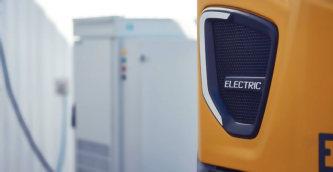
Direct current charging systems do not yet have any industry standards. This implies that clients who have a fleet of different brands will likely need to purchase several separate chargers at this time.
In order to use its 48V off-board DC chargers, Volvo CE has chosen to publish its own brandneutral software protocol as well as socket standards. DC charging is sometimes referred to as rapid charging. This makes it possible for more OEMs and suppliers to use it when creating their own charging options for small equipment.
By assisting the larger industry in developing additional charging solutions based on a standard protocol, Volvo CE hopes to expedite and accelerate the electromobility shift in favour of customers switching to emission-free options.
A 48V power supply is designed for the smallest range of compact construction machines. For Volvo CE, this currently applies to the ECR18 Electric, EC18 Electric and ECR25 Electric compact excavators, the L20 Electric and L25 Electric compact wheel loaders and the DD25 Electric asphalt compactor.
For heavier equipment, the use of a 600V power supply is required. There is already an industry standard protocol for this voltage that has been designed by the automotive industry.
Fredrik Tjernström, electromobility solutions sales at Volvo CE, said, “We want to contribute to a standardised, reliable and efficient electric ecosystem that makes it easy for our customers to go electric! Today, lacking a standard brand-agnostic charging interface for compact machines, our customers will need different chargers for different machine brands.
“By making our charging interface public, we hope that we will see more and more charging solution providers and other machine OEMs using one and the same charging protocol – moving us a step closer to an industry standard for the benefit of customers everywhere.”
The 48V DC protocol from Volvo CE is a free resource and is available on the company’s website.
CONSTRUCTION OF MODERN UNIVERSITY BUILDING KICKS OFF IN NIGERIA
Construction has officially begun at Nnamdi Azikiwe University in Anambra State a new, ultra-modern student affairs centre. The Abdul Samad Rabiu Africa Initiative (ASR Africa) started the construction of the building which will house a sports centre, information and communication technology hub, administrative offices and an amphitheatre capable of seating 1,000 students.
Funds for the building were provided by a tertiary infrastructure grant awarded to the university by ASR Africa as part of its Tertiary Education Grants Scheme. Several other universities across the continent have also benefitted from the fund. Ubon Udoh, the managing director of ASR Africa, commented, “I want to commend the vice chancellor, Charles Esimone, and the entire selection team for this student-friendly project. This is in line with the guidelines of ASR Africa and the vision of Abdul Samad Rabiu, the founder and chairman of BUA Group and ASR Africa for the educational sector in Nigeria. It is a unique project and we hope the students will take advantage of the opportunities presented by the student centre.”
The aforementioned vice chancellor said the university would work judiciously with the contractor to deliver the project on time and that the building will be named after the ASR Africa chairman upon completion.
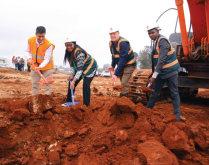
BRIEFS
Construction begins on The Link
Tatu City Limited, Chandaria Properties, M&T Construction and Steel Structures have commenced the construction of The Link, Kenya’s first SME warehousing and logistics park with Special Economic Zone (SEZ) benefits, located in Tatu City, the country’s first operational SEZ. The Link offers flexible leased modern spaces ranging from 800 to 8,000 sq m, and includes a range of amenities such as water, power, and high speed Internet.
SIGNIFICANT NEW CITY PROJECTS IN AFRICA
Estate Intel’s Africa’s New Cities 2023 Factsheet has shown that there are two billion square metres of land reclamation and new city projects in Africa. These are backed by private developers and governments across the region, which are costing more than US$514bn.
North Africa has emerged as the leading region accounting for 88% of planned new city developments across Africa, followed by West Africa at 5.5% and East Africa at 3%. This distribution has been attributed to increased government commitments to ensure quality living and infrastructure in the face of rising urban populations.
Notably, in terms of the top five countries in new city developments, Egypt emerged as the leading country accounting for 33%. This was followed by Nigeria (17.9%), Mauritius (8.9%), Ghana (7.1%) and Kenya (5.4%).
According to Dapo Runsewe, senior analyst at Estate Intel, the formation of these new cities is a result of growing urbanisation, which has resulted in congested cities, taxed infrastructure, and a shortage of resources without sufficient alternatives for cheap housing amid rising poverty levels. These cities offer a chance for builders and the government to build better infrastructure and more livable, linked cities. There is a significant desire for planned cities, and 10 African nations have already launched at least one conceptual project. Cities like New Administrative Capital in Egypt, Konza in Kenya, and Diamniadio in Senegal are anticipated to show a new aspect of African cities that is more efficient, smart, and sustainable.
Notably, the public and private sectors both provide almost similar amounts of money to these cities, with the public sector contributing roughly 48% and the private sector contributing 46%.
Green Building financing for South Africa
To support the development of certified green buildings in South Africa, IFC has announced a partnership with Absa Bank Limited to help expand its residential and commercial loans and mortgage finance programme for buildings that are environmentally responsible and resource efficient. IFC will provide a loan of up to US$236mn to support Absa's strategy to expand its green buildings finance portfolio which will include new certified green buildings and mortgages.
 Volvo hopes to see a shift in favour of customers switching to emission-free options.
Image Credit: Volvo CE
Image Credit: Tatu City
Volvo hopes to see a shift in favour of customers switching to emission-free options.
Image Credit: Volvo CE
Image Credit: Tatu City
NEWS | CONSTRUCTION www.africanreview.com 30
Image Credit: Adobe Stock
AFRICAN REVIEW OF BUSINESS AND TECHNOLOGY | SEPTEMBER 2023
SME warehousing and logistics park gets under way. IFC will give US$236mn for this purpose.
Kenya’s push for affordable housing
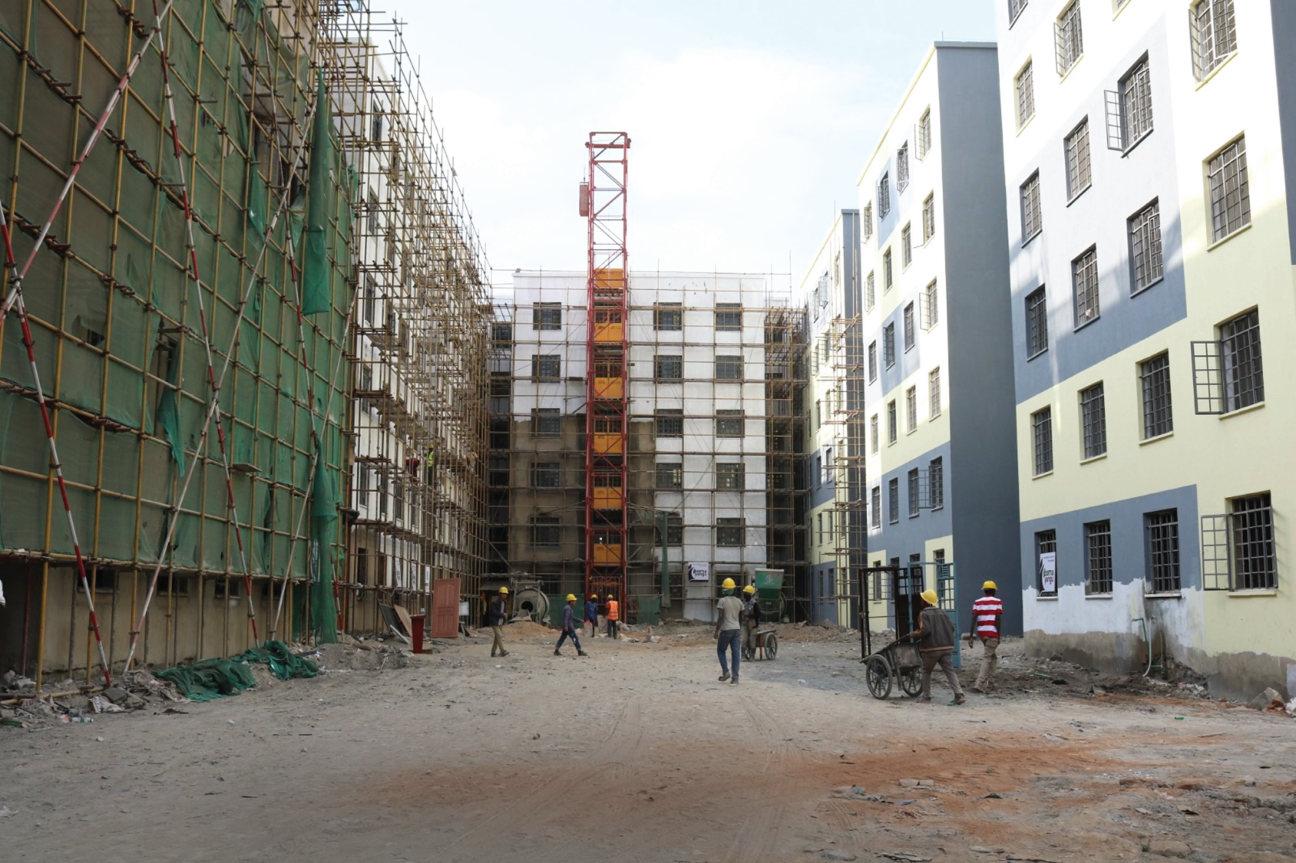
For Sherly Atieno, a green grocer businessperson, the ongoing construction of affordable houses at her Kibera Soweto East Zone B neighbourhood, finally offers her an opportunity to own a house.
At least 4,053 housing units are currently underway in Kibra Constituency, part of Kenya’s capital city.
Kibera is the largest informal settlement in Kenya, housing thousands of residents in ramshackle structures.
“Finally, I may be able to say goodbye to paying rent under this programme. It is a boon to many of us who reside in informal settlements,” observed Atieno on the prospects of entering a tenancy
scheme in which she will contribute as low as Ksh5,000 (approx. US$36) a month to own the house.
The new Kenyan Government of President William Ruto has launched an Affordable Housing Programme (AHP) in which one million will be constructed over the next five years. Since October 2022, at least 32,000 units are currently under construction in Nairobi and other cities across the country; with the primary role of
giving better alternatives to poor housing, especially in numerous informal settlements.
In Nairobi County, at least 3,000 acres are being set aside for the construction of between 400,000 and 500,000 housing units. According to a 2020 World Bank report, 51% of Kenya’s urban population live in shanty towns or informal settlements, with most of them in Nairobi.
“Decent housing is a human
rights issue and the Government is committed to changing the fortunes of the low-income earners by providing good housing for better living,” observed President William Ruto during the groundbreaking in one of the sites for the project.
According to the UN Habitat, Kenya has an annual housing demand of 250,000 units annually, with an estimated supply of 50,000 units – mainly in the middle- and upper-income brackets. This represents an 80% deficit and only 2% of the formally constructed houses target lower-income families.
“Kenya can make housing more affordable to many and in turn create new channels to boost overall economic growth both at the national and county level,” observed
www.africanreview.com 31 SEPTEMBER 2023 | AFRICAN REVIEW OF BUSINESS AND TECHNOLOGY KENYA | CONSTRUCTION
The real motivation behind the housing project is job creation for the young people.”
WILLIAM RUTO, PRESIDENT OF KENYA
Affordable housing under construction in Ngara Suburb, Nairobi.
Image Credit: Mwangi Mumero
Mwangi Mumero reports on Kenya’s drive to achieve affordable housing, an initiative unlocking a diverse range of opportunities for the construction sector and the country’s youth.
Mehnaz Safavian, lead financial sector specialist at the World Bank on the country’s housing development.
Private involvement
The new programme is a symbiotic partnership between the Government and private sector.
The Government sources the land while real estate investors construct the houses with banks in the tow to provide funding.
Along the supply chain are the construction materials suppliers, engineers, architects, other professionals as well as thousands of artisans and workers needed in the construction industry.
Millions of jobs are expected to be created with small and medium enterprises (SMEs) benefitting in this windfall.
“The real motivation behind the housing project is job creation for the young people. This will ensure youth are employed in the many construction sites in the country,” observed President Ruto.
Experts believe for every 5,000 housing units, a least 25,000 youths will get jobs.
A sizeable commitment
The programme is also being partly financed by the taxpayer through
the Housing Fund. Each salaried Kenyan is expected to contribute 1.5% of their gross salary to the fund as a Housing Levy.
Employers are to contribute a similar amount to the fund for each employee in a mandatory deduction approved by Parliament in the Finance Bill 2023.
“The Government will commit in writing to buying all the houses the developers will build under the
scheme as well as provide free serviced land and tax breaks to reduce their construction costs,” said Charles Hinga, Kenya’s Housing Principal Secretary.
Developers will then get to the banks for financing in constructing the houses after which the Government purchases them at a prior agreed price – to reduce uncertainty.
For instance, in the Starehe AHP
site, the Government has partnered with real estate developer firm, Gulfcap, in the ongoing construction of 6,000 housing units at a cost of Ksh13bn (approx. US$93mn).

“The units will range from one bedroom, two bedroom and three bedrooms as well as social houses,” said Chris Ochieng, Gulfcap chief executive officer.
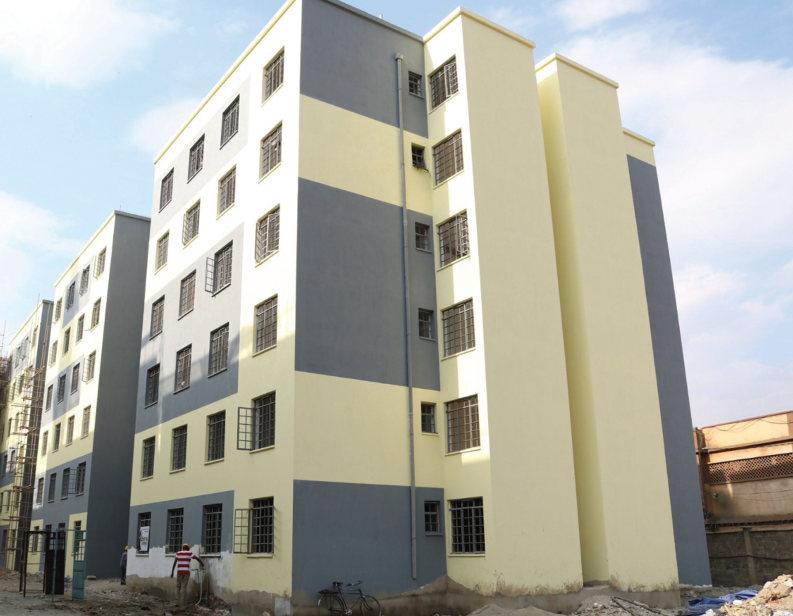
Gulfcap is also partnering with youths and women in providing the necessary industry skills in the project and is specifically working with Buildher, an organisation supporting and training women who venture into construction.
In another site in Shauri Moyo –within the capital city – 16 acres of land has been set aside for the construction of 3,248 housing units at a cost of Ksh10bn (approx. US$71mn). Real estate developer, Epco Builders, is already on site working on the project.
Upon acquiring the houses, the Government will roll out a cheap mortgage scheme to citizens at a 5% annual interest, with a repayment period of 30 years. Monthly instalments will range between Ksh5,000 (approx. US$36) to Ksh15,000 (approx. US$107) –affordable to many low-income earners across the country. ■
www.africanreview.com 32 CONSTRUCTION | KENYA AFRICAN REVIEW OF BUSINESS AND TECHNOLOGY | SEPTEMBER 2023
Millions of jobs are expected to be created through the programme.
The new programme is a symbiotic partnership between the Government and private sector.
Image Credit: Mwangi Mumero
Image Credit: Mwangi Mumero
Safe, sustainable and suitably priced
Since acquiring AT-PAC at the beginning of 2023, Doka has become a “one-stop-shop for customer’s formwork and scaffolding needs” and is delivering solutions to respond to the current challenges facing the construction industry such as high-transport costs, bottlenecks in supply chain and increased organisational/ coordination efforts.
It was under this understanding that the company proudly showcased its Ringlock modular scaffolding at bauma 2022 by constructing a 30 m tower. According to Doka, the scaffolding system allows customers to benefit from seamless planning, rapid availability and a professional rental process underpinned by a quality product; providing a single point of contact for both formwork and scaffolding trades.
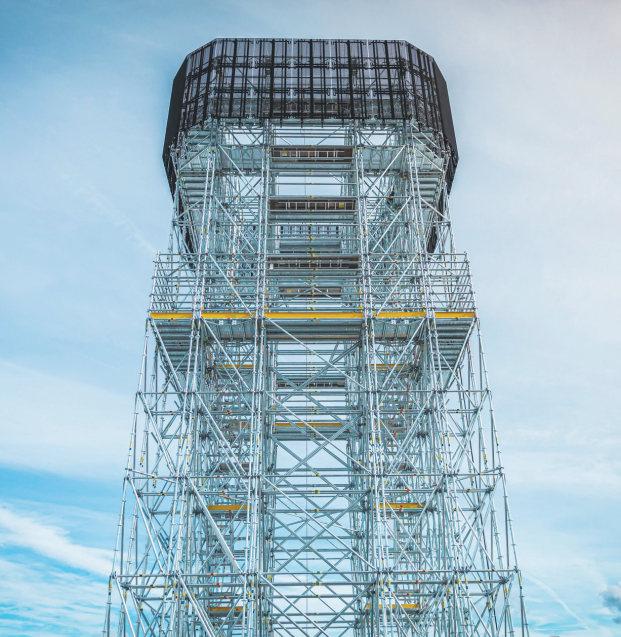
Offering safety and durability, the robust design ensures stability and reduces risk of accidents. As a versatile all-rounder on construction sites, the system can be used for different requirements such as performing reinforcement and formwork quickly and safely. It can also be used as a façade scaffold,
rebar scaffold, trench bridge, stair tower, rolling scaffold, as well as a suspended or birdcage scaffold.
Doka has since added to its portfolio by expanding the capabilities of its DokaXlight system. Originally launched in 2019, the ultra-light framed formwork has become a useful addition for undertaking a wide range of concreting work. Now, the company has added to its versatility through additional support heads and an ergonomic assembly tool which allows the DokaXlight to be used as flab formwork.
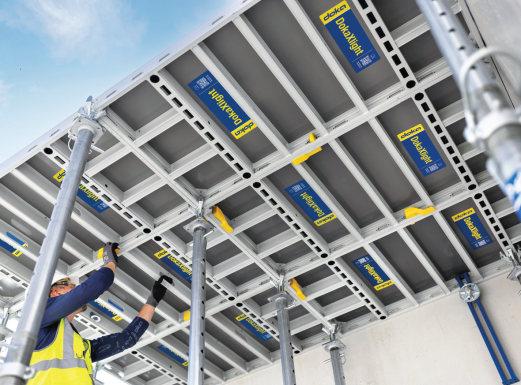
Franz Koppensteiner, product manager at Doka, explained, “With this extension to the DokaXlight system, forming operations in the slab can now be carried out even more effectively and cost-efficiently. And all without the need for a crane and with just one person.”
DokaXlight I-connectors and clips have also been added to the portfolio in an attempt to reduce search and setup times and facilitate quicker assembly.
In the announcement outlining these latest introductions, the company was keen to emphasise its commitment to sustainability; it has
set an ambition to achieve net-zero emissions by 2040. Such attention to this aspect highlights its importance to customers, and Doka is seeking to indulge them and accomplish its target by continuously extending the active use phase of its products. According to Koppensteiner, DokaXlight with its robust aluminium frame that protects formwork sheet and tie-hole protection integrated into crosssections, ensures just that.
PERI shrinks footprint
Another leading manufacturer and supplier of formwork and scaffolding systems, PERI, has looked to its own sustainability agenda by joining the United National Global Compact, the world’s largest initiative for
sustainable and responsible corporate management.
In making this decision, the company – which is represented in more than 70 countries worldwide including South Africa, Nigeria and Angola – has committed to align its corporate actions with ten universal sustainability principles which cover human rights, discrimination, anticorruption and environmental protection. This builds upon the targets previously set by the company around climate neutrality and CO2 reductions.
Christian Schwörer, CEO of PERI SE, remarked, “Sustainable management is an essential factor for the long-term success of our company. We want to strategically anchor sustainability along the value and supply chain.” ■
www.africanreview.com 33 SEPTEMBER 2023 | AFRICAN REVIEW OF BUSINESS AND TECHNOLOGY FORMWORK & SCAFFOLDING | CONSTRUCTION
For suppliers of scaffolding and formwork solutions, there are key characteristics that must be considered and embedded into design to meet the challenges of modern construction.
Doka's 30 m Ringlock scaffolding tower erected at bauma.
Image Credit: Doka
The utilisation of DokaXlight panels enables the forming of slabs with a thickness of up to 50 cm.
Image Credit: Doka
Greater productivity through mini-excavators
African Review (AR): How popular are mini-excavators in the region compared with other machinery sales?
Nicolas Dumont (ND): Miniexcavators (MEX) in Africa remains a small industry. It is about 10 times smaller than the backhoe loader (BHL) market and approximately half the size of skid steer demand. Alhough, this is not a reason for us to neglect this market. On the contrary, its potential for growth is enormous and we see the African market growing year-over-year. It grew by 12% in 2022 on the continent and many of our dealers from all parts of Africa are confirming the increasing interest of customers in MEX.
AR: Are there any mini-excavators that are particularly popular with your customers?
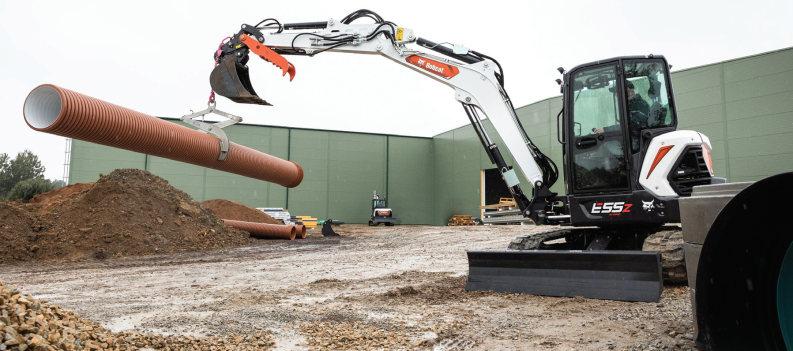
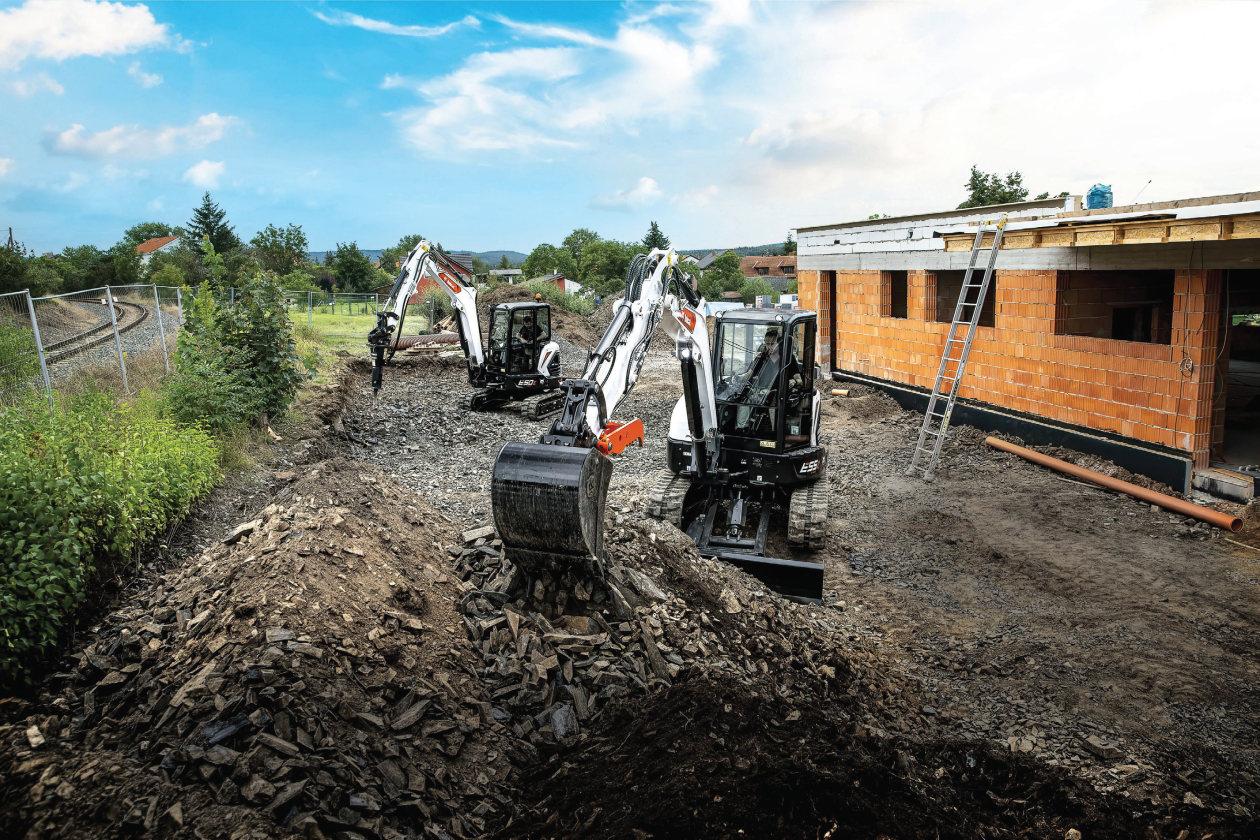
ND: Our 3.5t and 5.0/5.5t excavators are particularly popular – the E37 and E50/E55 models, respectively, accounting for about 75% of our MEX sales.
There are several reasons for this. First, digging or trenching jobs performed by a 1-2t excavator can easily be done manually in Africa where hand labour is abundant and often cheap.
Second, the A/C cabin is only available from our E37 and upwards. A/C remains an important criterion. Even though it is cheaper, the canopy is not always preferred as the machine is then very exposed
to dust and rain (some African countries have intense rainy seasons).
AR: What are the attributes that African customers are prioritising when it comes to this piece of machinery and how are you accommodating for that?
ND: For small digging works, there are not the same space limitations in Africa as we may have in Europe. This is why the BHL is so popular and many times preferred to a miniexcavator because of its versatility thanks to the front loader equipment.
African customers opting for a mini-excavator do so because they are well aware of the greater
productivity of a mini-excavator in a trenching job compared to a BHL as repositioning time with a mini is way faster than with a BHL.
Another key buying factor is to have machines with mechanical engines which can handle the poor quality fuel (water, dust, high sulphur) in Africa. We have a dedicated range of mini excavators that have only mechanical engines which is a strong selling point.
Availability of the equipment is extremely important. Even though it is a small mover in stock terms, we ensure our dealers have mini excavators available for customers either for sale or through rental.
AR: Do you have any recent success stories that could be shared?
ND: Our dealer in Zimbabwe, Machinery Exchange, recently sold six Bobcat E17z models to a UKbased NGO active in landmine clearing in Africa. These machines are now in transit and will be delivered soon.
A key factor here for the customer was the possibility to benefit from strong aftersales support in remote areas in Zimbabwe. The strength of the Bobcat dealer network in Africa played a big role here. ■
AFRICAN REVIEW OF BUSINESS AND TECHNOLOGY | SEPTEMBER 2023 www.africanreview.com 34
Nicolas Dumont, district sales manager – Africa at Bobcat EMEA, explores the dynamics driving the sales of mini-excavators in Africa.
CONSTRUCTION | MINI-EXCAVATORS
Bobcat sees enormous potential for growth in the African mini-excavator market.
Image Credit: Bobcat
Bobcat has a strong dealer network in Africa.
Image Credit: Bobcat
Hauling ahead
To allow customers to move more for less with a higher payload and greater uptime was the motivation behind Volvo Construction Equipment’s (Volvo CE) R60 rigid hauler.
Unveiled earlier this year, the all-new Egeneration hauler has been designed to replace the D-generation model, providing a more durable design, incorporating new comfort and safety-enhancing features and maximising fuel efficiency. Offering a 55-tonne payload and body volume of 36 cu/m (enabled by a V-shaped body), the machine became the latest solution offered by the industry-leading manufacturer to lower customers’ total cost of ownership most notably in quarry and mining applications.
Following the release of the R60, African Review caught up with John Bennett, product manager at Volvo CE, to hear more about the hauler and what impact it will have in the African market.
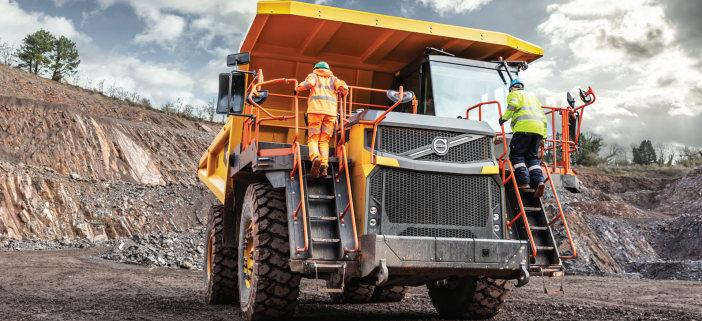

African Review (AR): Where is the R60 available on the continent and where can you see this having the biggest success?
John Bennett (JB): The R60 rigid hauler is currently available with a Tier 2 engine across Africa, and we see huge potential in countries
where mining and quarrying take place. That said, there is especially great potential in South Africa for this class of machine where its predecessor, the R60D, is also established as a reliable, productive hauler.
AR: What attributes of the R60 do you think will appeal to customers in Africa?
JB: The attributes of the R60 rigid hauler that are likely to resonate with African customers span across various aspects, ensuring its appeal in terms of safety, productivity, total cost of ownership (TCO), and connectivity.
In terms of safety, the R60 rigid hauler boasts a design that prioritises operator wellbeing and awareness. The spacious ROPS and FOPS certified cab provides great visibility with a low-slung windscreen and large mirrors. Visibility can be enhanced further by choosing the 360° Smart View option. The true independent front suspension, meanwhile, ensures a safe, comfortable, and productive ride by improving stability and reducing operator fatigue. In addition, the R60 provides a selectable choice of three different retarders for safe descent on any haul route condition, enhancing control during the journey. Then, when it comes to routine maintenance, the R60’s design permits safe and swift access.
In the realm of productivity, the R60 excels due to its advanced electronic connected drivetrain. This drivetrain is the basis for perfect balance between efficient power, effective gearing and weight distribution that delivers excellent haul performance. The combined transmission gearing, torque converter and axle gear multiplication result in an impressive tractive effort that leads its class. The R60 is equipped for optimum navigation and quicker haul cycles in the most difficult working conditions. The design and architecture also now enable production flexibility through the customer’s ability to apply the Volvo payload profile policy (10/10/20).
When considering TCO, the R60 offers a range of features aimed at minimising operational expenses. Its latest automatic adaptive shift schedules, selectable ECO mode, and programmable auto idle shut down work together to ensure optimal gear selection, speed, and torque, which contribute to proven fuel efficiency. This fuel efficiency results in reduced fuel consumption per tonnes of payload. The R60’s design further bolsters TCO by maximising production uptime through features such as aspirated engine air cleaners, magnetic suction
www.africanreview.com 35 SEPTEMBER 2023 | AFRICAN REVIEW OF BUSINESS AND TECHNOLOGY REPORT | TRUCKS
The R60 delivers improved cycle time, performance, load capacity, fuel efficiency and ride stability.”
JOHN BENNETT, PRODUCT MANAGER AT VOLVO CE
The Volvo R60 is equipped with two retardation systems to keep a steady speed and facilitate machine navigation when going downhill.
Image Credit: Volvo CE
The trucks and innovations on track to drive operations forward across the continent.
The R60 offers a range of features aimed at minimising operational expenses.
Image Credit: Volvo CE
filters and pressure filters on the main hydraulic circuits. The incorporation of automatic machine inhibitors helps safeguard both the machine and operators by detecting non-approved parameters. Furthermore, the R60’s easy accessibility to all planned maintenance points, which are grouped at stations at ground level or on the service platform area, ensures safe and quick intervention times. This promotes operational efficiency and helps reduce maintenance-related costs.
Finally, in terms of connectivity, the R60 is equipped with advanced features that enable efficient asset management. Volvo CareTrack telematics enables remote monitoring in realtime of machine positioning, operating hours, fuel consumption, and production data.
AR: What do you think are the biggest concerns from your customer base currently and how are you looking to address these in your machinery?
JB: Among our customer base where the R60D rigid hauler is established, we now offer a much improved option with the new R60 and it has been eagerly anticipated. We listened to customers’ feedback and incorporated it into the new design to make it even better. The R60 delivers improved cycle time, performance, load capacity, fuel efficiency and ride stability. It also includes many new machine protection, safety, and comfort features, as well as the ability to connect remotely.
Our confidence in our machine is very high. We have produced a modern machine to rival all competitors in safety, performance, reliability, productivity, running costs and comfort. In addition to the machine, we offer first class support. Teams from the Volvo Rigid Hauler Platform and Volvo CE Region International organisation, as well as from our dealer partners in Africa, are all heavily engaged to support customers of the new R60 (alongside the R100E model).
Ringing the safety bell
In South Africa, new regulations around dieselpowered, trackless mobile machines that came into effect in December 2022 are leading to an influx of Bell Equipment customers enquiring about articulated dump trucks (ADTs) compatible with proximity detection systems (PDS) and collision avoidance systems (CAS).


In response, the company has described its flexibility in regards to these concerns, with Jeremiah Mokhomo, Bell Equipment OEM product manager, commenting, “Our Pin 3 E-series ADTs, introduced towards the end of 2020, are built ready to integrate with a wide range of PDS or CAS up to level 9. This was a natural progression for Bell because our earlier E-series trucks introduced huge advances in automation to offer industry-
leading levels of driver and machine protection. Standard features such as starting, daily checks, bin tipping, and switch off/turn spin down have been automated, and the horn is automated to sound upon vehicle start-up and when selecting
the truck is Bell Equipment’s
responsibility.”
According to Bell, because its ADT innovation has been moving towards PDS/CAS, older trucks from D-series Pin 4 can be retrofitted with a PDF aftermarket kit, enabling customers to fit a PDS or CAS into existing trucks. This enables Bell equipment owners to outfit their trucks with the latest safety technology to ensure the safety of their workers and comply with new regulations according to their needs.
Philippi-Hagenbuch targets carryback reduction

forward or reverse. In addition to automatic speed control and retardation, the ADTs are fitted with automatic traction control.”
He continued, “Bell provides a PDS gateway controller (ISO 21815-2) for a PDS/CAS to connect to a Bell ADT. The third-party PDS/CAS then does the detection and gives commands while the execution of these commands and the control of
After hearing that operations often accumulate 50% of their truck body’s volumetric capacity in carryback, Philippi-Hagenbuch, a global leader in off-highway haul truck customisations, is aiming to allow operators to haul the full rated capacity of their machines with its Load Ejector System.
Made up of sticky materials such as clay, dirt, mud and fly ash, carryback can build up in haul truck bodies and minimise volumetric capacity when returned with the truck for the next load. This has the effect of reducing operational efficiency, increasing downtime (of the haul truck and its operator as well as other machinery that might be required to scrape out the material) and adding to wear and tear.
To combat this issue, Philippi-Hagenbuch’s Load Ejector System consists of an overlapping jointed plate lattice design that rests flat against the front slope and floor inside of the truck body. According to the company, when the body is raised, the Load Ejector separates from the truck bed by gravity and removes material as it hangs vertically away from the body. This leaves an empty truck with a full capacity, ready for the next load.
Philippi-Hagenbuch offers Load Ejectors with three different mounting styles, each targeting easy installation and removal, as well as two material options to match with different applications.
Josh Swank, vice president of sales and marketing at Philippi-Hagenbuch, said, “Efficiency starts with using the truck’s full rated capacity, and Load Ejectors allow operations to haul what they are entitled to with every load, utilising their existing truck beds.” ■
www.africanreview.com 36
Bell Equipment’s ADT innovation has been steadily moving towards PDS and CAS.
Efficiency starts with using the truck’s full rated capacity.”
TRUCKS | REPORT
JOSH SWANK, VICE PRESIDENT OF SALES AND MARKETING AT PHILIPPI-HAGENBUCH
Image Credit: Bell Equipment
Philippi-Hagenbuch’s Load Ejector System features an overlapping jointed plate lattice design.
AFRICAN REVIEW OF BUSINESS AND TECHNOLOGY | SEPTEMBER 2023
Image Credit: Philippi-Hagenbuch

JOHN DEERE SKID STEER RANGE ARRIVES ON AFRICAN MARKET
John Deere Africa Middle East has introduced their Skid Steer range to the market, which consists of the 316G and 318G Skid Steers. The 318G is a powerful and versatile machine built with durability, productivity, and operator comfort in mind. The 318G Skid Steer combines advanced technology with John Deere expertise to deliver exceptional results in a wide range of applications. From construction to agriculture and material handling, this machine is engineered to tackle the toughest tasks with ease, with features such as:
Full-tilt access: Through the rear door of the machine, easy access is gained to the dipsticks, fuel- and fluid-filler necks, and filters at ground level. In under two minutes, the operator's station can also be swung up and out of the way, providing effortless access to the drivetrain.
Heavy-duty drivetrains: The final-drive chains, lubricated with oil, are resilient and do not require regular adjustment despite daily wear
and tear. Additionally, the reinforced drive sprockets ensure long-lasting durability.
Wheel options: With the available wheel options, the 318G can reduce its size and easily manoeuvre through narrow openings. It possesses sufficient axle torque and carefully optimised boom and bucket breakout forces, allowing it to effectively excavate, pry, and push through clay, as well as maintain a heaped bucket.
Carry more: Based on the machine's low centre of gravity, 30-degree bucket rollback,
Cat 995 meets global standards
The new Cat 995 Wheel Loader features up to 19% increased productivity than the previous model with its higher rated payload and 6% increase in hydraulic force with equal hydraulic cycle time. This new loader delivers up to 13% lower hourly fuel consumption and offers up to an additional 8% efficiency gain when operating in Enhanced Eco Mode compared to throttle lock mode. It is also up to 19% more efficient than the 994K in equal comparisons of throttle lock operation.
Enhancements to the front linkage include an improved casting design, increased weld size, larger bearings and pins, and profile changes for increased service life. New, larger capacity buckets available for the 995 incorporate an extended floor for fast loading, high fill factors reaching 115%, and excellent material retention. Buckets are interchangeable between the 995 and 994K.
Built to the same size as the 994K but offering a higher rated payload, the new 995 enables a one-pass reduction when loading Cat 785, 789 and 793 Mining Trucks. This equates to up to a 33% increase in production and efficiency when loading the 785, up to a 25% increase with the 789 and up to a 20% increase with the 793.
The new 995 meets the global industry's demand for high production and greater payloads with its powerful Cat 3516E engine offering configurations based on regional needs, meeting EU Stage V/U.S. EPA Tier 4 Final or U.S. EPA Tier 1 equivalent emissions. Its 39% torque rise ensures high lugging forces during digging and acceleration in high rimpull conditions.
The redesigned next generation operator environment for the new 995 has 50% more legroom and boasts features that improve operator confidence while reducing fatigue. Its pressurised cab reduces vibration feedback, lowers sound levels and includes automatic temperature control.
optional hydraulic self-levelling and ride control all contribute to maintaining full buckets and loaded forks. To increase capacity, one can add up to two sets of counterweights.

The scrap grapples are equipped with two dualaction hydraulic-powered grapples that efficiently grab and secure items. For tasks such as land clearing, job site cleanup, and brush removal, the rock grapples prove to be highly effective.
When it comes to handling hay, cleaning pens, re-bedding stalls, or various other agricultural chores, users can enhance their capabilities with silage defacers, material/manure scrapers, bale huggers, bale spears, and buckets.

A wide selection of buckets are available, including multipurpose, dirt, rock, and rollout buckets, each with different widths and capacities. The grading-heel bucket is particularly adept at back dragging for superior grading performance.
CEMEX’S BIM DESIGNED FOR CONSTRUCTION PROFESSIONALS
Cemex has launched a dedicated plug-in for the building information modelling (BIM) REVIT software used for designing and managing construction projects. Cemex’s tool will enable architects and engineers to identify the best Cemex products and solutions for their work, highlighting those that are particularly innovative and more sustainable.
The BIM software offered by Cemex has been expertly designed for architects, engineers, contractors or construction professionals working on the development of residential, commercial, industrial or infrastructure projects. It allows users to search concrete by properties, compare concrete products by essential characteristics and target an embodied carbon value.
Users can also view detailed information on materials such as physical and mechanical performance with relevant data, among other technical characteristics. Products that could be recommended include those that are part of the Vertua range of Cemex’s more sustainable solutions. This software is the first of its kind in the UK construction industry and will be launched into other Cemex businesses across the globe in the near future
Mike Higgins, national technical manager, commented, “We know how valuable BIM tools are to those designing construction projects, as they save time and money by providing immediate access to information and recommendations on the best suited products while encouraging a collaborative process. ”
SOLUTIONS | CONSTRUCTION AFRICAN REVIEW OF BUSINESS AND TECHNOLOGY | SEPTEMBER 2023 www.africanreview.com 38
The redesigned next generation operator environment for the new 995 has 50% more legroom.
Image Credit: Caterpillar
The machine is engineered to tackle the toughest tasks with ease.
Image Credit: John Deere
CARBON-NEUTRAL ADDITIVE MANUFACTURING REVOLUTIONISES CEMENT
Additive manufacturing company, Hive3D Builders, has developed a mixed on site carbon-neutral and stronger alternative to traditional cement.
The printing material, which substitutes the mortar normally used in 3D concrete printing, is able to reduce construction’s CO2 emissions by 93%.
While traditional concrete production contributes to 8% of global greenhouse gas emissions, 3D concrete printing technology generally has a lower carbon footprint, mainly due to lower material usage as well as a lower waste production rate.
Hive3D Builders has sought to take the production of eco-friendly building materials one step further. By working with eco materials and green cement, the company managed to develop a low-cost geopolymer cement replacement that has up to 93% less CO2 emissions. Due to geopolymer’s environmentally-friendly properties, the substitute for the mortar that 3D concrete printing traditionally uses is almost completely carbon-neutral. Geopolymers require less energy and produce fewer carbon dioxide emissions compared to traditional cement production.


The implications of this innovation extend beyond its environmental benefits. Along with its reduction in CO2 emissions, the carbon-neutral material also offers superior strength and durability. This increased adhesion makes it an attractive alternative to traditional cement, offering immense potential for building more resilient structures. The strength of the material can be accredited to the geopolymer’s desirable properties. They exhibit advantages like excellent strength, high durability, and outstanding fire resistance.
Hive3D Builders’ newly-developed material also benefits from a new system from the company which allows for automatic mixing of the cement
replacement onsite with hyper-locally sourced aggregates to lower material costs. This reduces the cost of its printing mortor to a third of the price of other commercially available printing motors.
The company hopes that with this latest advancement it will be able to convince more construction giants to consider additive manufacturing as a cheaper, faster and more sustainable alternative to current construction methods.
CONSTRUCTION | SOLUTIONS www.africanreview.com 39 SEPTEMBER 2023 | AFRICAN REVIEW OF BUSINESS AND TECHNOLOGY
Along with the eco-friendly technology, additive manufacturing companies often strive to innovatively find sustainable solutions.
Image Credit: Hive3D Builders
Blesberg Lithium and Tantalum Mine receives additional equipment
The Blesberg Lithium and Tantalum Mine in South Africa has added new mobile mining equipment, according to Marula Mining.

The equipment, secured for approximately US$0.54mn through Q Global Commodities Group’s existing relationship with Bell Equipment, will help with the commencement of operations and to assist with exploration trenching and drilling work. It is on standard hire purchase arrangements and further increases the existing 1,000 tonnes daily capacity of the existing mining fleet onsite.
The additions include a JCB 456ZX wheel loader and a JCB JS305 tracked excavator which are in addition to the Kobelco SK380XDLC excavator, a JCB 3CX backhoe loader, two new JCB 456ZX wheel loaders, and two new Bell B25E articulated dump trucks which arrived on site in Q2 2023.
Jason Brewer, Marula Mining PLC CEO, commented, “We are delighted to have secured this additional new mining equipment, and are pleased to see it now on site and complementing the existing mining fleet. As always, we appreciate the efforts of our partner, Q Global, for their assistance in ensuring that we obtain this equipment in a timely and cost effective manner.
“This development further demonstrates Marula’s increasing investment in Blesberg, emphasising our commitment to both the existing stockpiles as well as scaling up the mining operation as we expand and move towards a more conventional hard rock open pit mining operation.”
LITHIUM JOINT VENTURE AGREEMENT SIGNED
Aterian Plc has signed a definitive earn-in investment and joint venture agreement with Rio Tinto Mining and Exploration Ltd and Kinunga Mining Ltd, for the exploration and development of lithium and by-products at its HCK Joint Venture project holding in the Republic of Rwanda.
RIO has the option to invest US$7.5mn in two stages to earn up to a 75% interest in the licence to explore for minerals vital for a successful energy transition to renewable energy. RIO will also make cash payments to Aterian, totalling US$300,000.
A 2% capped Net smelter return (NSR) is granted over the project (capped at US$50mn).
The project has 19 identified pegmatite zones over its 2,750-hectare licence in southern Rwanda, and is located close to good infrastructure, including national highways, power and water.
Under the terms of the agreement, Rio has an exclusivity option to invest into Aterian's two other existing Rwandan projects, which will be subject to their own separate agreements.
GRAPHEX SECURES OFFTAKE AGREEMENT
Graphex Technologies, LLC, a global leader in mid-stream processing of natural graphite anode material for use in Lithium-ion (Li-ion) batteries, has entered into an offtake agreement with a wholly-owned subsidiary of Syrah Resources Limited for natural flake graphite from Syrah’s Balama graphite operation in Mozambique.
The agreement provides Graphex with a diverse supply of quality raw materials as it forges ahead with its plans to bring domestic processing facilities online to supply automakers and battery gigafactories with the needed anode material for electric vehicle (EV) batteries.
As EV demand continues to expand, the need for natural flake graphite is set to grow exponentially and is expected to reach 4.1mn tons per annum by 2030.
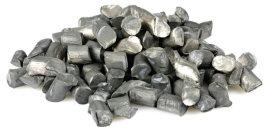
BRIEFS
US releases critical materials assessment
The U.S. Department of Energy (DOE) has released its 2023 Critical Materials Assessment, which evaluated materials for their criticality to global clean energy technology supply chains through 2035. The list includes aluminum, cobalt, copper, dysprosium, electrical steel, fluorine, gallium, iridium, lithium, magnesium, natural graphite, neodymium, nickel, platinum, praseodymium, terbium, silicon, and silicon carbide.
Charles Bray, chairman of Aterian, commented, “This is a transformative deal for Aterian and highlights our ability to identify potential world-class deposits in critical minerals such as lithium. We have identified 19 separate LCT (lithium-caesiumtantalum) pegmatite zones across the 2,750-hectare project offering the prospective scale necessary to attract such a major partner as Rio Tinto.
“Lithium is a key commodity for global electrification ambitions, as it is the central chemical element of dominant battery chemistries. Benchmark Minerals Intelligence forecasts that in 2023 lithium demand will reach 900,000 tonnes, a jump of 27% year-over-year, and is further forecast to reach 1.5mn tonnes in 2026.”
Gold demand holds steady
The World Gold Council’s latest Gold Demand Trends report reveals that gold benefited from record central bank buying in the first half of the year and was supported by healthy investment markets and resilient jewellery demand.
Louise Street, senior markets analyst at the World Gold Council, commented, “Record central bank demand has dominated the gold market over the last year, and this trend underscores gold's importance as a safe haven asset.”
 The new equipment complements the existing mining fleet.
Image Credit: Marula Mining
Image Credit: Adobe Stock
The new equipment complements the existing mining fleet.
Image Credit: Marula Mining
Image Credit: Adobe Stock
NEWS | MINING www.africanreview.com 40
Image Credit: Adobe Stock
The assessment focuses on key materials integral to clean energy technologies.
AFRICAN REVIEW OF BUSINESS AND TECHNOLOGY | SEPTEMBER 2023
Gold is supported by healthy investment markets.
Work advances on Makuutu Demonstration Plant CRU LAUNCHES NEW SUSTAINABILITY SERVICE
The board of Ionic Rare Earths Limited (IonicRE) is progressing development at the Makuutu Heavy Rare Earths Project through local Ugandan operating entity Rwenzori Rare Metals Limited.
Earthworks have been finished, the facility shed has been manufactured and brought to site, and construction of the technical facility has started at the Makuutu Demonstration Plant.
Concrete footings will start to go soon, and the superstructure will be put up in the near future. Formwork for the foundation is presently being laid out. The technical facility at the Makuutu Demonstration Plant will support project financing and strategic partner activity in addition to validating metallurgical test work and providing additional technical validation bases for grade control, mine design, material handling, and construction activity.
“The commercialisation of our recycling technology at our Belfast Facility and our focus on the delivery of the Makuutu Heavy Rare Earths Project in Uganda positions us to provide a secure, sustainable, and traceable supply of magnet REOs,” said Tim Harrison, managing director at IonicRE
“We are harnessing our technology to accelerate our mining, refining and recycling of magnets and heavy rare earths that are critical for the energy transition, advanced manufacturing, and defence. The progress allows IonicRE and RRM to harness our processing innovations to accelerate and validate mine development with a clear process plan to production and profitability,” Harrison remarked
“This step will also strengthen talks we have progressed with supply chain partners where further value adding has been identified. It is a globally strategic resource for near-term development and long-term security of magnet and heavy rare earth oxide (HREO) supply,” he continued.
According to a statement released by the company, the Makuutu Heavy Rare Earths Project has the Government’s full support and is set to become Uganda’s flagship mine.
GENMIN GETS GREEN LIGHT FOR BANIAKA PROJECT
The Minister of Environment of Gabon has given final clearance for the social and environmental impact assessment (SEIA) for the 100%-owned Baniaka iron ore project of emerging African iron ore company Genmin Limited. Genmin is able to build and run the Baniaka project thanks to the minister's approval of the SEIA, which is given through a certificate of environmental conformity, subject to receiving the Mining Permit (MP). Managing director and CEO, Joe Ariti commented, “We are delighted to receive Ministerial approval of the SEIA and the issue of the certificate of environmental conformance; a critical milestone to Genmin’s target of achieving production at Baniaka in the second half of 2024. The certificate of environmental conformance is the final prerequisite for the issue of the large-scale mining permit for Baniaka, which we expect to be granted during the coming month.”
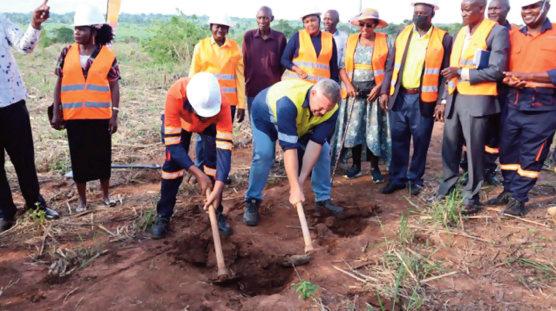
BRIEFS
Kavango to acquire two Zimbabwe gold projects
Metals exploration company Kavango Resources has signed an exclusive six-month option to acquire two gold exploration projects in Matabeleland, southern Zimbabwe.
The Hillside Project comprises 40 contiguous gold claims and contains a historic high-grade underground mine. This is reported to have produced historically 18,000 ounces of gold at a grade of 7.7 grams per tonne. The Leopard Project comprises 44 contiguous gold claims as well.

CRU has launched its new sustainability and emissions service to offer users commodities intelligence through a sustainability lens.

Businesses now have to comply with a wide range of new regulations and societal expectations thanks to the global emphasis on sustainability. However, the trajectory of emissions reductions now in place is insufficient to appropriately address climate change, which raises the possibility that harsher regulations may be implemented in the near future. It may be difficult for firms to change their operations to comply with new rules, regulations, and policies while still being profitable. Further, these sustainability considerations affect every commodity.
Mark Jeavons, CRU head of sustainability, said, “Sustainability is already driving our markets, but its impact will grow exponentially in the future, impacting commodity supply, demand and pricing. There is no question that successful businesses will be those with the most intelligent and informed decarbonisation strategies, but the sooner the strategies are implemented, the better.
“However, this is easier said than done, and so many of the sustainability data sources available today are incomplete, with gaps, lack of detail and limited transparency. We believe we can meet that market need for insight, as we have done so for more than 50 years in the commodities space through our analysis and consultancy.”
There are two tiers of service access available and the service is currently online. While the Classic edition provides information on emissions trends, policy summaries, and short-term carbon price estimates, the Premium edition also includes information on decarbonisation, green technologies, and energy markets, as well as direct access to CRU analysts.
Mine safety with remote control
Hexagon’s mining division has acquired Canadian company HARD-LINE, an expert in mine automation, remote-control technology and mine production optimisation. HARD-LINE’s solutions will help strengthen the solution offering with remote control via electronic and hydraulic by-wire technologies, innovation necessary for achieving full autonomy in the mine. Like Hexagon, HARD-LINE believes in an interoperable, OEM-independent system for mining automation, improving safety and productivity, critical to bringing autonomous technology to the wider mining industry.
MINING | NEWS www.africanreview.com 41 SEPTEMBER 2023 | AFRICAN REVIEW OF BUSINESS AND TECHNOLOGY
The Hillside Project has produced 18,000 ounces of gold at a grade of 7.7 grams per tonne.
HARD-LINE helps automate safety systems.
Image Credit: Adobe Stock
Image Credit: IonicRE
The project is set to become Uganda’s flagship mine.
Image Credit: Adobe Stock
Change in the air
Ventilation has long been a central factor in the effective running of mining operations. In the earliest ventures underground, it has been reported how miners utilised strategically positioned fire throughout tunnels in order to encourage airflow and deliver unpolluted air into the lungs of those within.
As the years have progressed, the sophistication of scientific practice has enhanced the understanding around ventilation and its centrality to miner health, which has combined and contributed to a growing emphasis on worker welfare. In turn, the increasing amount of time, investment and expertise dedicated to this part of the industry has led to a rapid advancement in technology and methods.
As such, the underground bonfires and sentient monoxide detectors (canaries were a common site in many of Britain’s underground mines of the early 20th century) have now been replaced with a mechanical fans, cooling and heating systems, detection and monitoring devices, alongside new digital solutions. Every year, new advancements are delivered to the market to add to this assortment, so operators have never had more means at their disposal to ensure
equipment is kept safe and all those who arrive on site, return home at the end of the day in the same condition.
In correspondence with African Review, Russell Hattingh, managing director at BBE Consulting, outlined how ventilation has always remained a key consideration in mining as “if suitable conditions are not present in a mine, mining stops, as mining staff cannot physically function with limited air and high ambient temperatures.”


He continued, “Certainly in the last two decades, advances have been made in terms of ventilation modelling allowing an optimisation of mining activities. Ventilation and cooling needs to be planned carefully. In the commercial sector a design can be provided for a building as the envelop is fixed. The usage and occupancy may change but the structure of the building is fixed providing clear boundaries for a design.
“In mining one has to follow the orebody, which may or may not yet be fully characterised. The time frame for mining is also many years so the build-up is important and
ventilation systems should be suitably flexible to support both short- and long-term mining plans. Modelling allows a clear understanding of the mine, how it will grow and how it can be ventilated and cooled.

“Given that starting a mine is expensive as initial development may not be in the orebody and therefore not revenue generating capital deferment is often essential. Understanding the ventilation and cooling build-up of a mine enables mining companies to plan their systems and therefore their cashflows. Ventilation and cooling systems are also energy intensive, since huge volumes of air must be circulated through a mine (and often cooled) to provide fresh and suitably conditioned air for personnel and equipment.”
According to Hattingh, in South Africa especially, ventilation is not being overlooked, with companies paying careful, diligent attention to this aspect. Mining organisations, he described, must now ensure the safety of their personnel and this is the foundation of companies’ value systems.
“Slogans like Goldfields ‘if we cannot mine safely, we will not mine’ show the attitude of mines towards safety. It is value number one. Ventilation and cooling systems do not fall into the nice-to-have category. They are vital safety systems,” Hattingh said.
“Without suitable ventilation mining stops. Equally (and perhaps less dramatically) without careful planning, ventilation will constrain mining operations (which could delay production ramp-up). BBE believe that ventilation should be an enabler for mining and not a constraint but this doesn’t just happen. Planning and coordination with the mine planning team is essential. Vent and cooling are expensive (from a capex and opex perspective), and given that initial capital may be constrained, understanding what makes up these costs and the timing of costs is important and can make or break a project.”
When asked why investment in correct mine ventilation practices is a good option for long-term prosperity, Hattingh replied, “Two words: regret spend. Buying equipment without the future in
AFRICAN REVIEW OF BUSINESS AND TECHNOLOGY | SEPTEMBER 2023 www.africanreview.com 42
Despite often being regarded as a burdensome expenditure, inadequate ventilation investment can lead to higher costs in the long-term.
MINING | VENTILATION
An interactive mine network model courtesy of BBE's VumA software.
Image Credit: BBE
Russell Hattingh is the managing director at BBE Consulting.
Image Credit: BBE
mind means that you will end up buying equipment to satisfy the short-term. In the long run this is expensive since you could end up buying equipment you cannot reuse. The lead time of installing suitable mining infrastructure (such as shafts) and major equipment is also long so a delay could ultimately result in extreme working conditions or scaled down production rates.”
BBE has now been providing ventilation and cooling solutions for the last 30 years and has been a key contributor to developing the science behind ventilation systems. Hattingh concluded, “I would like to think we’re pretty good at what we do and that we keep getting better. We follow a rigorous process of internal reviews to ensure the quality of our work is maintained.”
ABF targets hazardous dust
Another diligent servant in this field which has prioritised research and development as a fundamental principle of its culture is Air Blow Fans (ABF), a specialist in customdesigned extractor fans and ventilation systems.
In its most recent project, the company took the initiative to tackle the hazard of respirable dust, which is released in substantial amounts by continuous miner operations. According to the company, the introduction of safe ionic liquid technology-based doping additives has shown superior outcomes in reducing respirable dust compared to water. Armed with this understanding and alongside
development partners, the company researched how PEGSIL, an ionic liquid used in the rubber industry, reacts with coal dust.
It reported positive results that indicated just a modest amount of the liquid added to the water feed in wet scrubbers brought superior performance to standard at the same flow rate with better dust removal. Ultimately, this breakthrough could

improve operator safety, increase mine activity and potentially conserve water – a matter of increasing importance by its own right. The company is now expanding its efforts to suppress dust in the tailings of other mining minerals outside of coal.
Howden hails Ventsim software
For one of the leading global providers of mission critical air and gas handling products, Howden, the digital realm has become a key part of its Total Mine Ventilation Solutions (TMVS) which offer a onestop-shop of expertise, products and services to ensure safety across mining operations.
In 2017, the company acquired Chasm Consulting which brought into its portfolio the Ventsim software for ventilation design. Ventsim DESIGN can create an accurate simulation of ventilation environments with real-time 3D
graphics representing airway dimensions and shapes with animated airflows. It can be deployed throughout all stages of ventilation design, including to create optimised plans for existing mine infrastructure.
Earlier this year, Howden secured a contract for its Ventism CONTROL system for use at Gold Fields South Deep gold mine in South Africa. The bulk-mechanised mining operation reaches depths between 2,800 m and 3,300 m below surface and South Deep required a state-of-the-art ventilation optimisation system to support a safe working environment and reduce its energy consumption. Ventsim CONTROL, which combines ventilation mine modelling through a flexible control system and advanced control strategies for monitoring, control and optimisation was duly selected. Eric Vemer, president of Africa region at Howden, noted, “The installation of Ventsim CONTROL will improve the operability and flexibility of the mines ventilation system to ensure a safe, healthy and efficient ventilation solution. Ventsim CONTROL will further reduce energy consumption and associated tonnes of carbon emissions. As the system allows the mine to optimise its ventilation based on fully remote vehicle and personnel monitoring, it directly contributes to achieving emissions reduction targets – something of which the Howden team is very proud.”
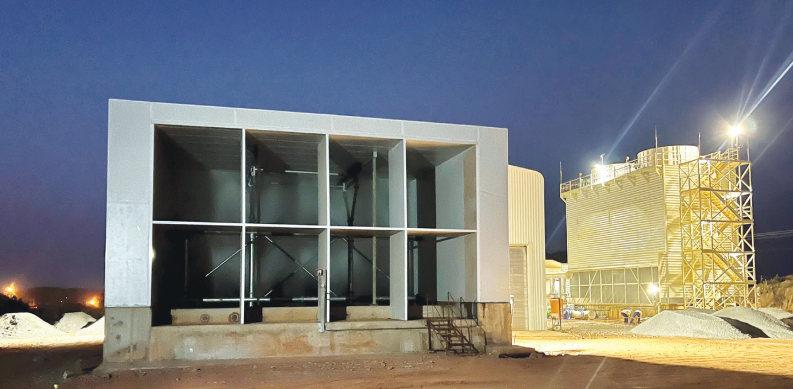
■
ABF conducted research into how PEGSIL reacts with coal dust.
www.africanreview.com 43 SEPTEMBER 2023 | AFRICAN REVIEW OF BUSINESS AND TECHNOLOGY
The surface refrigeration plant installed at Société des Mines de Loulo in Mali.
Buying equipment without the future in mind means that you will end up buying to satisfy the short-term. In the long run this is expensive since you could end up buying equipment you cannot reuse.”
VENTILATION | MINING
RUSSELL HATTINGH, MANAGING DIRECTOR AT BBE CONSULTING
Image Credit: ABF
Image Credit: BBE
After an unwelcome (but understandable) dip during Covid-19, the upstream diamond industry resoundingly bounced back with global rough diamond production increasing by 11% year-on-year in 2021 according to De Beers’ Diamond Insight Report 2022.
Despite the economic hardships of the pandemic, diamond consumer appetites were clearly unaffected as a boom of demand exploded at the end of 2021. The firm recovery and continued health of the diamond market is a welcome outcome for many of Africa’s countries which help make up a large majority of global rough diamond production –most notably Botswana, DRC, Angola and South Africa.
In South Africa, De Beers has now celebrated the first production from underground operations at its Venetia Mine in Limpopo. The site was responsible for a US$2.3bn underground expansion in 2012 (the biggest single investment in the
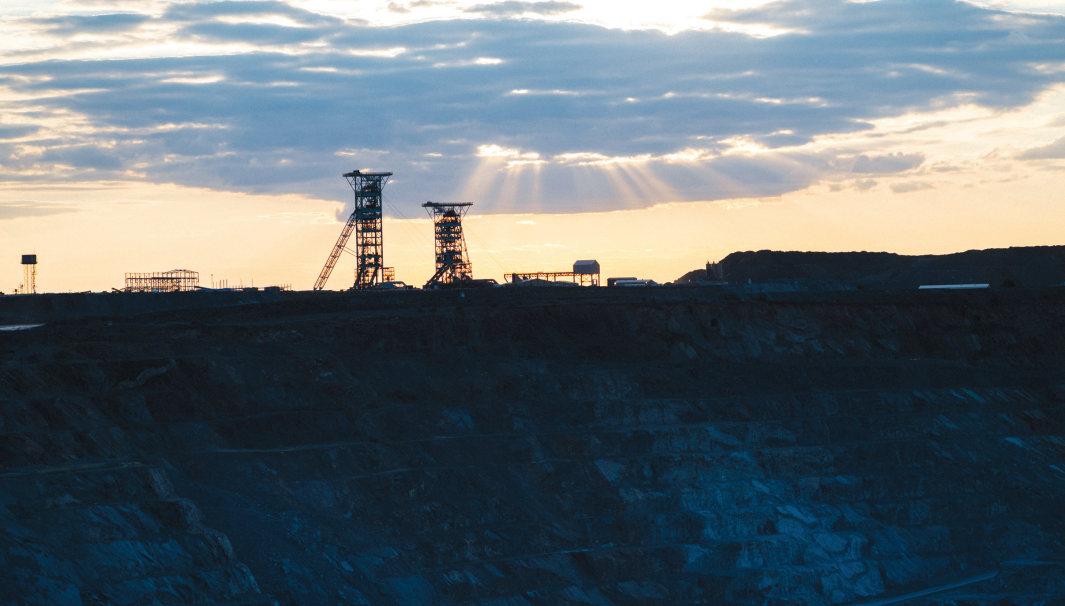
country’s mining industry in decades) with open pit mining operations ceasing in 2022. Overall construction of the new-look, underground mine is now at 70% complete and, when finished, the highly-mechanised operation will deliver up to 4mn carats of diamonds annually to the benefit of the company, the South African economy and host communities.
The company has also taken steps to support the Government’s strategy to consolidate the mineral beneficiation sector into one area at the Guateng Industrial Development Zone with De Beers Sightholder Sales South Africa (DBSSSA) unveiling a new rough diamond sorting, valuation and sales facility in Johannesburg. 87 employees were relocated from Kimberley to the new facility which has two floors comprising offices, hand and machine sorting areas, a training academy and a diamond cleaning plant. It is expected that, by consolidating its operations, the company will achieve efficiency in
operating costs, greater effectiveness and contribute towards the country’s national beneficiation agenda.
Moses Madondo, managing director of De Beers Group Managed Operations, commented, “South Africa is a significant source of rough diamonds and, aside from helping to upskill the industry, it is important for us as diamond producers to assist small beneficiation customers with access to affordable parcels of rough diamonds. We are excited to now be located in the beneficiation hub where we can continue working with our partners to further support the local beneficiation industry. South Africa is sharply focused on being internationally competitive, and with Government’s support as envisaged through the GIDZ, the country is well placed to support the growth of its beneficiation sector.”
Botswana’s new era
De Beers has also embarked on a “new era” for its operations in
Botswana following an agreement in principle for new Debswana sales and contract mining licences. The joint venture between De Beers and the Government of Botswana was established in 1969 and currently operates four diamond mines: Jwaneng, Orapa, Letlhakane, and Damtshaa. Making up a significant contribution to the country’s GDP, foreign exchange earnings and government revenue, it employs more than 5,000 workers and has around 6,000 contracts working at its operations.
This latest announcement represents an agreement (in principle) on a new 10-year sales agreement for Debswana rough diamond production through to 2033 as well as a 25-year extension of the Debswana mining licenses through to 2054. Importantly, the agreement aims to propel both Botswana and De Beers forward by focusing on four key areas of value:
• Industry leadership: significantly expanding the country’s footprint and leadership position across the diamond value chain
• Economic diversification: accelerating this aspect through the creation of the Pula Diamonds for Development Fund with an upfront US$75mn investment from De Beers with further contributions down the
AFRICAN REVIEW OF BUSINESS AND TECHNOLOGY | SEPTEMBER 2023 www.africanreview.com 44
As a firm cornerstone of the African mining industry, plans are in motion to ramp up diamond production to meet global demand while ensuring profits are enjoyed responsibly and to the benefit of local communities.
MINING | DIAMONDS
A new dawn for diamonds?
South Africa is a significant source of rough diamonds and it is important for us as diamond producers to assist small beneficiation customers with access to affordable parcels of rough diamonds.”
MOSES MADONDO, MANAGING DIRECTOR OF DE BEERS GROUP MANAGED OPERATIONS
The Venetia Mine in South Africa.
Image Credit: De Beers
line. This will aim to create substantial additional value to the Botswana economy.
• Debswana future: progress the long-term capital investment required to secure Debswana’s prospects for years to come.
• Jobs: creating the potential for tens of thousands of new jobs in the country through the expansion of the diamond industry and emerging sectors. The announcement represents a breakthrough between the two sides following a disagreement over diamond production share.
President Mokgweetsi Masisi has been critical of the long-standing agreement, seeking to acquire a larger allocation of the gems produced in his country. Now, as per the new agreement, the Okavango Diamond Company (ODC), a wholly Government-owned rough diamond marketing company, will receive 30% of Debswana production, which will increase to a 50% share by the final year of the contract.
Al Cook, CEO of De Beers Group, remarked, “The agreement represents our commitment to deliver investments in Botswana’s diamond production, Botswana’s diamond value chain, Botswana’s knowledge-based economy and, above all, the people of Botswana.”
The Botswanan Government will also be excited by the fresh prospects of the Karowe underground expansion project, being delivered by owner Lucara Diamond. The mine was fully commissioned in 2012 and has become one of the world’s foremost
producers of large, Type IIA diamonds in excess of 10.8 carats. In 2021, the board of directors formally approved underground expansion in a project expected to require around US$534mn with production forecast from 2026.
In this most recent update, the company has explained that challenges such as grouting programmes taking longer than anticipated due to high-water volumes and technical issues associated with the transition to main sinking has led the company to revise the forecast of costs. The completion of the project is now expected to incur a bill of US$683mn and will now likely commence production from H2 2026 to H1 2028.
Nevertheless, despite these setbacks, company executives remain bullish about the project.
Eira Thomas, CEO of Lucara, remarked, “Lucara has made tremendous progress on the Karowe underground expansion project, despite many challenges over the last year as we transitioned into the main sink phase of the underground development… Despite these challenges, the project continues to deliver strong economics paying back capital in under three years and adding approximately US$4bn in revenues from an extended mine life out to at least 2040, using conservative diamond price assumptions. The project also comes at a time when the long-term outlook for the diamond market is stronger than it has been for many years representing an exciting growth opportunity for our shareholders
and stakeholders in Botswana.”
It is under this faith in the market that HB Antwerp officially opened the doors of HB Botswana earlier this year. Representing the company’s first branch outside of Antwerp, the opening fulfils its promise to bring cutting-edge technologies to Botswana in an effort to support the country’s transformation into a diamond knowledge centre, the company stated.
The facility is modelled on its Antwerp Operations and is located at the Diamond Technology Park in Gaborone. At the inauguration ceremony, President Masisi announced a strategic partnership between the Government and HB Antwerp to acquire a 24% equity stake through an investment. ODC will supply rough diamonds to HB Botswana for five years with all value-add to take place in the country. For Botswana, this partnership is reported to enable it to achieve participation in the highmargin and downstream segments
for the next generation of Botswana, taking unprecedented ownership over our natural resources to realise their potential for our nation’s sustainable development,” commented President Masisi.
“Today is the dawn of a new era in Botswana’s diamond story as we begin this journey with HB Antwerp. This partnership has the potential to be a game-changer.”
A transformation process
Indeed, neighbours have already taken note of the development in Botswana with DRC President Félix Antoine Tshisekedi Tshilombo visiting the HB Botswana headquarters soon after it was established.
The President was given a tour of the facility to show how it is empowering Botswana to take more of a significant role in sourcing and distributing its natural resources, an example for other mineral-rich countries in subSaharan to do likewise.

According to HB, the President
of the diamond value chain, receive additional value from selling diamonds based on polished price rather than rough price, develop highly-valued skills within the sector for its youth especially, own proprietary technology, and market the country to the world through diamond provenance.

HB also announced it is looking to open a larger, more advanced facility in the country at the Botswana innovation Hub to scale the company’s impact by as much as ten times.
“We are forging a brighter future
was impressed with the innovative solutions developed by the company and took the opportunity to emphasise the importance of empowering local communities to control their resources and participate in the transformation process.
The company stated that the visit by the DRC President highlights the growing importance of sustainable and ethical business practices in the mineral sector, something that seems likely to be a defining feature in the years ahead of the promising diamond market. ■
www.africanreview.com 45 SEPTEMBER 2023 | AFRICAN REVIEW OF BUSINESS AND TECHNOLOGY DIAMONDS | MINING
Gwede Mantashe, South Africa’s Minister of Mineral Resources and Energy, attended the unveiling of DBSSSA’s new facility in Johannesburg.
Image Credit: DBSSSA
DRC President Tshisekedi (pictured on left) said his vision was for natural resources in his country to not be exploited but instead transformed locally.
Image Credit: HB Antwerp
Extinguishing danger underground
Underground mining is an exceptionally hazardous environment, as mineworkers have limited means to escape in the event of any fire. In certain situations, there is only one escape path, which can be many kilometres long. Fire-detection systems are critical for both the protection of life and property.
Giving underground workers the earliest possible warning of a fire, or an impending fire, allows them the maximum time possible to respond to the fire and extinguish it, or to escape from the hazardous area if the fire is too large for them to tackle.
Heavy machinery that operates on the surface is also a high-risk environment, as the operators are often in cabs high above the ground, with only a single means of escape in the event of any emergency. “Being able to save a multi-million rand machine from damage or total loss due to fire has obvious cost benefits for a mine,” van Niekerk pointed out.
It is essential to undertake preshift and weekly inspections on mining vehicles that operate in demanding environments to ensure that the fire system is in working order. This is because mining vehicles such as excavators are highvalue assets operating under harsh conditions where there is an inherent danger of fire.
During such an inspection, the technician needs to check that the fire protection system nozzles are still attached correctly, covering the high-risk areas effectively; that the blow-off caps are still on; and that there is sufficient pressure in the detection line and in the system. Here, ASP Fire can assist mining operations in mitigating any risk posed by fire, which affects productivity and profits.
Recognising danger
The design and installation of a vehicle fire-protection system requires mining vehicles to be
subjected to a Hazard Identification and Risk Assessment (HIRA) of potential fires. Each vehicle needs to be assessed carefully within its specific operating environment in order to understand what hazards and fire risks that vehicle is exposed to. These range from excavators to haul trucks, and even drag lines.
Inherent fire risks include the turbochargers and brake system overheating, as well as high-pressure hydraulic systems and electrical equipment that may ignite a combustible or flammable component of the vehicle. Here, ASP Fire design systems to suit individual vehicles and their specific requirements. This means examining the conditions not only inside the vehicle, but also within the surrounding environment.
Detecting a fire while it is in the incipient or smouldering phase similarly gives the machine operator the opportunity to extinguish the fire before it develops, or to

evacuate the machine if the fire escalates. A fire requires three components to propagate: fuel, oxygen, and heat or an ignition source. Switching off the electrical supply to affected equipment while the fire is smouldering can prevent it from developing into a full-blown, potentially disastrous fire.

“The mining industry is passionate about health and safety and fire prevention in particular,” stressed van Niekerk. ASP Fire is able to conduct fire-risk evaluations for mining operations, encompassing a full Hazard Identification and Risk Assessment (HIRA) of potential fires. ■
 Image Credit: ASP Fire
Michael van Niekerk is the CEO of ASP Fire.
Image Credit: ASP Fire
Michael van Niekerk is the CEO of ASP Fire.
AFRICAN REVIEW OF BUSINESS AND TECHNOLOGY | SEPTEMBER 2023 www.africanreview.com 46
Michael
van
Niekerk, CEO of ASP Fire, examines the importance of fire detection systems in enhancing safety for underground mining.
MINING | FIRE DETECTION
Fire prevention is a top priority for underground mining operations.
Image Credit: Adobe Stock
Coming to terms with leading
Felicity Morel-EdnieBrown, leadership and executive coach with Morel Consulting, explores the ‘crisis of confidence’ that can often affect newly-promoted leaders.
We've all heard the old adage of 'being promoted above a level of capability'. And this rings true, not necessarily because the person is incompetent but because the whole context of leadership is so fundamentally different from that of being a professional expert who has previously delivered projects to a high technical standard.
In rapidly changing environments people get promoted from their expert technical background into the C-suite where they move from leading their team delivering the indepth detail of a project, to leadership where they have to manage a range of competing demands on both their time, resources, mental energy, and expertise. All too often, this leads to increased burnout, a sense of failure, mounting stress and (frequently) the loss of an excellent performer who's just been overwhelmed by the differences in the new role.
Demands at the top
Let's say that you have been promoted to the C-suite or to CEO because you are an expert in your professional field and have developed a reputation for consistency delivering critical projects to a high standard.
You are used to using your skills and expertise to facilitate the completion of projects to an expert standard, whether it's the
construction of a bridge or ensuring that a mine is safe to operate. What has made you so respected is that you have low levels of tolerance for error and you have worked long and hard to manage your team and deliver to the highest standards.
Your step into the C-suite or up to the CEO seems a natural progression and one which fits well with the company, but the C-suite is fundamentally different from the work that you have done in the past. Your entire context is different because you now have a different view of the organisation and you are more aware of the other divisions and how they impact on the viability of the company. You now have responsibility for multiple outcomes, you are reliant on others to deliver excellence, and you are isolated from the sustaining collegiality you once enjoyed.
At a time in your life when you should be enjoying the benefits and perks that your professional reputation has brought to you, you find yourself suffering from an unexpected crisis of confidence. It seems that all of your previous experience, knowledge and expertise is now working against you as you deal with the ambiguity and flux of leadership in the C-suite.
The definition of being a leader is operating constantly in an environment of uncertainty while exhibiting clarity, confidence and courage in the face of that uncertainty; delivering results and
inspiring those you lead. You not only have to be available to deal with issues as they arise but you spend a good portion of your time thinking about how to improve the business and dealing with issues that have the potential to derail it. You do all this within the context of an operating environment where you have to rely on other people to deliver the projects over which you once had carriage and, frequently, you are tempted to step in to ensure that everything is running smoothly.
Your crisis of confidence boils down to five core elements:
• Gone is the certainty that came from being responsible for delivering a project from start to finish knowing that you have achieved the best possible outcome;
• You have not been trained to deal with the subtlety of leadership and the fear of making an error can lead to untenable delays in decision-making and opportunities lost through inertia or denial;
• You have many more inputs into your decision-making because you have a higher level view of the organisation than before. Trying to reconcile multiple factors –many of which are beyond your direct control – creates a sense of overwhelm which manifests as indecision because of uncertainty;
• You are more reliant on others to deliver the results that you used to deliver and you believe you are more experienced and better at
that delivery than they are. Your expertise is challenged by what you perceive to be a risk which results in micromanaging or delegating inadequately, all of which undermines your capacity to lead;
• You have few people that you can discuss matters with – you're at the top of the pyramid and those below you could be actively competing to assume your role. You can't really discuss the things that concern you easily with your executive team because you're now holding them accountable for their deliverables – it is not the same relationship that you had before. This potentially compounds the sense of isolation and loneliness and is a self-fulfilling prophecy which can contribute to feelings of diminished self-worth, loss of confidence and increased inertia and difficulty in decisionmaking.
When stepping into higher roles, it is essential to understand that these challenges can occur and that you are not unique in experiencing them. It is only by understanding and addressing them – most effectively through targeted coaching – that you will be able to execute your role successfully and lead your people effectively.
Look for future articles penned by Felicity Morel-EdnieBrown in African Review as she teases out the key issues for expert professionals who have reached the C-suite. ■

www.africanreview.com 47 SEPTEMBER 2023 | AFRICAN REVIEW OF BUSINESS AND TECHNOLOGY COMMENT | LEADERSHIP
Felicity MorelEdnieBrown, leadership and executive coach with Morel Consulting.
Image Credit: Morel Consulting
SOLUTIONS
LOKOTRACK LT120 MOBILE JAW CRUSHER PRIORITISES QUALITY AND SUPPORT
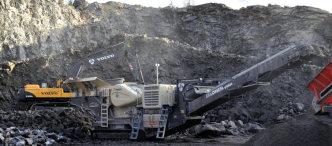
The Lokotrack LT120 mobile jaw crusher, supplied by Pilot Crushtec, has secured a reputation across southern Africa for its impressive performance and quality.
The robust, track-mounted primary crusher is optimal for quarrying applications, excelling as a standalone unit or within multi-stage processes. Its exceptional transportability enables easy movement between crushing sites.
The Lokotrack LT120 shines in the realm of efficient crushing and fuel economy. Designed especially for aggregates production, it can take the lead in a multi-stage crushing process or function as a standalone unit. With its trackmounting, it can smoothly navigate within a quarry and be easily transported between sites. This high capacity mobile crusher revolves around the Nordberg C120 crushing unit, crafted
SANDVIK DR413I BOLSTERS INTELLIGENT ROTARY BLASTHOLE RANGE
Sandvik Mining and Rock Solutions is introducing Sandvik DR413i, the fourth drill rig in its intelligent rotary blasthole range. Purposebuilt for high-altitude hard rock mines, Sandvik DR413i represents the natural evolution of Sandvik D90
Ideal for iron ore and copper applications at altitudes up to approximately 4,500 metres, Sandvik DR413i can drill a hole diameter range of 250 to 349 millimeters. Its power pack is designed specifically to support high-altitude drilling, enabling impressive performance without an oversized rig.
Sandvik DR413i bridges the gap between Sandvik DR412i and Sandvik DR416i and customer feedback from those two models played a crucial role in its development The first unit of has already been sold to a US iron ore mine.
“Sandvik DR413i is powerful, productive and precise, and continues our long tradition of developing innovative technology to help drilland-blast customers improve productivity and reduce cost,” said Dave Shellhammer, president of the rotary drilling division at Sandvik Mining and Rock Solutions.
“As demand for our intelligent rotary blasthole drills grows, this expansion of our range underpins our customer-centric approach.”
Sandvik DR413i reduces personnel-tomachine contact while maximising component life. Its maintenance-friendly design reduces the time needed for scheduled and unscheduled tasks, improving safety and ROI.
for crushing hard rock types such as granite, basalt and gneiss. The crusher’s generous feed opening ensures outstanding capacity, further complemented by an excellent nip angle and aggressive linear stroke. Moreover, the hydraulic drive provides trouble-free operation and allows the crusher direction to be altered in case of blockage, helping to clear the cavity. The CAT engine provides energy efficient power to the
crusher, ensuring optimal performance. The Metso IC process control system is incorporated to optimise crushing outcomes and offer single-button start and stop, built-in troubleshooting and various parameter selections. All Lokotrack mobile crushers in the same crushing process can connect with Metso IC. Moreover, the entire process can be monitored and controlled from the excavator cabin with Metso ICr remote control software. Safety and ease-of-operation have been targeted with the Lokotrack LT120 mobile crusher. The jaw die bolts are easily accessible, and the composite covers that protect the flywheels can be opened quickly and safely. With wide service platforms and easy access to maintenance points, the safety of daily operations is significantly enhanced.
METSO BOOSTS BULK HANDLING SERVICES
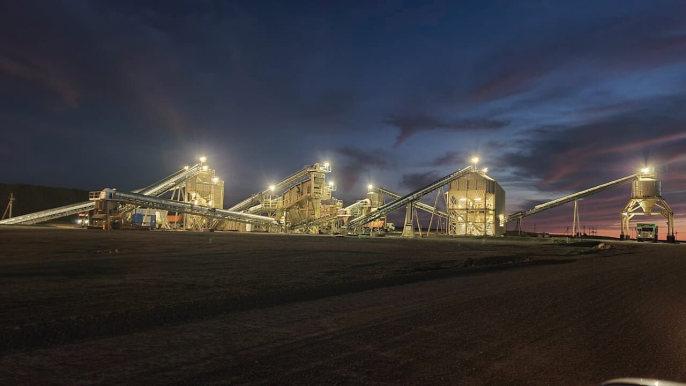
Metso has agreed to acquire Brouwer Engineering, a privately owned company specialising in automation, control systems, and electrical solutions for bulk material handling solutions.
Combining Metso’s extensive experience in bulk material handling equipment and service offerings with Brouwer Engineering’s electrical and control system capabilities will further strengthen Metso’s position to provide a more comprehensive range of solutions to its customers. Additionally, the acquisition strengthens Metso’s bulk material handling services business in Australia, with potential to expand these capabilities globally.
“This acquisition is an important step toward Metso Services' ambition to strengthen our automation and control capabilities. Brouwer’s expertise complements Metso’s capabilities in large mechanical upgrade projects. Together, we will offer comprehensive service packages for bulk material handling equipment upgrades and ensure fast commissioning. We are delighted to welcome our new colleagues to Metso, and we look forward to starting a journey of collaboration to become our industry’s preferred services provider,” stated Sami Takaluoma, president, services business area, Metso.
Brouwer Engineering has extensive design and development experience with all key software and hardware platforms, and it delivers fit-for-purpose end-to-end solutions using all major PLC, SCADA, and HMI platforms.
“We are excited about the acquisition and the opportunities it will bring. The acquisition is a great opportunity for our employees to leverage their technical expertise and as a part of Metso, our offering can be scaled up globally,” commented Hu Sciberras, managing director, Brouwer Engineering.
| MINING
AFRICAN REVIEW OF BUSINESS AND TECHNOLOGY | SEPTEMBER 2023 www.africanreview.com 48
All Lokotrack mobile crushers in the same crushing process can connect with Metso IC.
Metso has installed more than 8,000 machines globally.
Image Credit: Pilot Crushtec
Image Credit: Metso
WABTEC GOES GLOBAL WITH COLLISION AVOIDANCE SYSTEMS
Wabtec Digital Mine, a provider of innovative mining solutions, has received a series of orders for 3,500 of its new Generation 3 Collision Avoidance System (Gen 3 CAS) from major global mining companies.
“These orders demonstrate the Gen 3 CAS’s value and rapid market adoption since we launched the system in June,” said Nalin Jain, president, digital intelligence for Wabtec. “The Gen 3 CAS is the only solution aligned with the industry’s best practices that also meet the functionality requirements of our customers.”
Gen 3 CAS is designed to improve safety and bolster zero-harm objectives. By minimising the risk of vehicle interactions, the Gen 3 CAS contributes to reduced downtime, increased productivity, and optimised resource utilisation.
Wabtec Digital Mine's Gen 3 CAS offers a range of class-leading advanced capabilities These include predictive beam curving, contextbased definitive voice-based alerts, real-time self-test, superior accuracy via Ultra High Precision Global Navigation Satellite Systems, and an advanced rules and intelligence engine.
The system's brand-new user interface has been designed so that vehicle operators receive appropriate feedback from the Gen 3 CAS.
“We are improving safety and operational efficiency, so we have entered into agreements with several global mining companies who recognise the potential of Wabtec Digital Mine's Gen 3 CAS to transform their mining operations,” said Jain.
“These customers are installing the Gen 3 CAS to enhance their mining fleet's safety standards and performance.”
“We are thrilled that multiple global mining companies have selected Gen 3 CAS for their operations,” remarked Henro van Wyk, vicepresident and general manager of Wabtec Digital Mine. “These deals represent a significant achievement for Wabtec’s Digital Mine team positioning the business as the global leader in mining technology by redefining the meaning of true collision avoidance. Mining operations using the Gen 3 CAS will achieve new levels of safety, efficiency, and productivity across their mining operations.”
A new, easier-to-use interface is an obvious addition to the Gen 3 CAS. This is complete with context-based alerts built with the latest human factor design. It replaces the ‘beeps-and-buzzer’ analog technology and enables operators to work without distraction while also responding instantaneously to audible alerts.
Komatsu has released the Operator Guidance Monitor (OGM) a digital tool designed to optimise the efficiency of rigid dump trucks, and reduce unit production costs. Its easy-to-use, clear programme allows users to set KPI targets and adjust operating parameters, to ensure Komatsu trucks operate in the most efficient way possible.
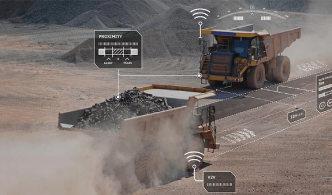
By allowing operators to control and optimise their work in real time, the tool helps raise and refine skills. Together, this allows for high fuel savings, enhanced productivity and increased safety.
Marek Skrzydel, quarry manager at Heidelberg Materials, remarked, “This system allows us to analyse data in real time and we can analyse production and discuss the achieved goals by operator on an ongoing basis.”
Customers can quickly set parameters such as payload, planned duration and fuel consumption for each work cycle, idle time, and production (tonnes per hour), target by loading and dumping location. The OGM screen also shows real-time warnings for dangerous operating events Thanks to a unique login ID, operators’ performance can be analysed individually.
Can-bus data from the machine's operation are sent automatically and the user has access to them via a web-based dashboard. The data can be filtered by date, machine, shift, operator and loading and dumping locations.
Wouter Boon, telematics specialist at Komatsu Europe, commented, “Operator guidance monitor is one of the new digital Komatsu solutions to support our customers with their daily quarry operation Operator guidance monitor gives a possibility to set visualised KPI for the operators and follow up and adjust if needed in real time.”
With the system, each operator has their own account and can log into the tool’s 8’ monitor installed inside the cabin before starting work. The system will then automatically detect and display the haul road KPIs, according to which the user adjusts the pace and dynamics of the machine’s work. Each operator can follow up on individual KPIs as optimal values when loading, transporting and unloading material.
Afrocet Montgomery Exhibitions & Events Ltd..........9 Afrocet Montgomery Exhibitions & Events Ltd......13 Balkrishna Industries Ltd..................................................52 Bell Equipment Group Services (PTY) Ltd....................2 Eko Hotel and Suites..........................................................37 Jessop & Associates (Pty) Ltd..........................................29 Metalgalante S.p.A.............................................................39 Starlinger & Co Gesellschaft m.b.H...............................15 Advertiser’s Index MINING | SOLUTIONS www.africanreview.com 49 SEPTEMBER 2023 | AFRICAN REVIEW OF BUSINESS AND TECHNOLOGY
The capabilities of the new system drive performance and safety improvements
Image Credit: Wabtec Digital Mine
KOMATSU’S DIGITAL SOLUTION TO SWELL SAVINGS AND ENHANCE SAFETY
Cause for hope amid falling fintech funding
In the first six months of 2023, the global fintech market struggled, according to KPMG’s Pulse of Fintech, with total funding and the number of deals dropping. Specifically, global funding declined from US$63.2bn across 2,885 deals in the first half of 2022, to US$52.4bn across 2,153 deals in the same period of 2023.
Global macroeconomic concerns – such as around high inflation and rising interest rates – is seen to be dampening investor enthusiasm with geopolitical tensions and tech sector challenges also contributing to the market drop. KMPG also pointed to that collapse of several US banks in 2023 as a cause, suggesting many investors opted for a ‘wait and see’ model as a result.
Nevertheless, despite these issues, KPMG has pointed out that not all indications from the market are negative.
For instance, a number of sectors attracted robust funding during the first half of 2023 with supply chain and logistics-focused fintechs attracting US$8.2bn. This was well above the 2019 annual record of US$5.5bn. In addition, green fintech also posted a strong period, with the recorded US$1.7bn already slightly ahead of 2022 results (US$1.5bn).
Judd Caplain, global head of financial services at KPMG, remarked, “It wasn’t a surprise to see fintech funding decline in the first six months of 2023, given the enormous headwinds pressuring the market at the moment. But the
long-term business case for many subsectors within fintech remains very strong – particularly for sectors like payments, insurtech, and wealthtech. Once market conditions begin to even out, funding will likely rebound – if not to the record level experienced in 2021.”
Breaking down EMEA
According to KPMG’s research, total fintech funding in the EMEA region was US$11bn in the first half of 2023 – less than half of the US$27bn in the second half of 2022. Moreover, investment was heavily centred on specific countries such as UK, France, and Switzerland. In Africa specifically, South Africa, Nigeria, Egypt and Kenya dominate fintech funding and represent 1% of total invested volume between them.
The tailwinds being experienced in mid-2023 is leading the continent to share a comparable path in line with most global market indicators, however, this is at a less pronounced pace.
Auguste Claude-Nguetsop, partner & head, banking sector advisory services, KPMG Southern Africa, remarked, “In fact, innovation and investment in the region continue to be driven by the triple need to support greater financial inclusion, ensure efficient peer-to-peer payments within and across borders, and deliver secure remittances.”
The discrepancy in the regulatory framework is increasingly serving as an indicator of the growth rate differential between markets, with
the least regulated market showing the highest level of innovation, growth, and investments.
“We are also seeing regulators setting up Fintech Units, like the one set up by the SARB in 2017, serving as a sand-box unit where market innovations are stress-tested and alignments are made between the fast pace of the innovation in the sector and the level of sophistication of the regulatory response,” continued Claude-Nguetsop.

As outlined by KMPG, in regards to blockchain and digital assets, the interest is clearly not slowing down despite the increased scrutiny from regulatory bodies. There are noticeable increased efforts by investors and banks to re-assess the use cases and business cases of the technology to ensure the promised financial benefits could be reached at a reasonable cost. Leading local banks are looking to be followers, leaving the first moving advantage to Tier-1 international banks and leveraging consortium-led platforms to reduce their product origination and go-to-market costs. More specifically, there is an observable growing interest in blockchain-used cases related to ESG services or helping to increase customer loyalty and engagement, in addition to the standard interest for tokenised financial assets.
KPMG projects the fintech market revenue estimated on the continent at US$65bn in 2030, representing more than 13x the current figure. This remains fully achievable if
better policy alignment across countries are prioritised and robust efforts are made to define common standards to enable fintech companies to scale their solutions across borders.
Rebound in sight?
Currently, there is no end to the geopolitical and macroeconomic uncertainties and, as a result, fintech funding in the second half of 2023 is expected to remain relatively soft, KPMG reported.

However, if the market does stabilise, a cautious rebound in fintech funding could be on the horizon. The most promising area of interest heading into the second half of the year is artificial intelligence (AI), with companies around the world looking to leverage this innovative tool to improve operational efficiencies.
Anton Ruddenklau, global fintech leader at KPMG, surmised, “Looking forward, it is an area that is attracting enormous interest and funding – particularly in areas like cybersecurity, regtech, and wealthtech. Over the next six months, we’ll start to see an uptick in investors embracing the space as corporates demand ways to leverage generative AI effectively.” ■
AFRICAN REVIEW OF BUSINESS AND TECHNOLOGY | SEPTEMBER 2023 www.africanreview.com 50
According to KPMG, an independent group of professional services firms providing audit, tax and advisory services, the long-term business case for many fintech subsectors remains strong despite a decline in global funding in 2023.
FINTECH | REPORT
Auguste Claude-Nguetsop, partner & head, banking sector advisory services, KPMG Southern Africa.
Image Credit: KPMG
Image Credit: Adobe Stock




































 Mid-term growth is projected to accelerate to 5.1% in 2023 and 5.8% in 2024.
Mid-term growth is projected to accelerate to 5.1% in 2023 and 5.8% in 2024.


 Goodwell invests in SOUK Farms
The deal will accelerate the delivery of e-motos.
Goodwell invests in SOUK Farms
The deal will accelerate the delivery of e-motos.










 Piovan team members will be on site to discuss technologies and solutions.
Piovan team members will be on site to discuss technologies and solutions.




















 TANESCO, Gridworks advance transmission project
RVE has developed two rural distribution networks serving more than 75,000 people in 38 villages.
Image Credit: Meridiam
Image Credit: Trina Solar
TANESCO, Gridworks advance transmission project
RVE has developed two rural distribution networks serving more than 75,000 people in 38 villages.
Image Credit: Meridiam
Image Credit: Trina Solar




















 Volvo hopes to see a shift in favour of customers switching to emission-free options.
Image Credit: Volvo CE
Image Credit: Tatu City
Volvo hopes to see a shift in favour of customers switching to emission-free options.
Image Credit: Volvo CE
Image Credit: Tatu City


















 The new equipment complements the existing mining fleet.
Image Credit: Marula Mining
Image Credit: Adobe Stock
The new equipment complements the existing mining fleet.
Image Credit: Marula Mining
Image Credit: Adobe Stock













 Image Credit: ASP Fire
Michael van Niekerk is the CEO of ASP Fire.
Image Credit: ASP Fire
Michael van Niekerk is the CEO of ASP Fire.







